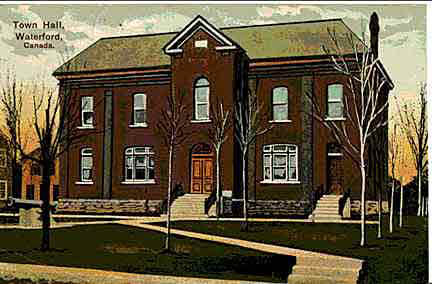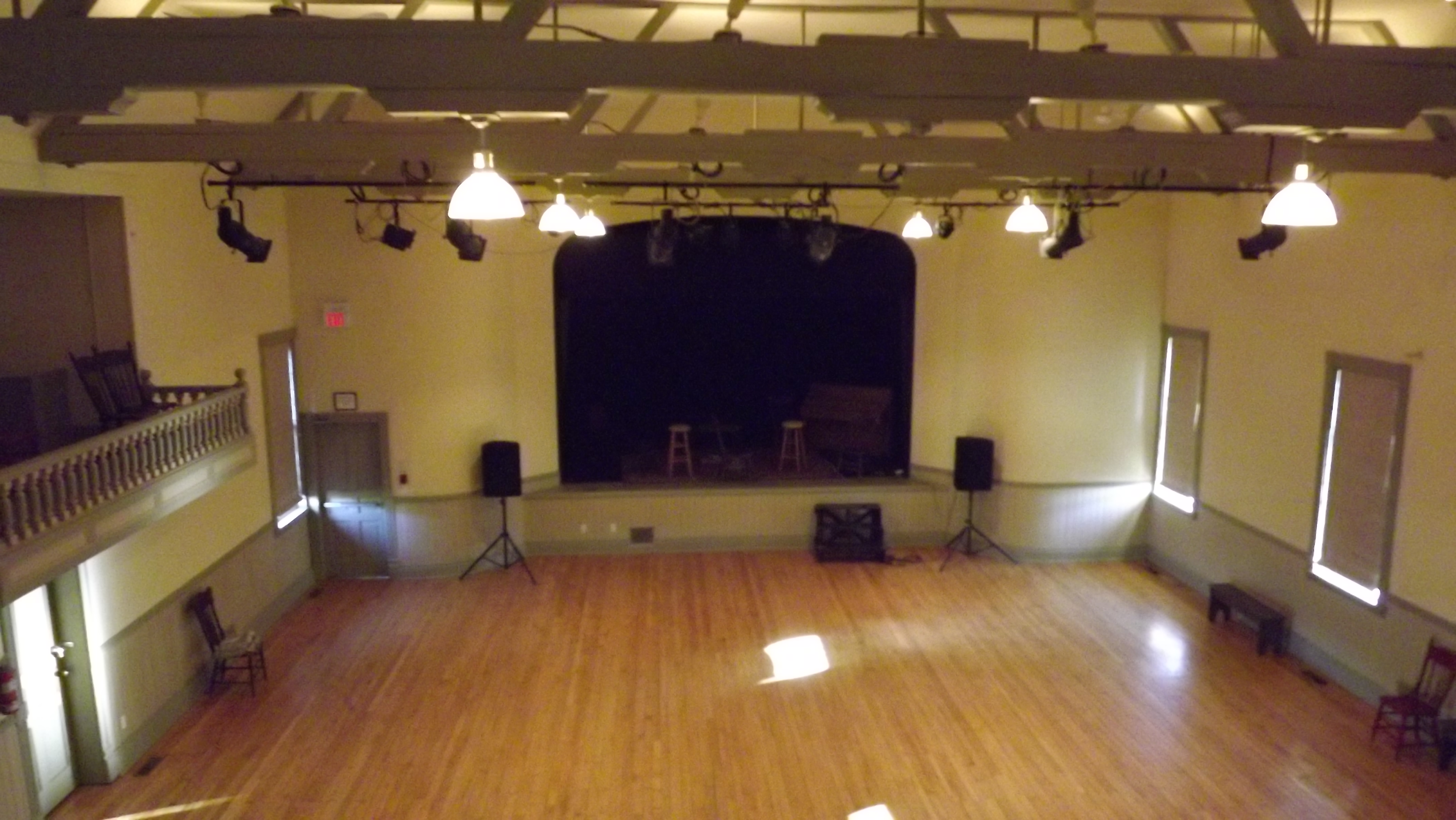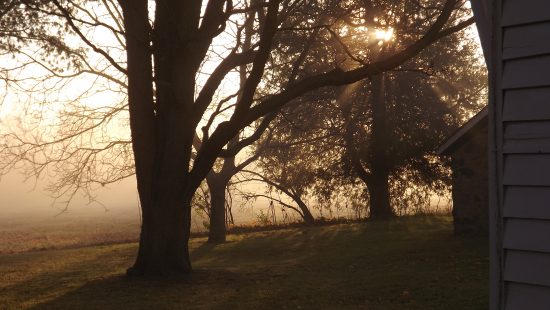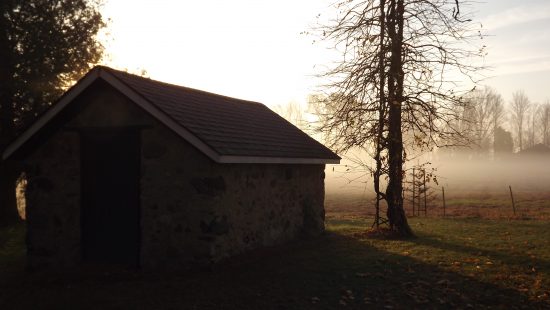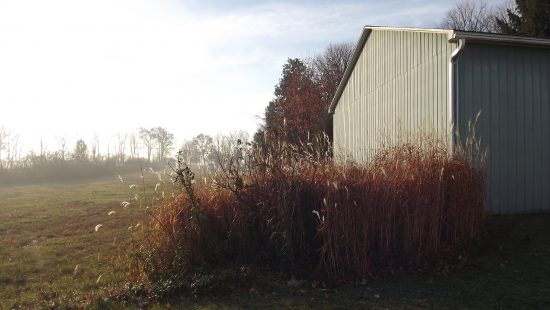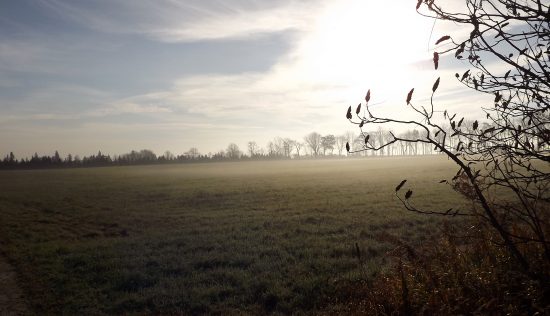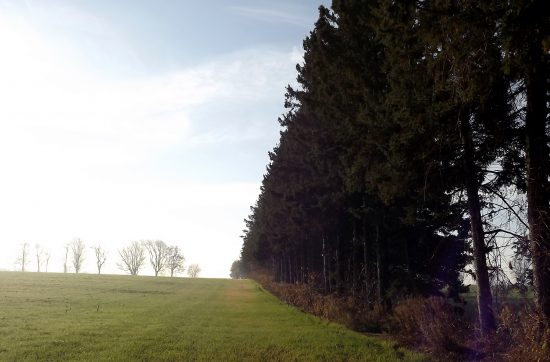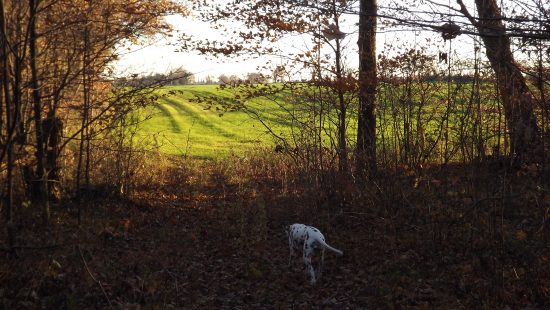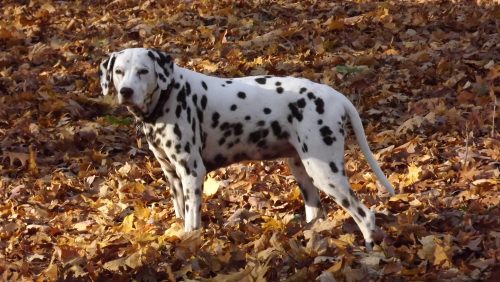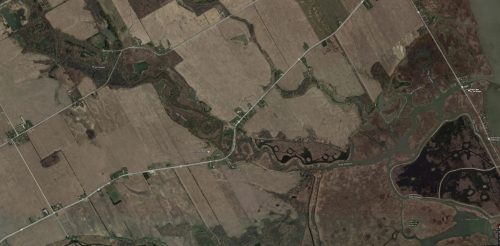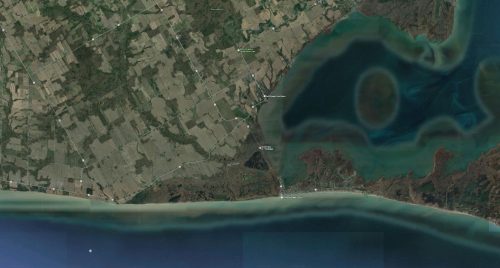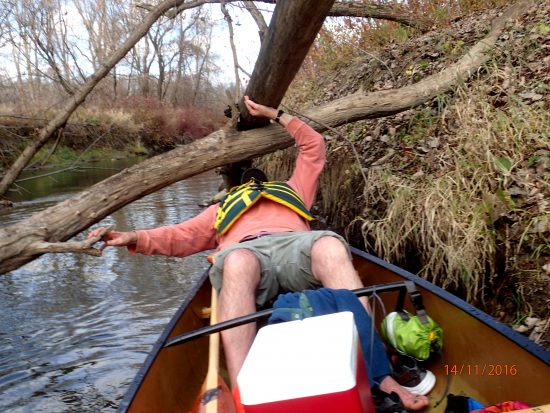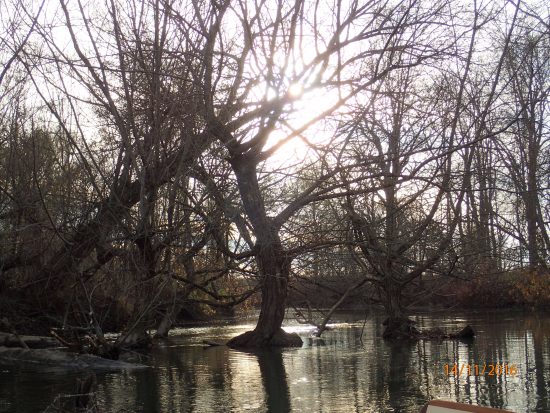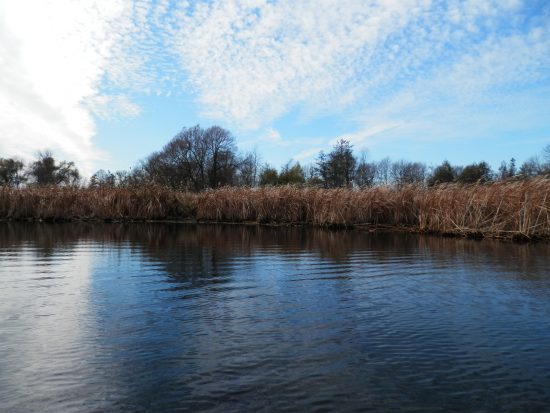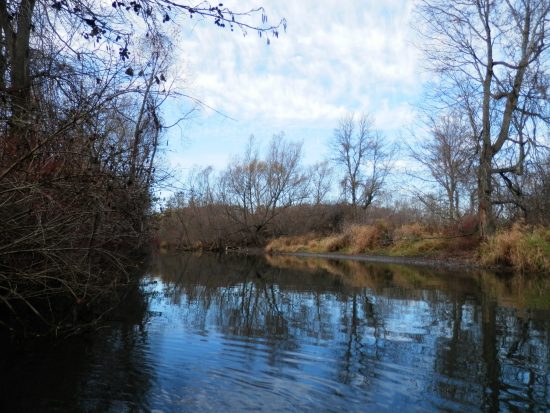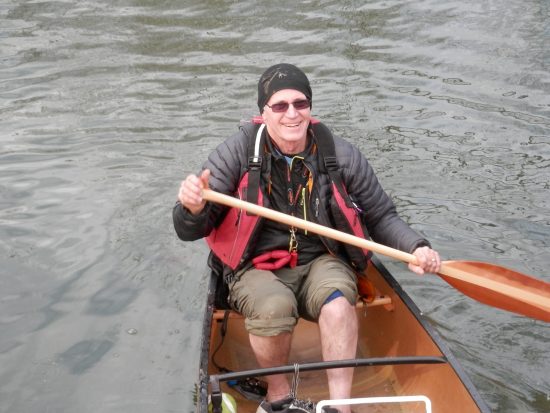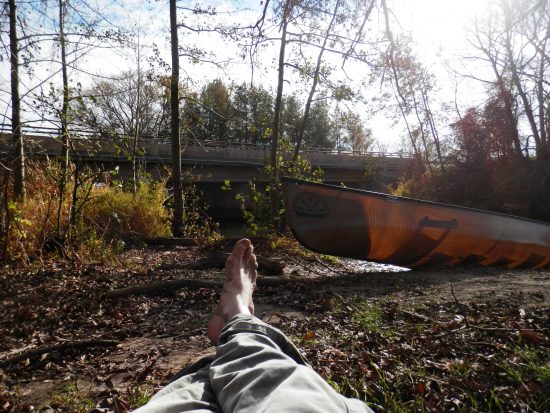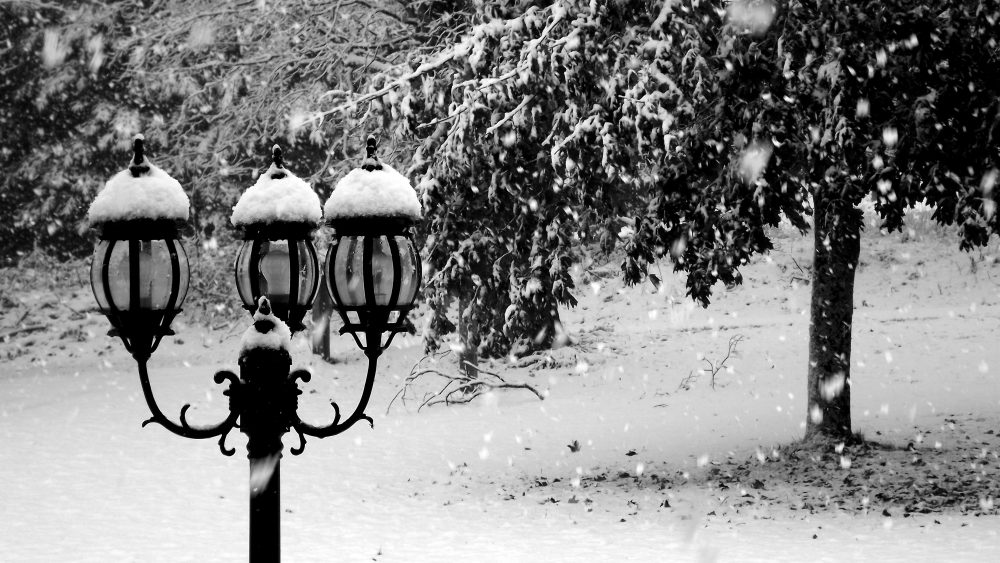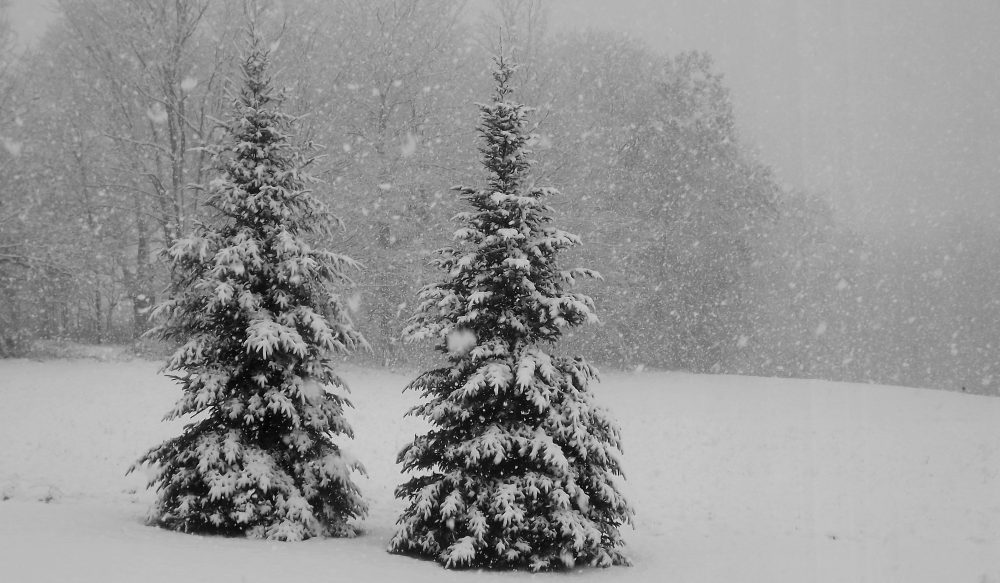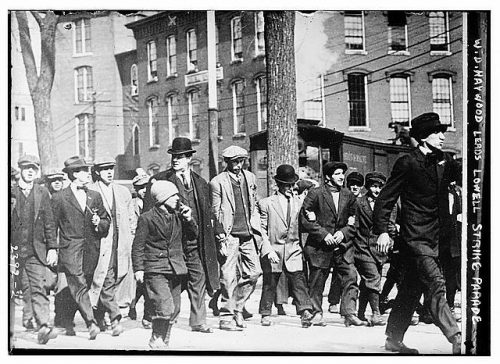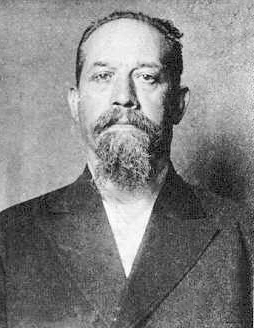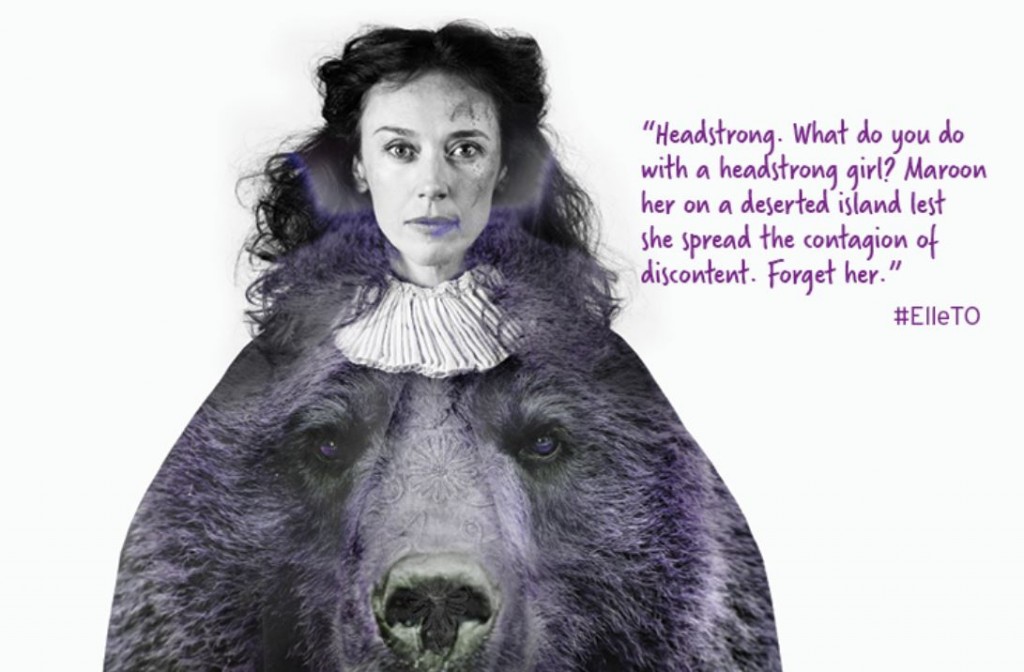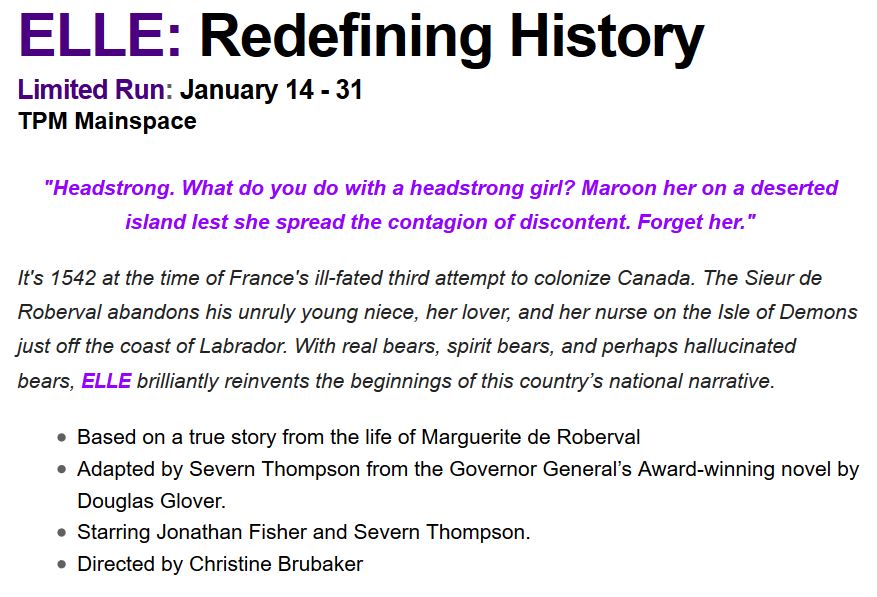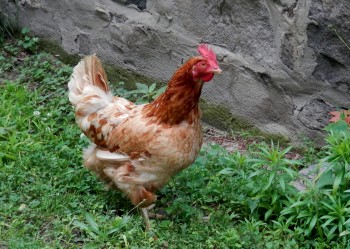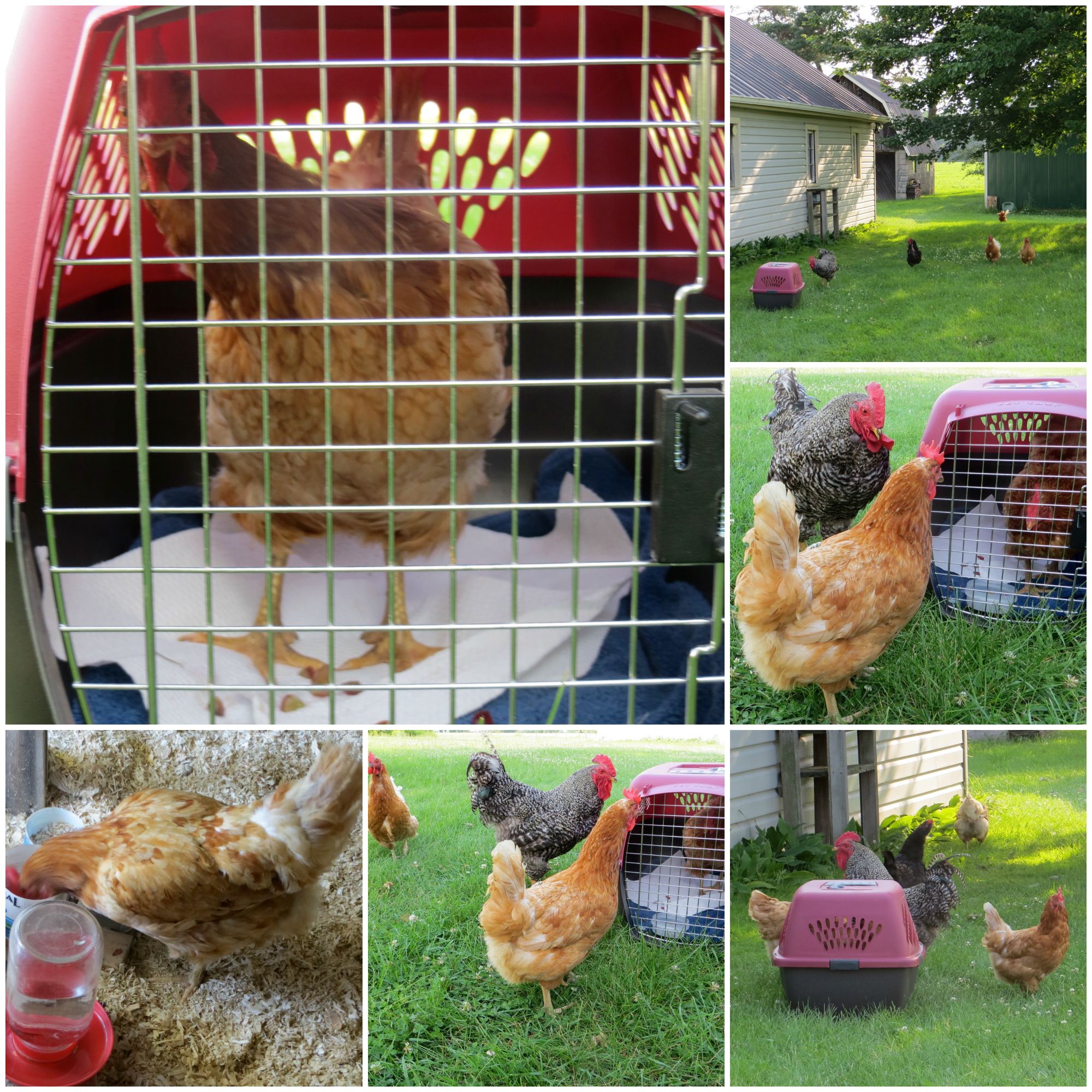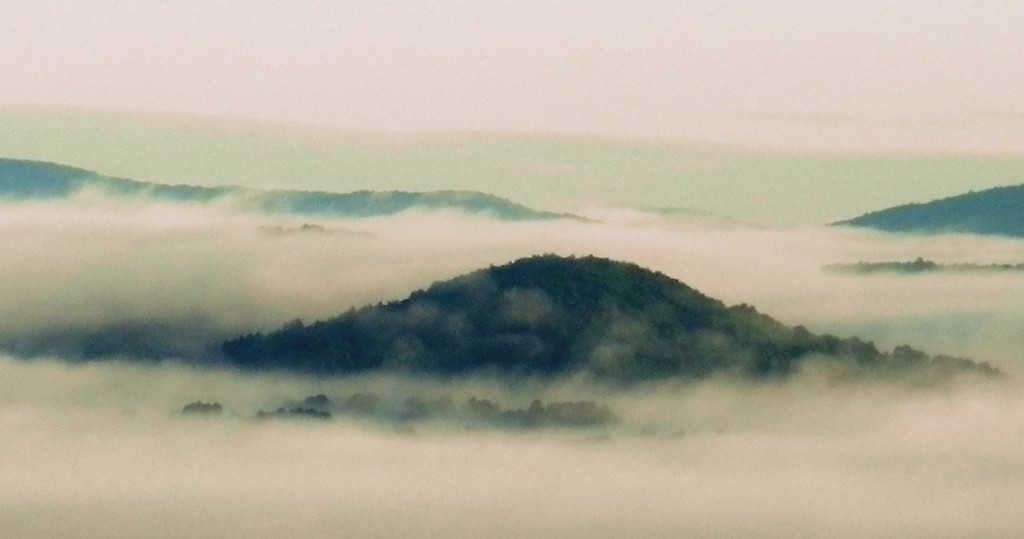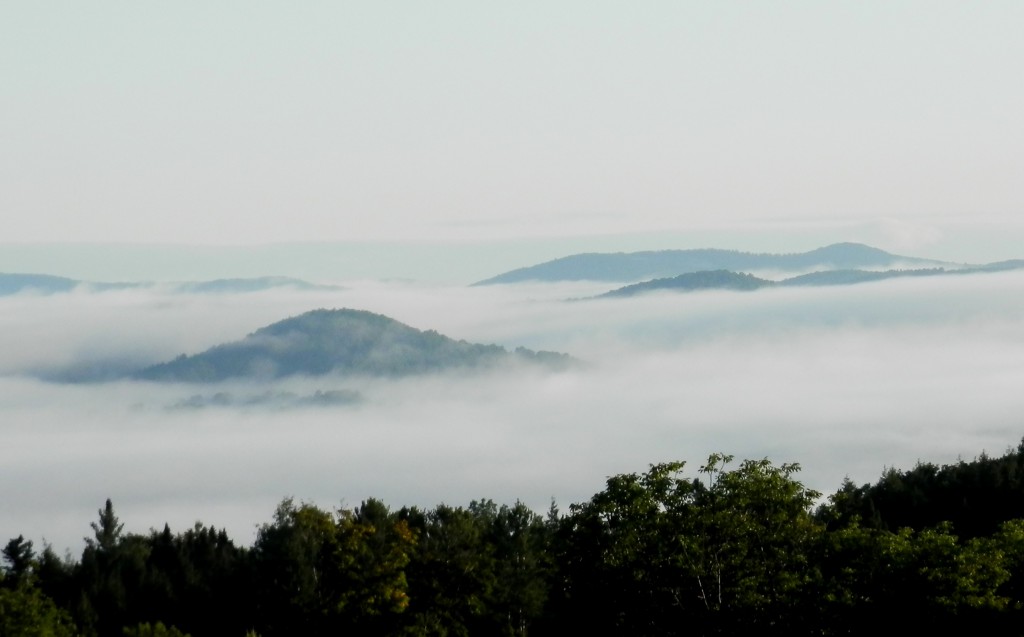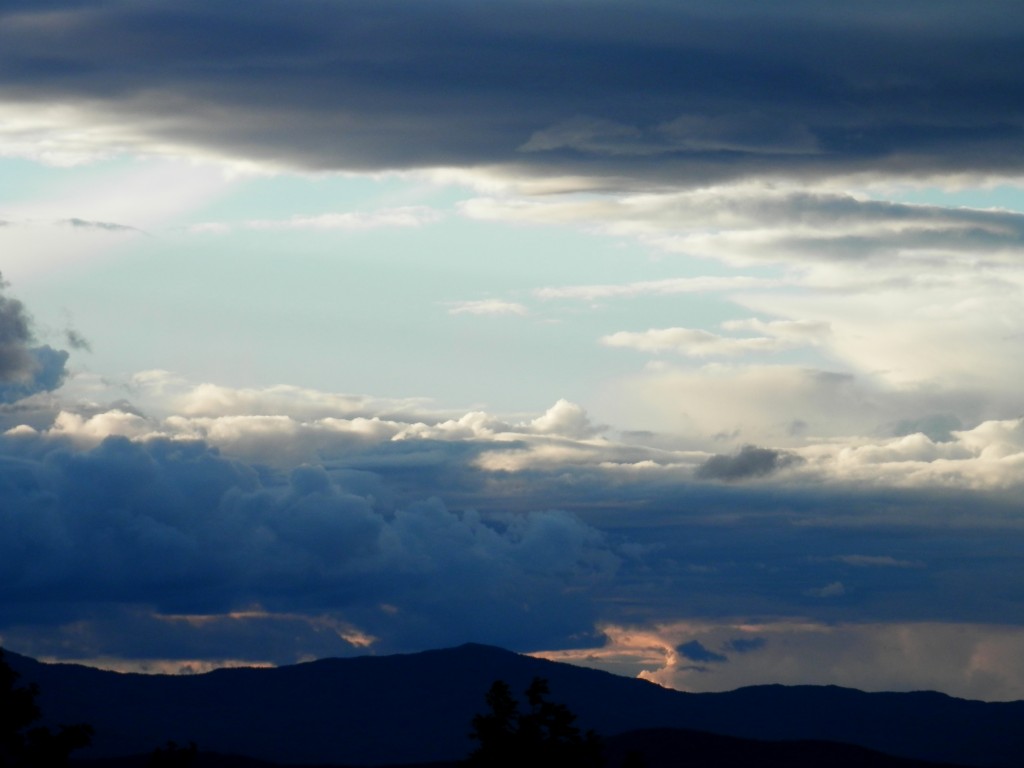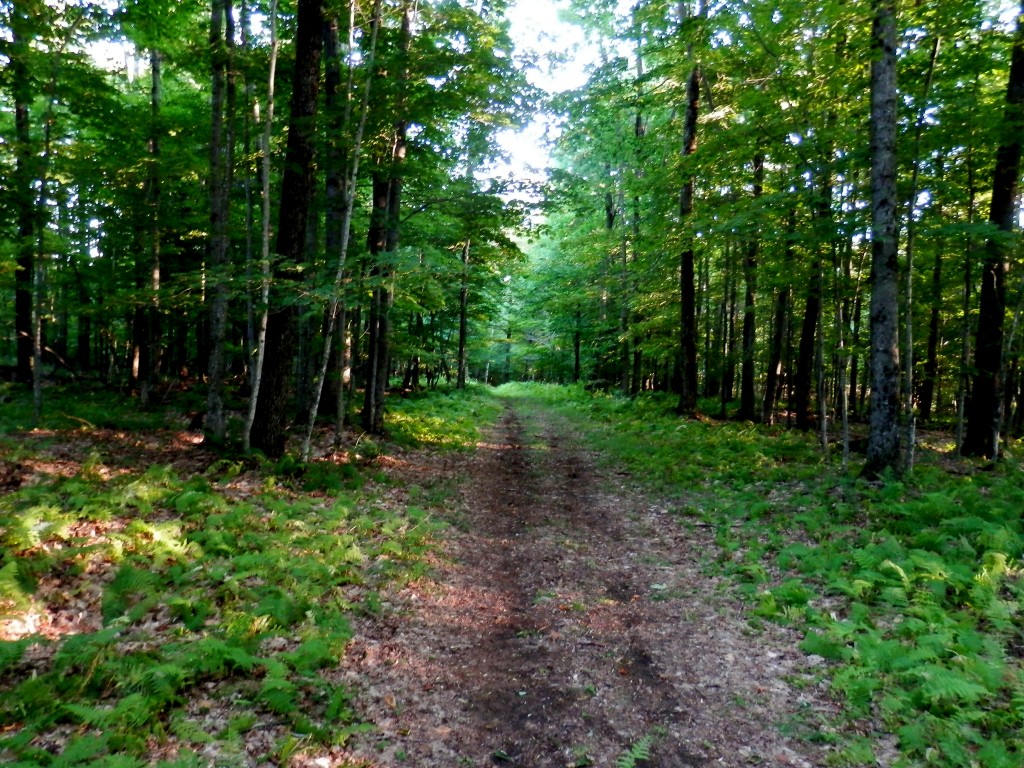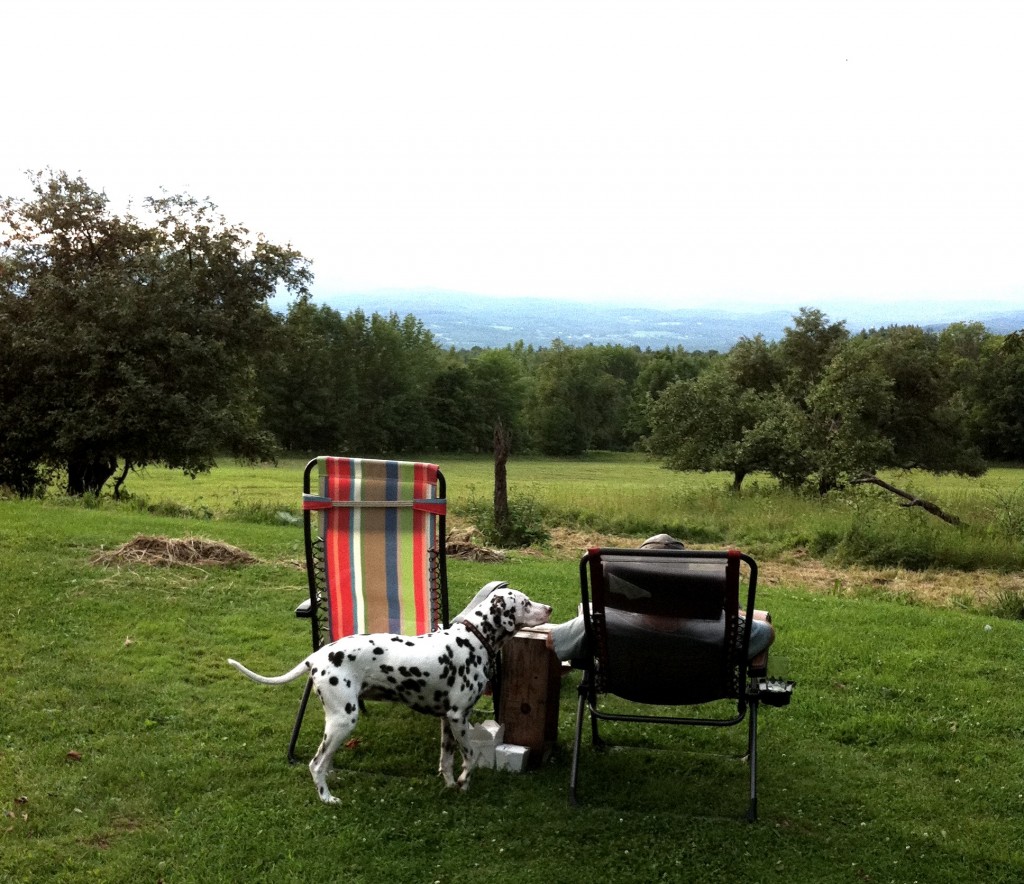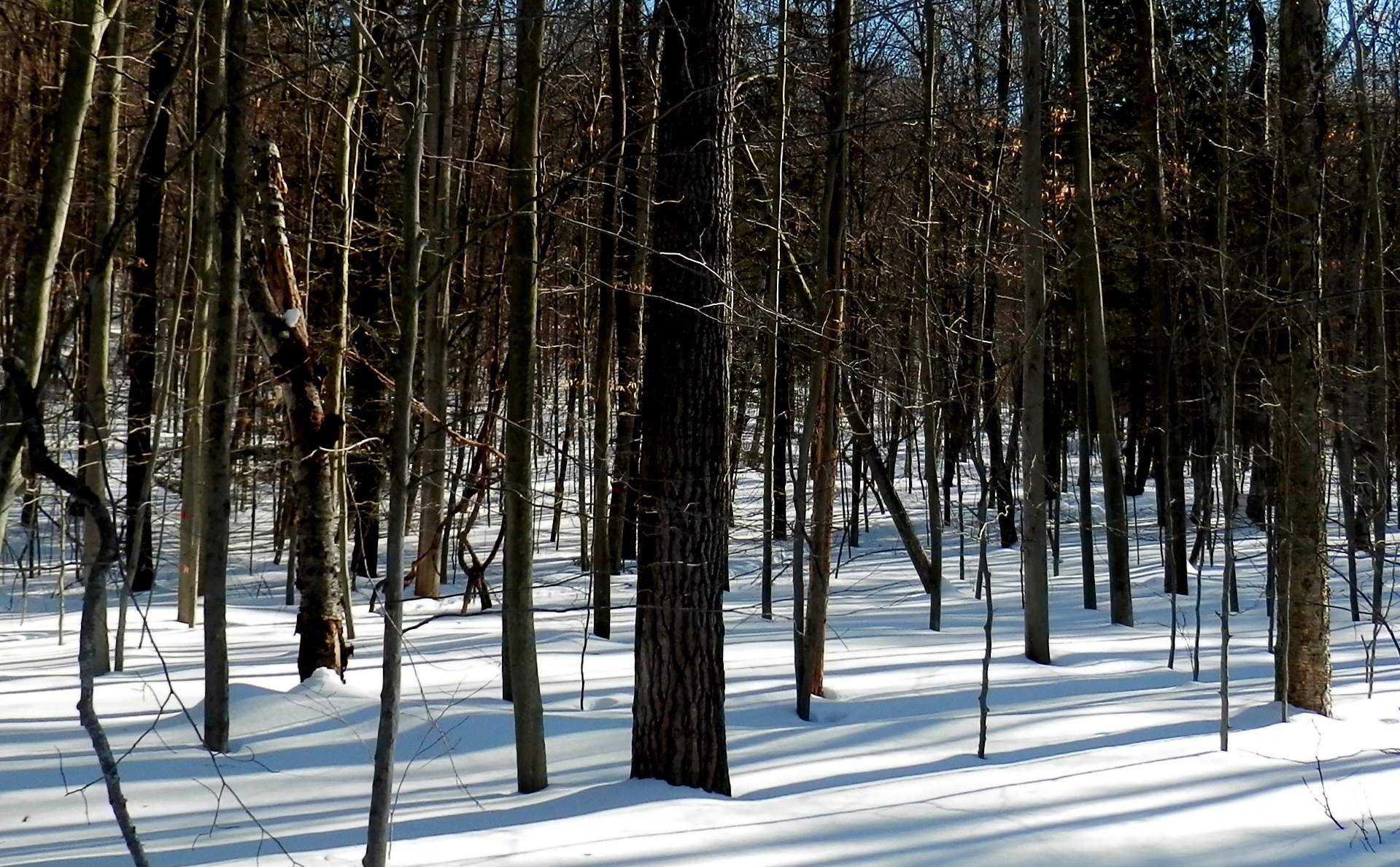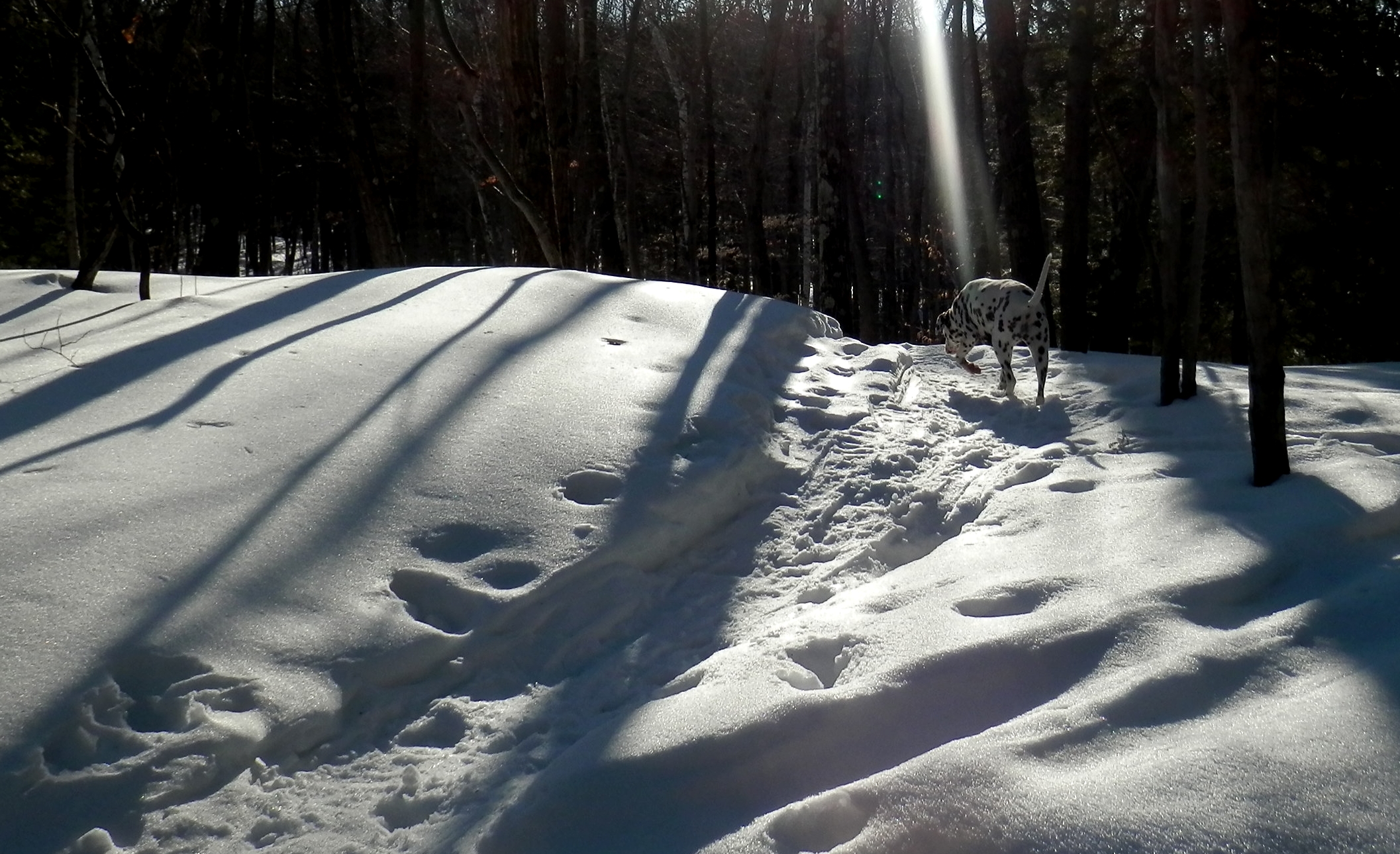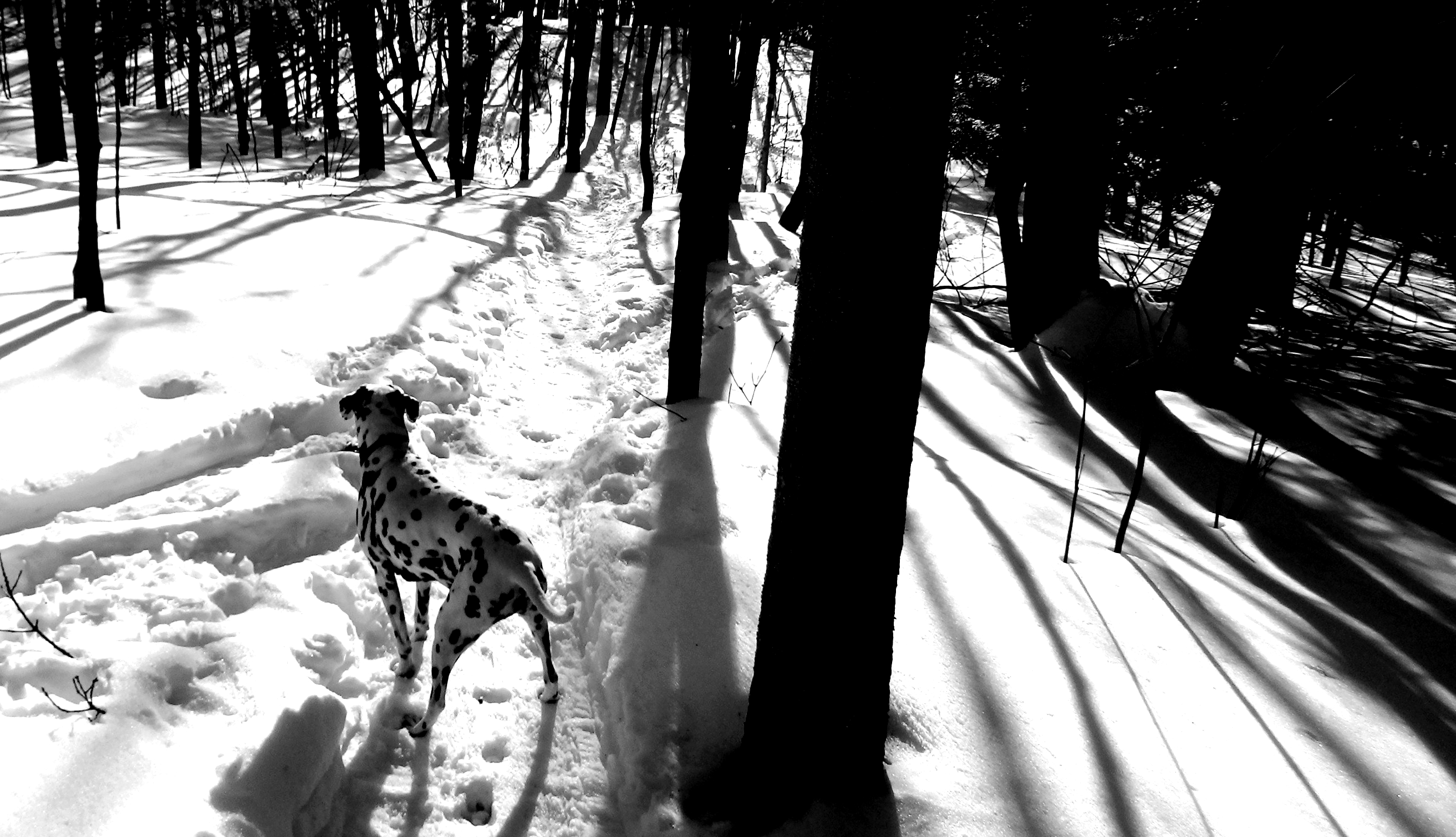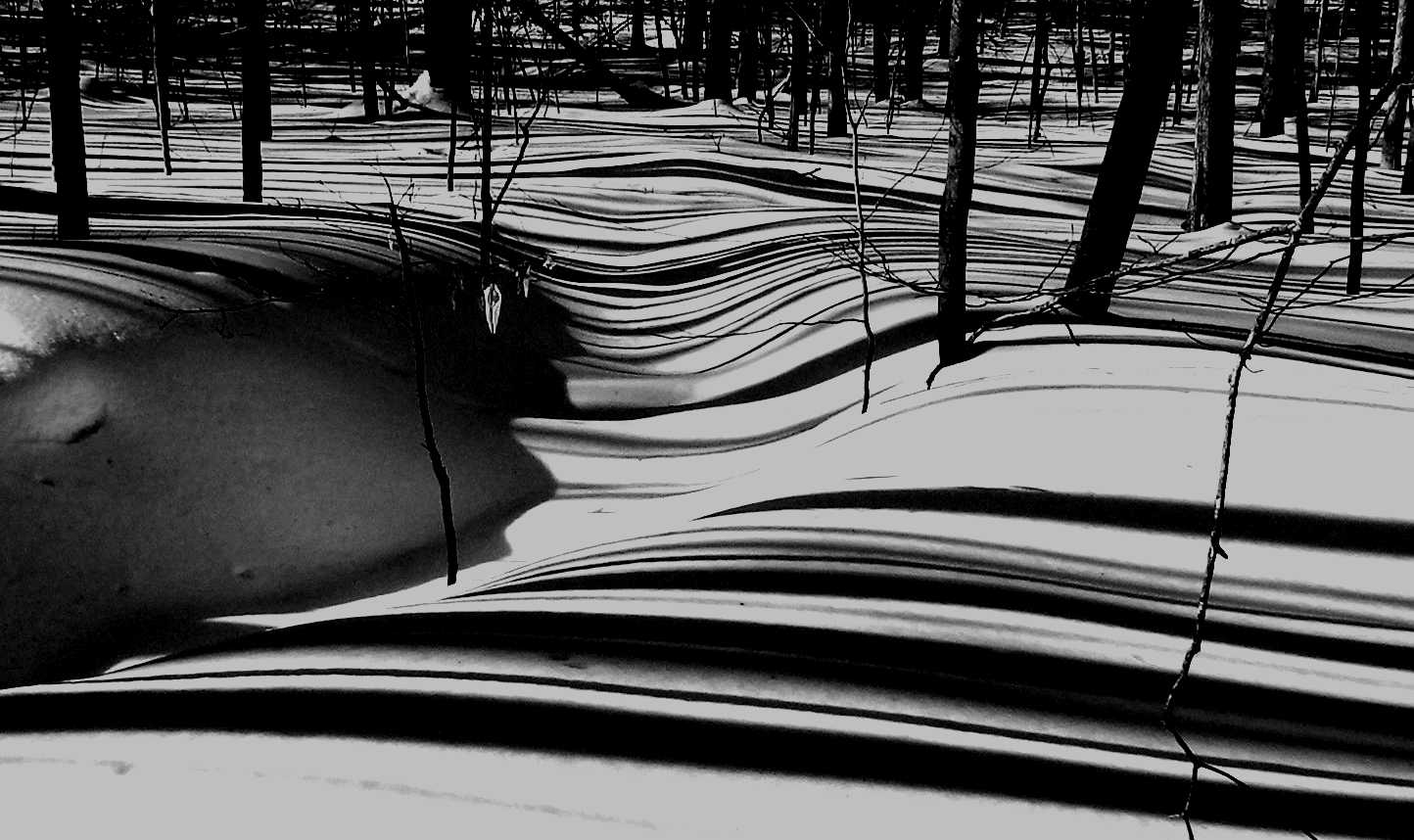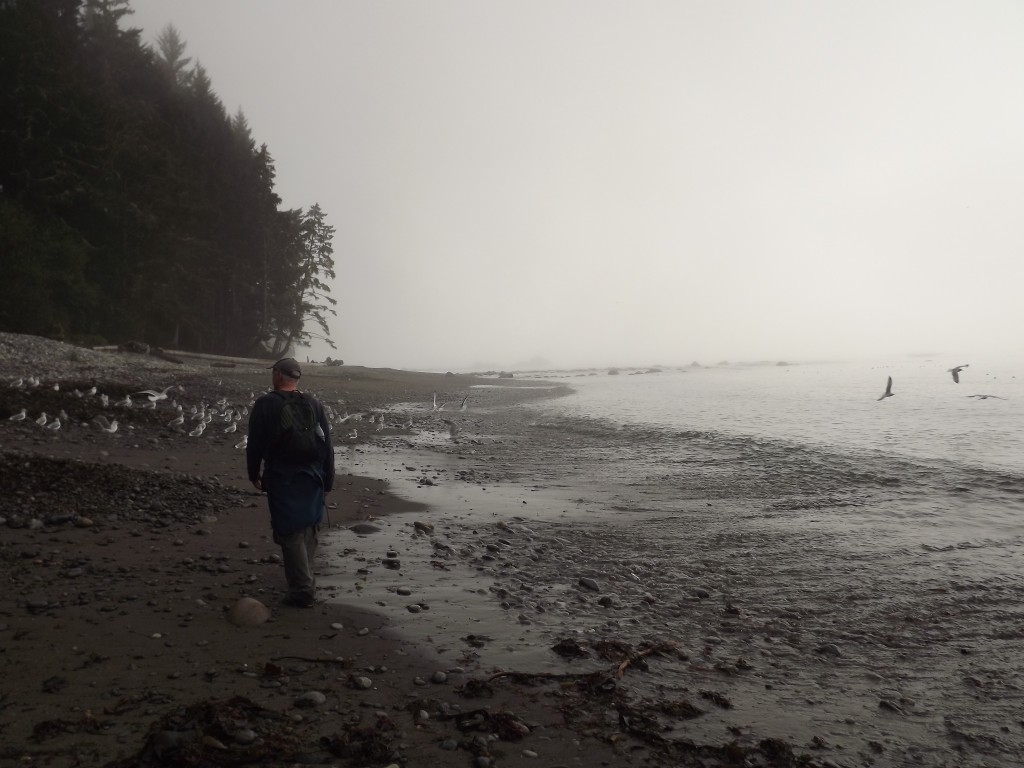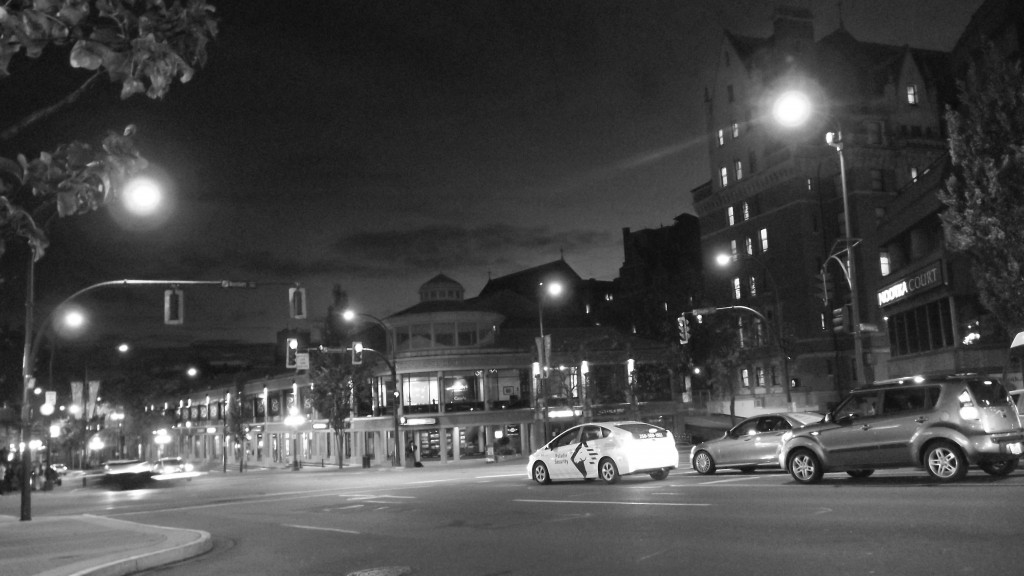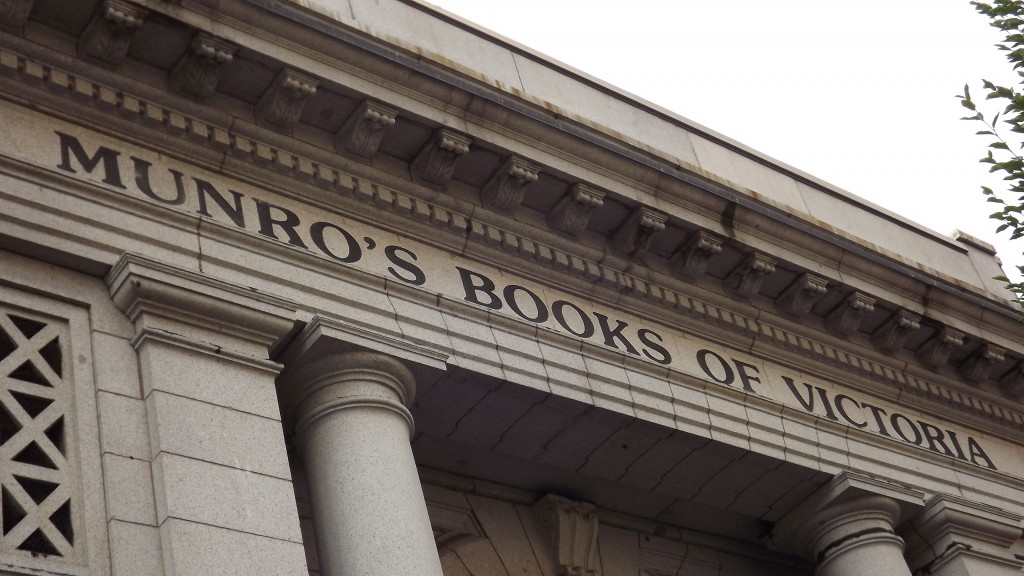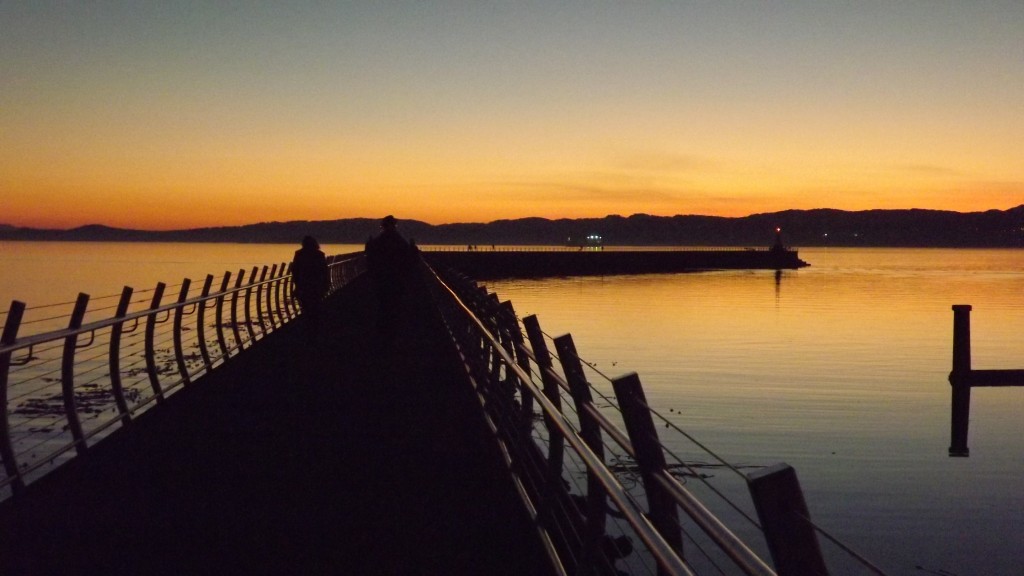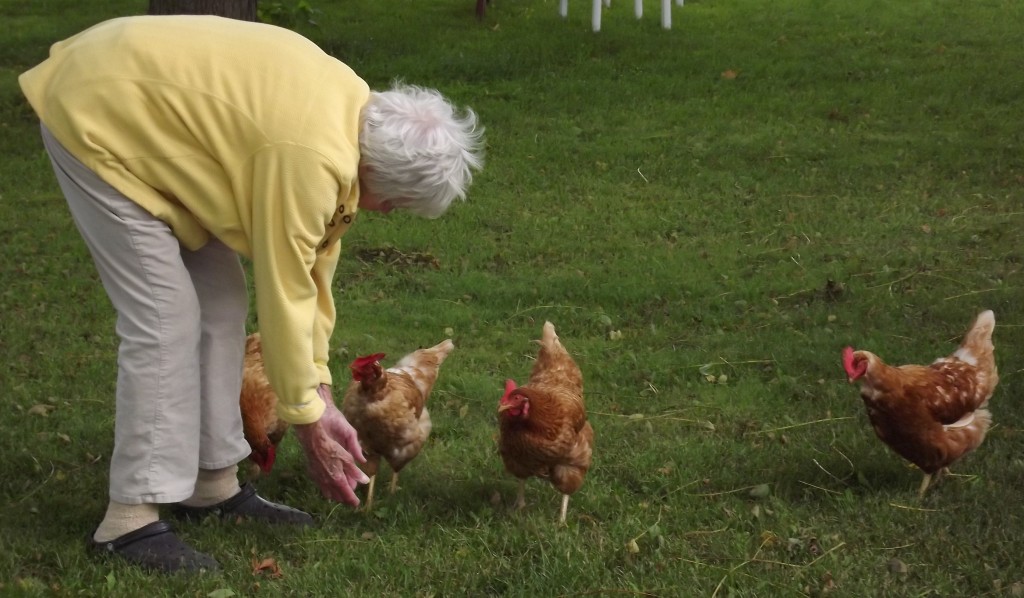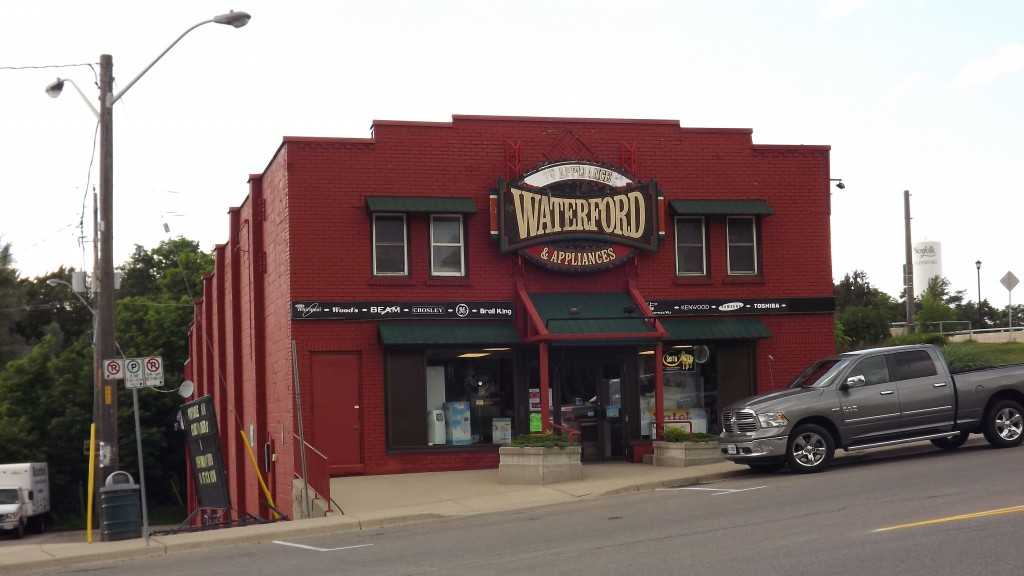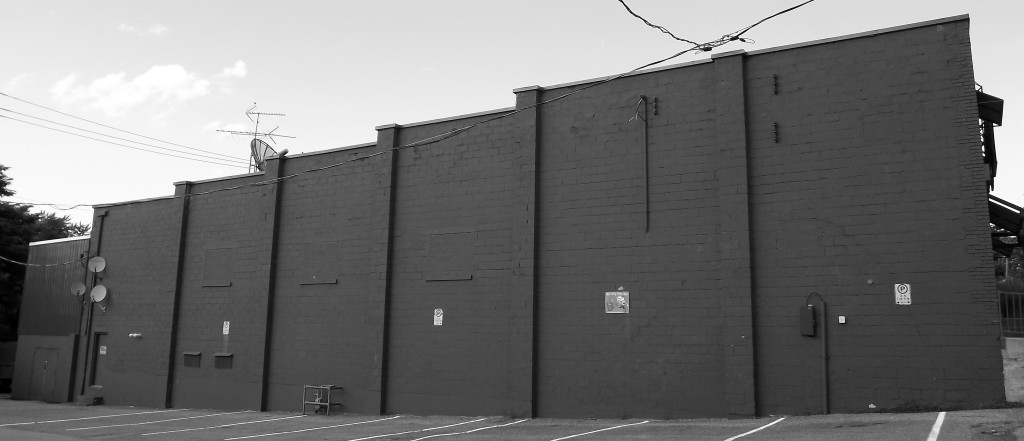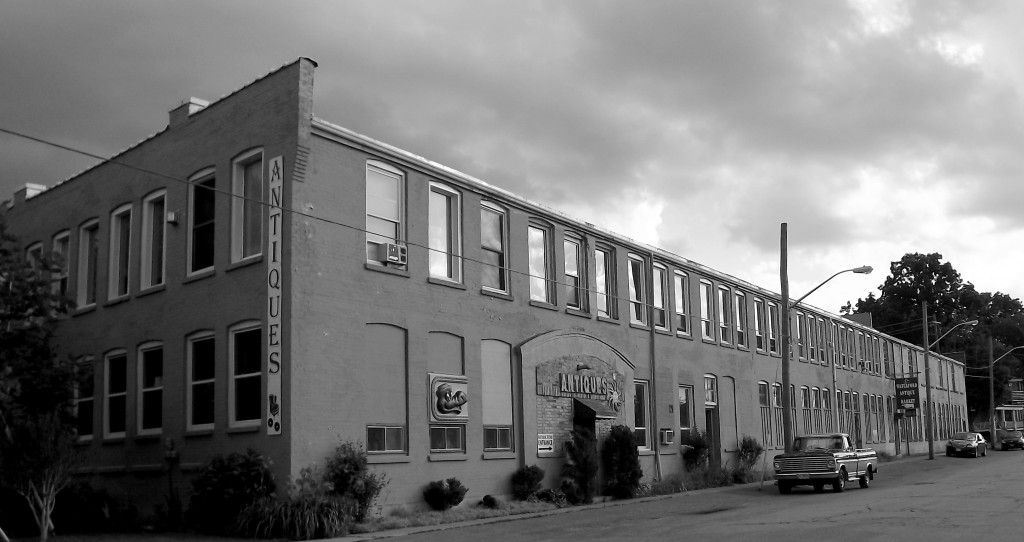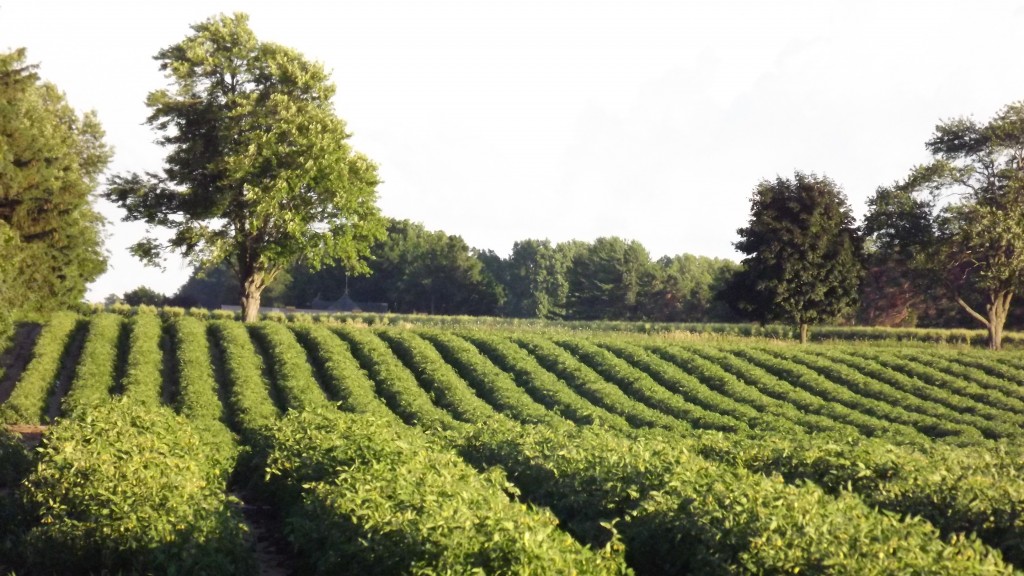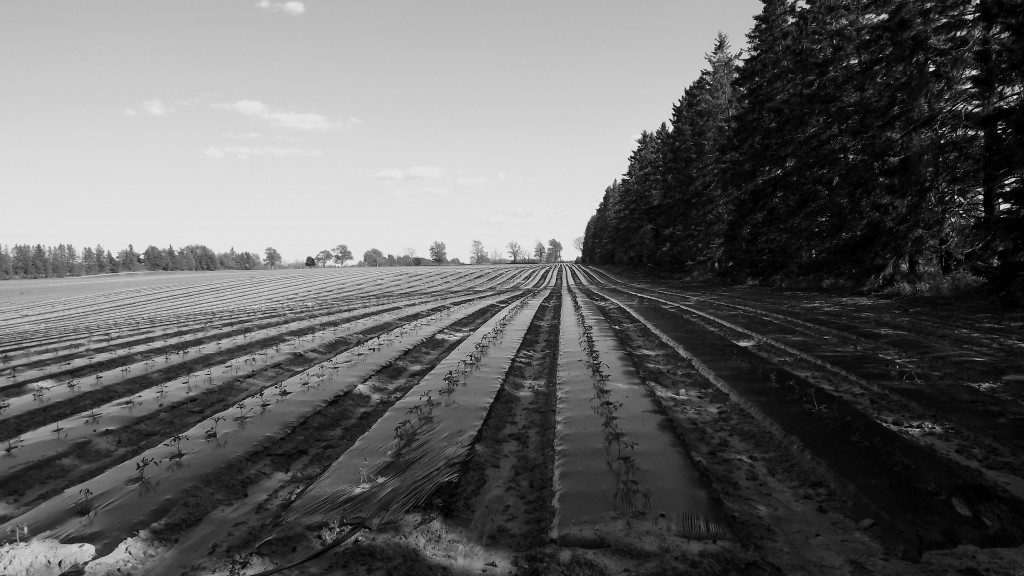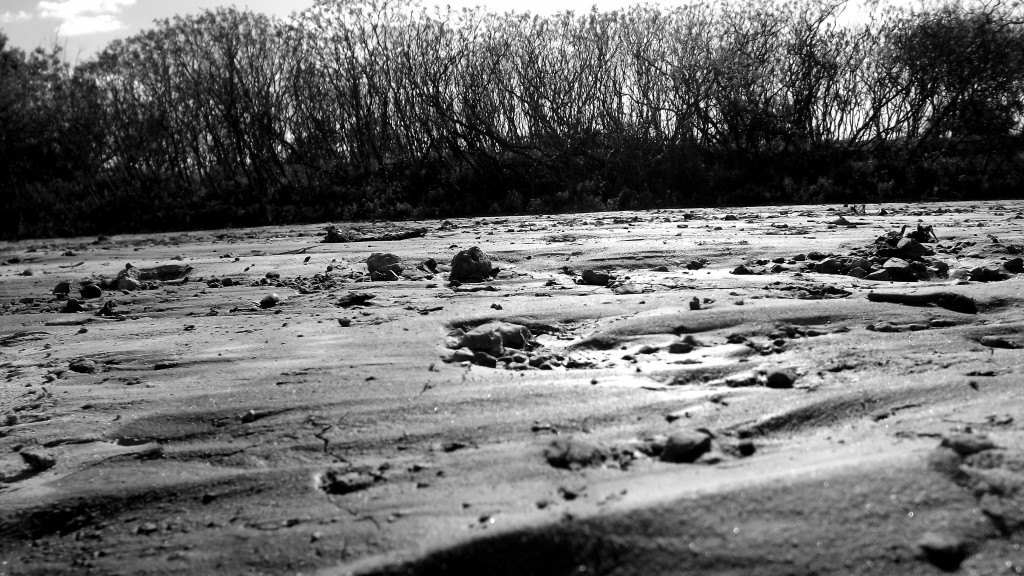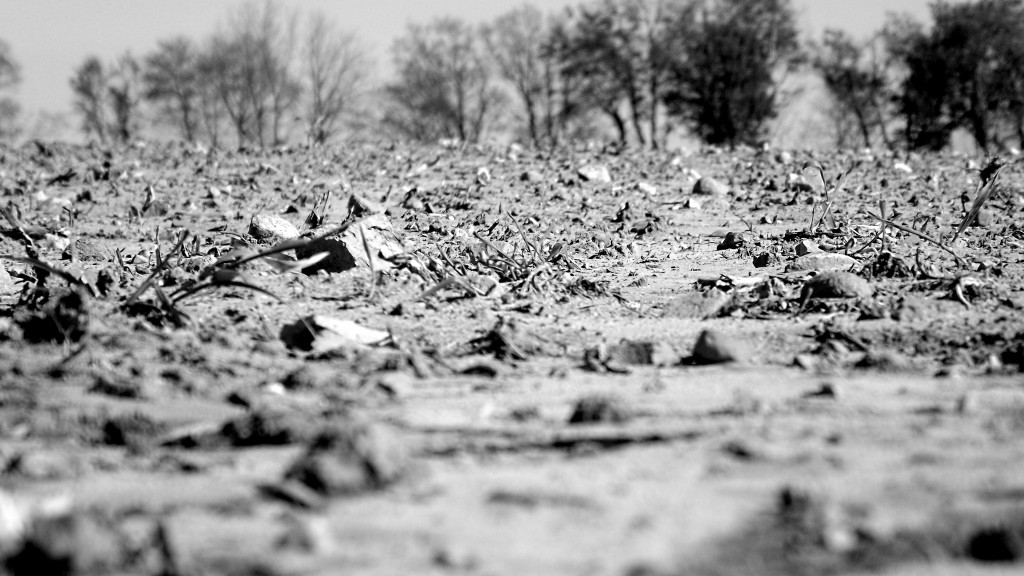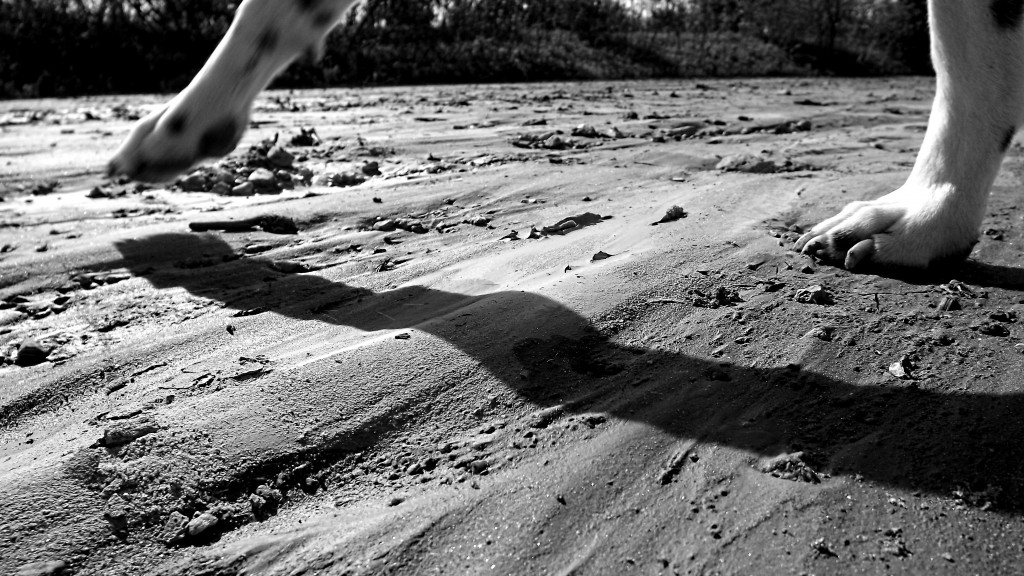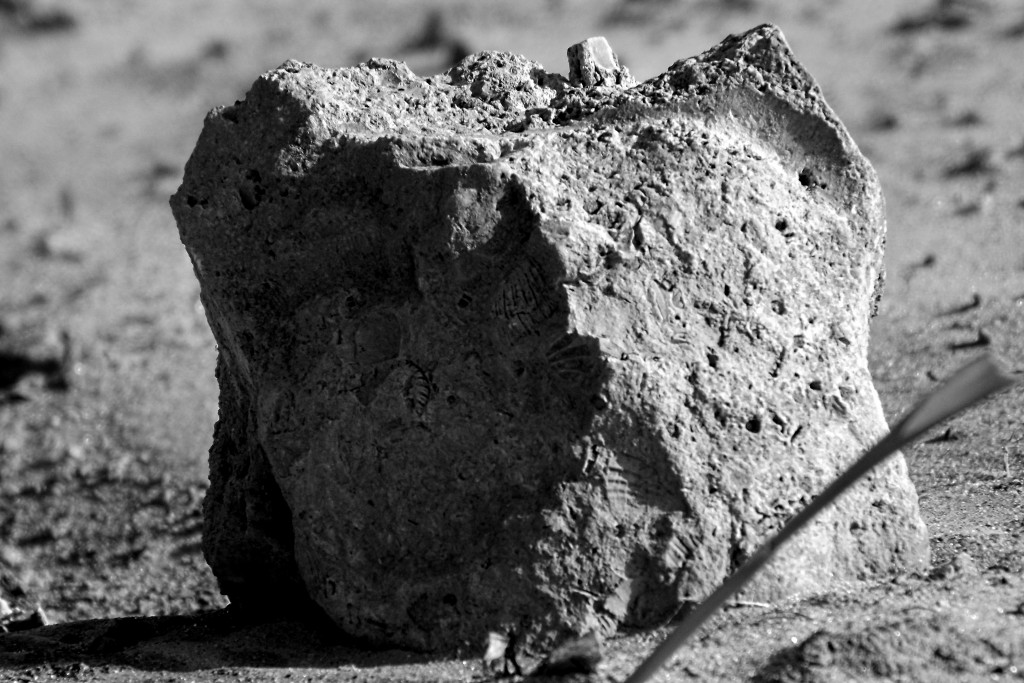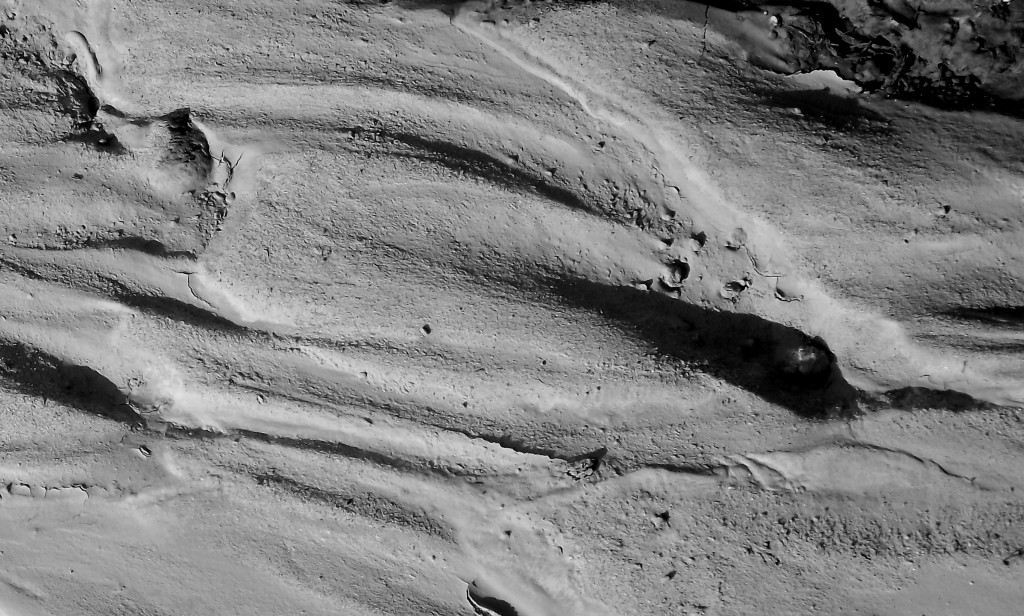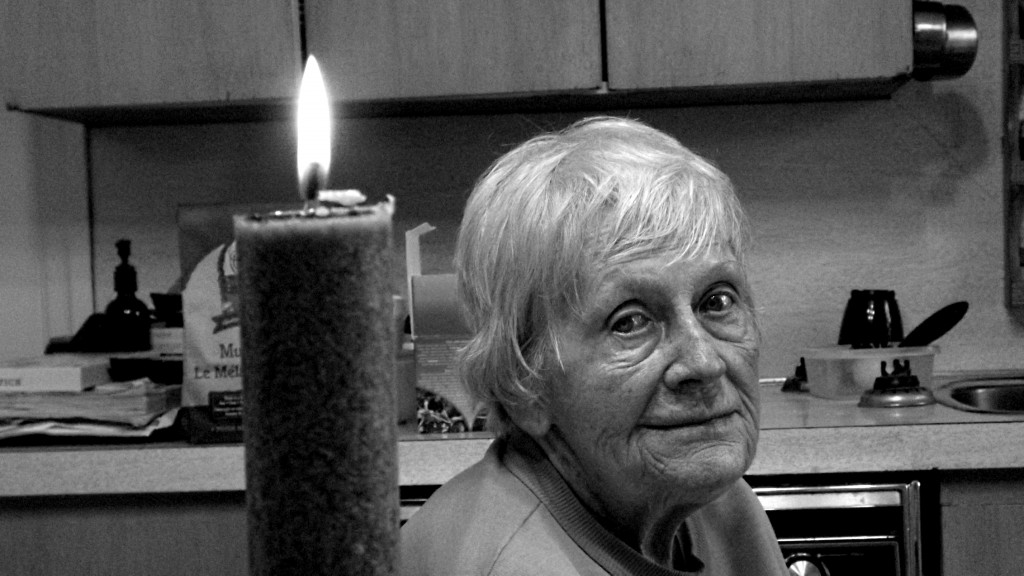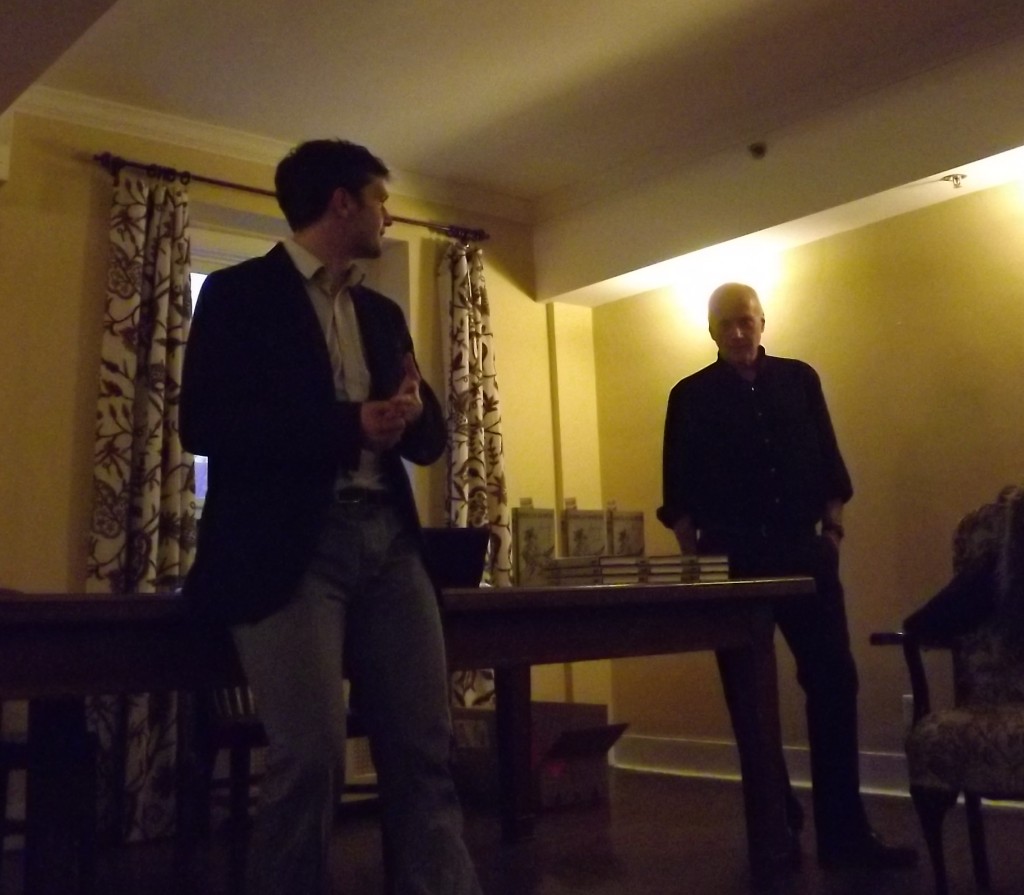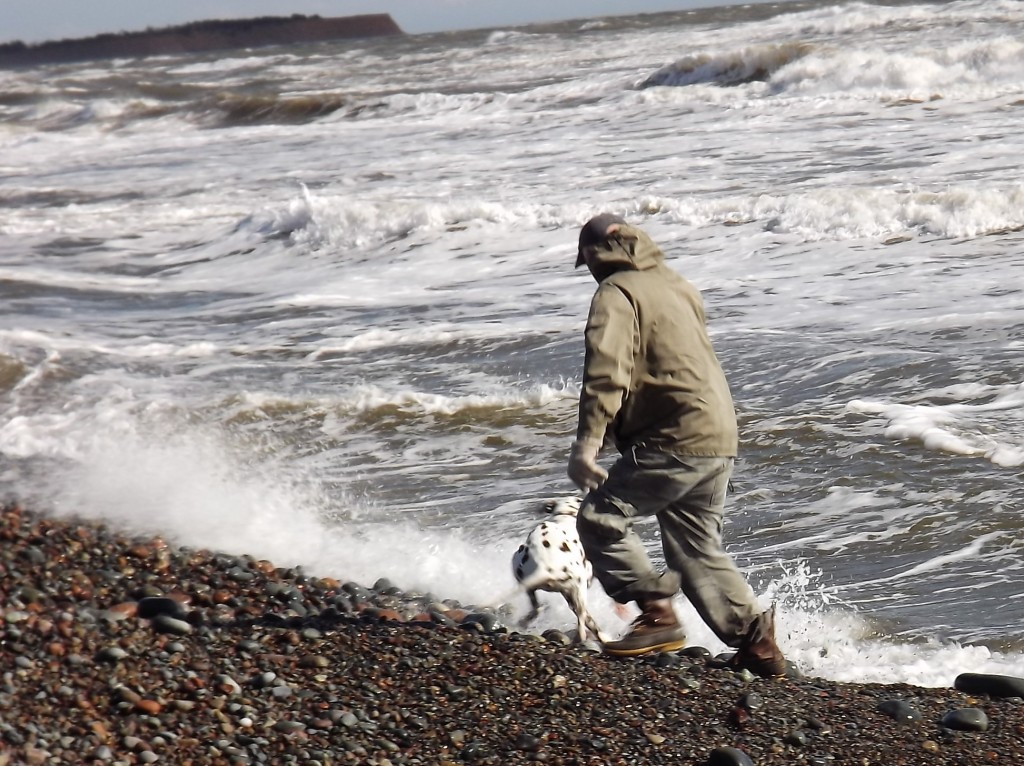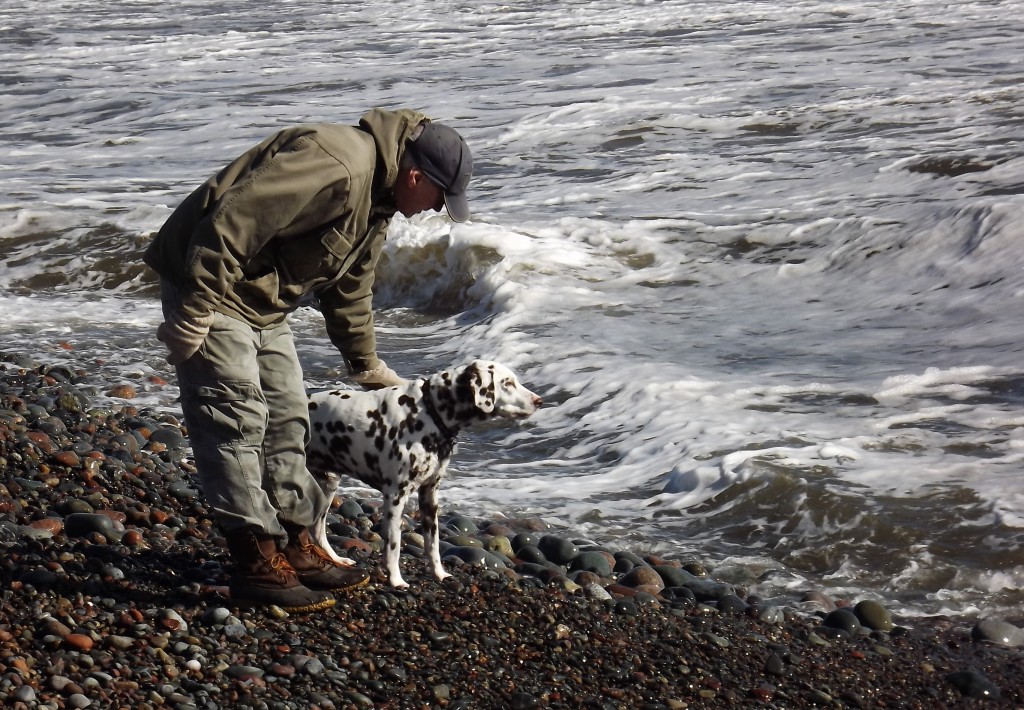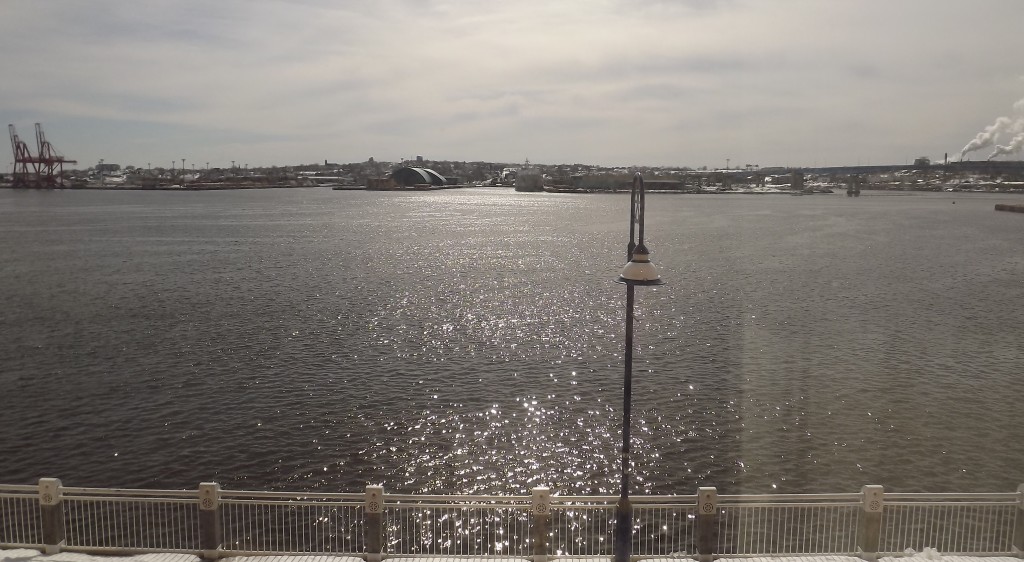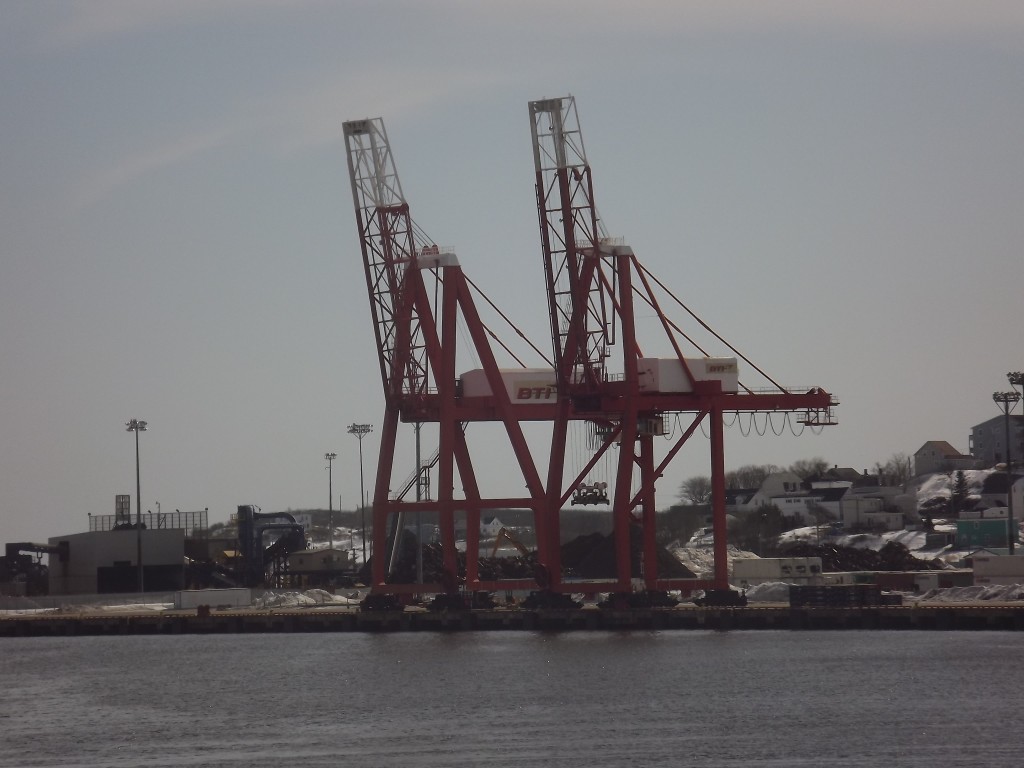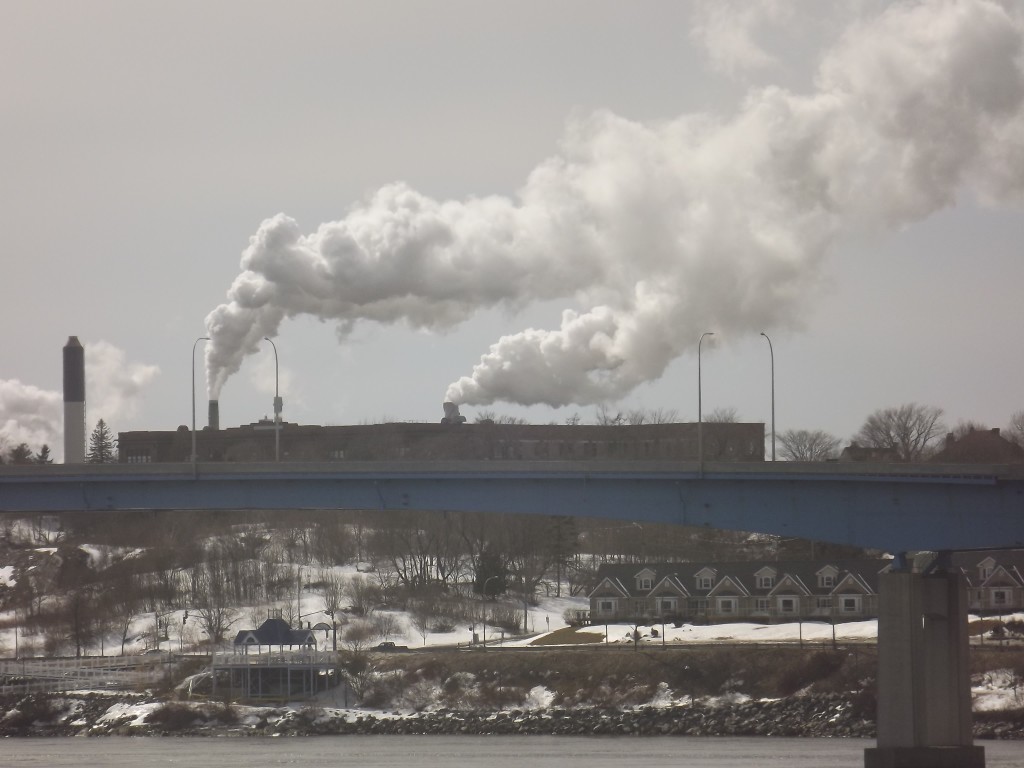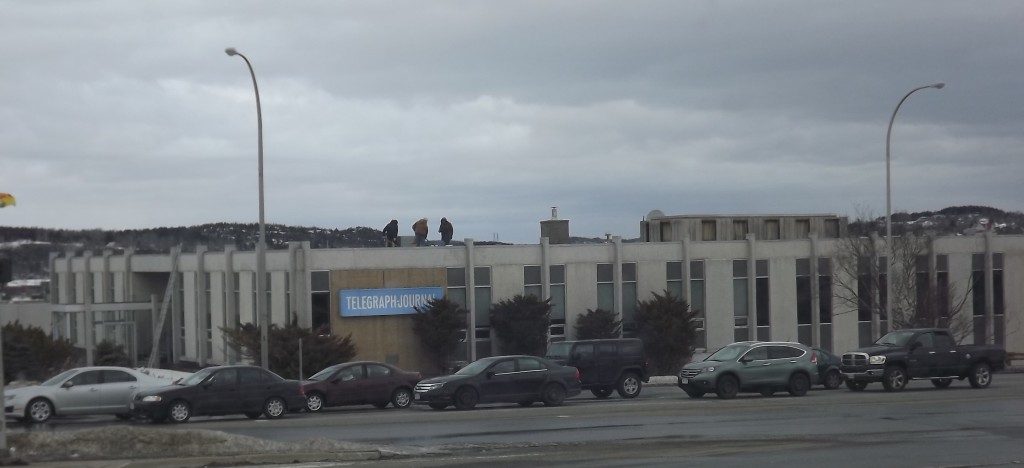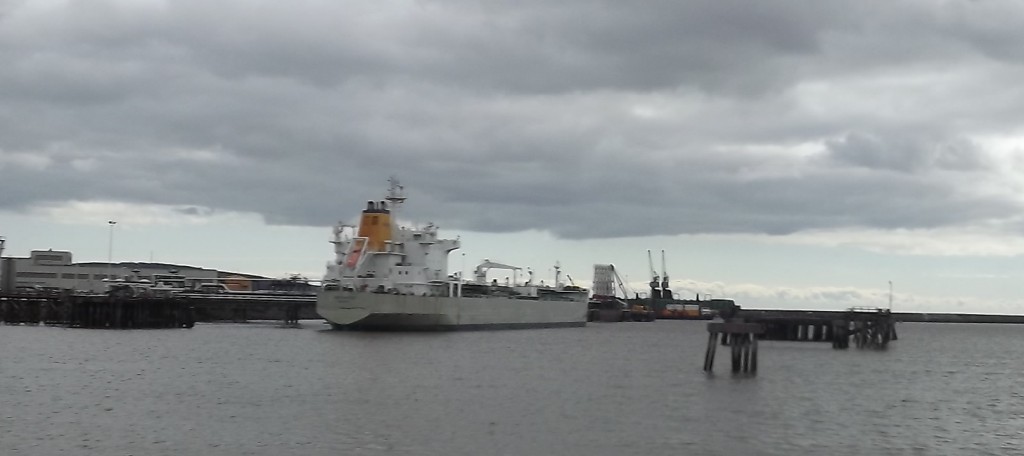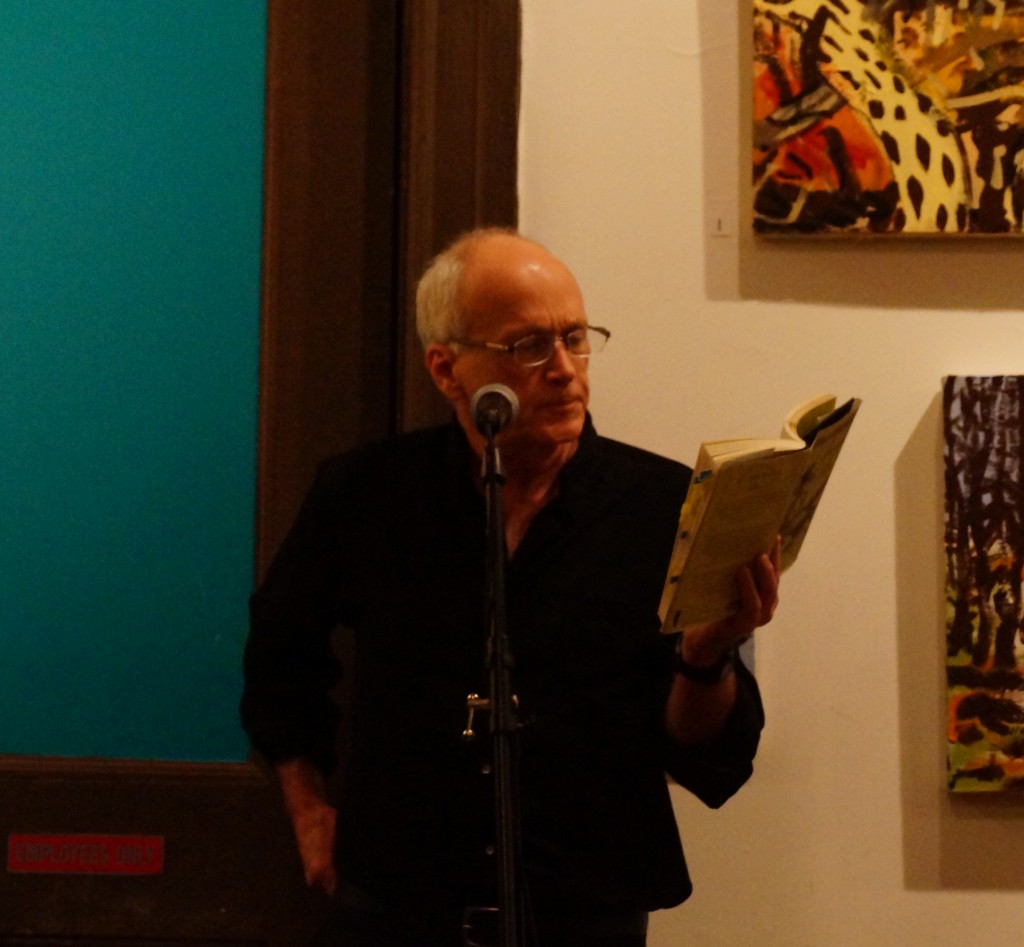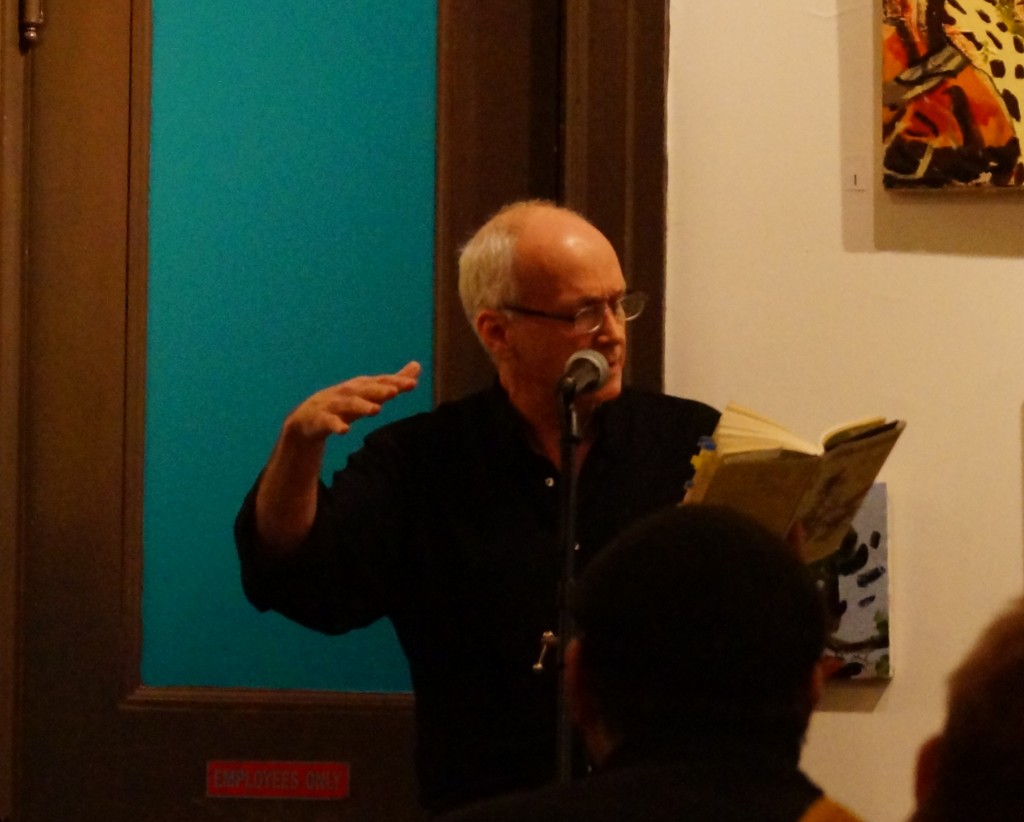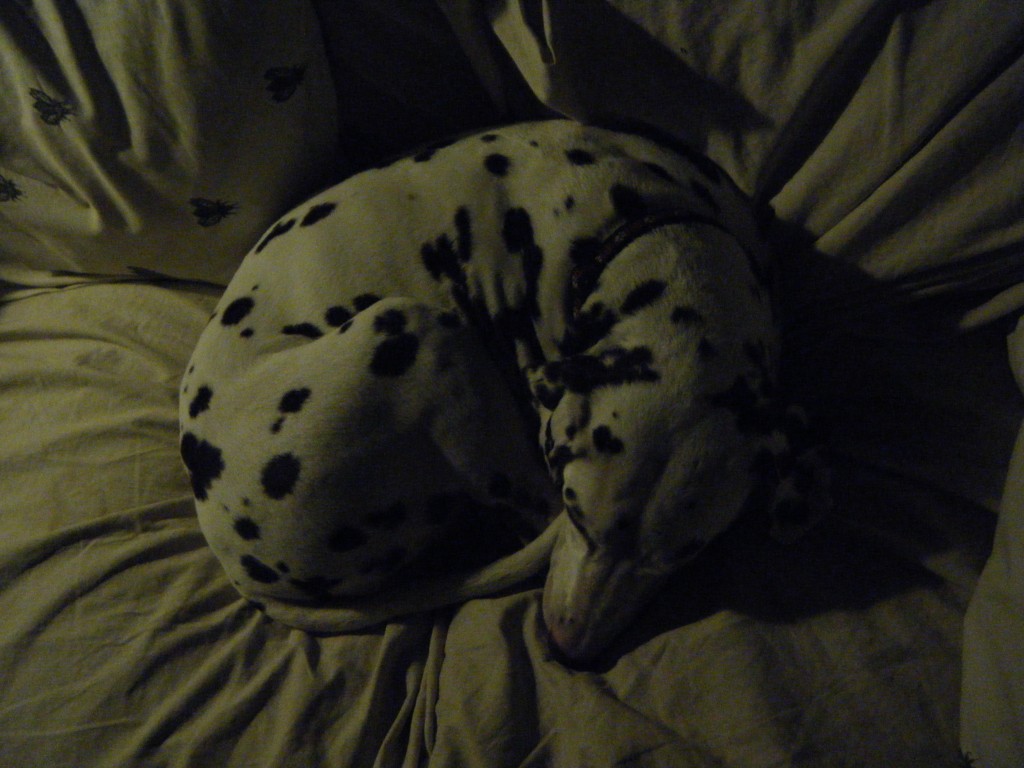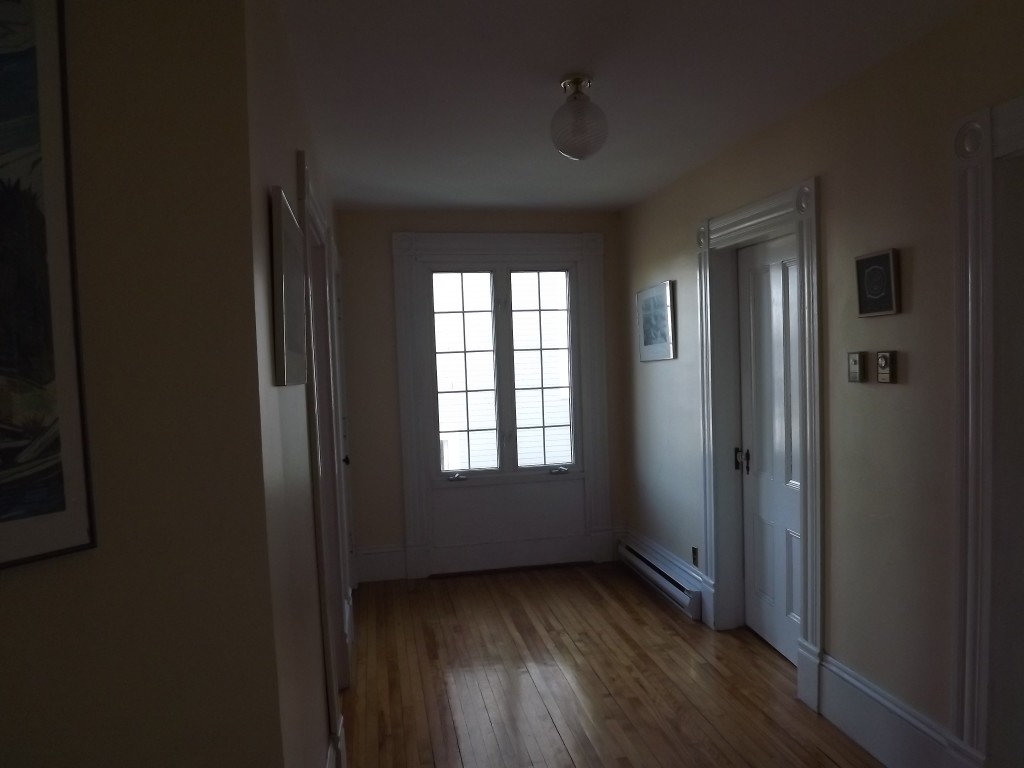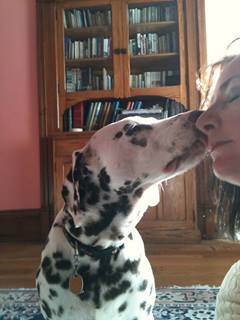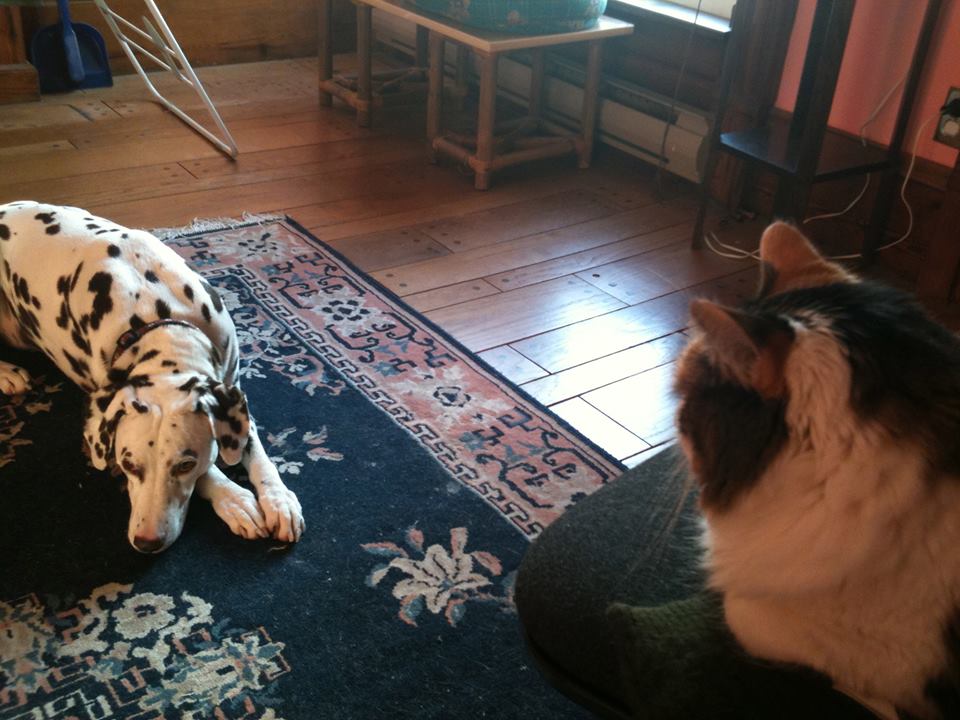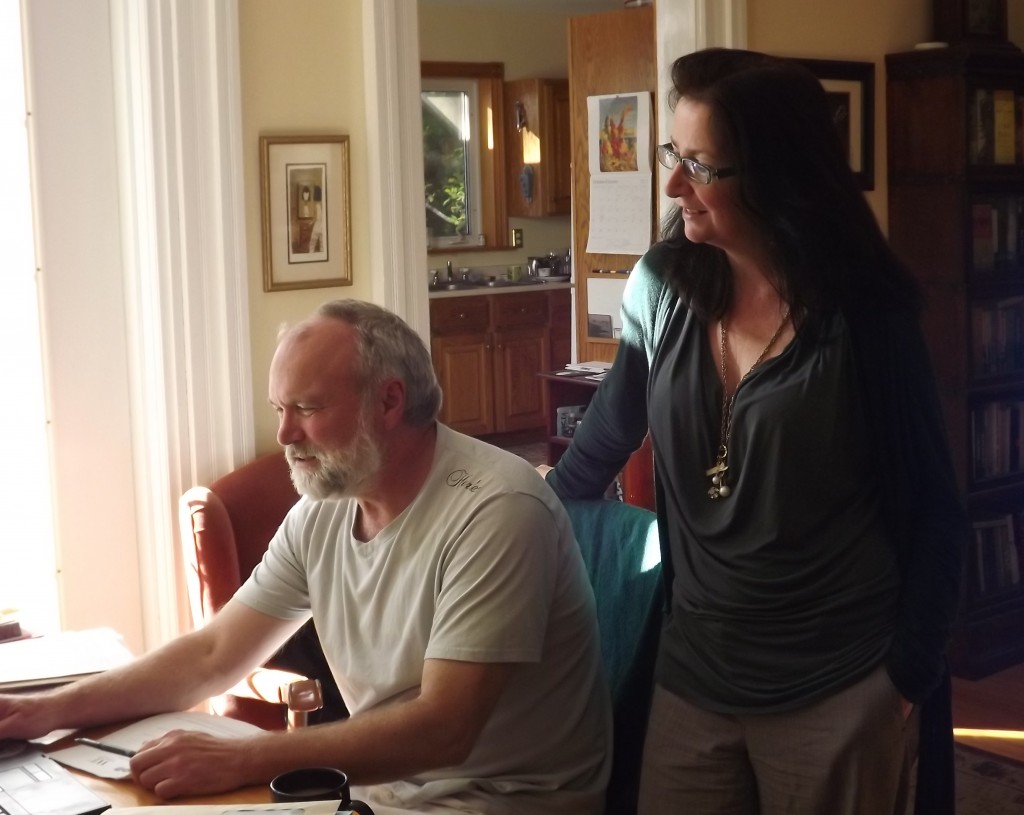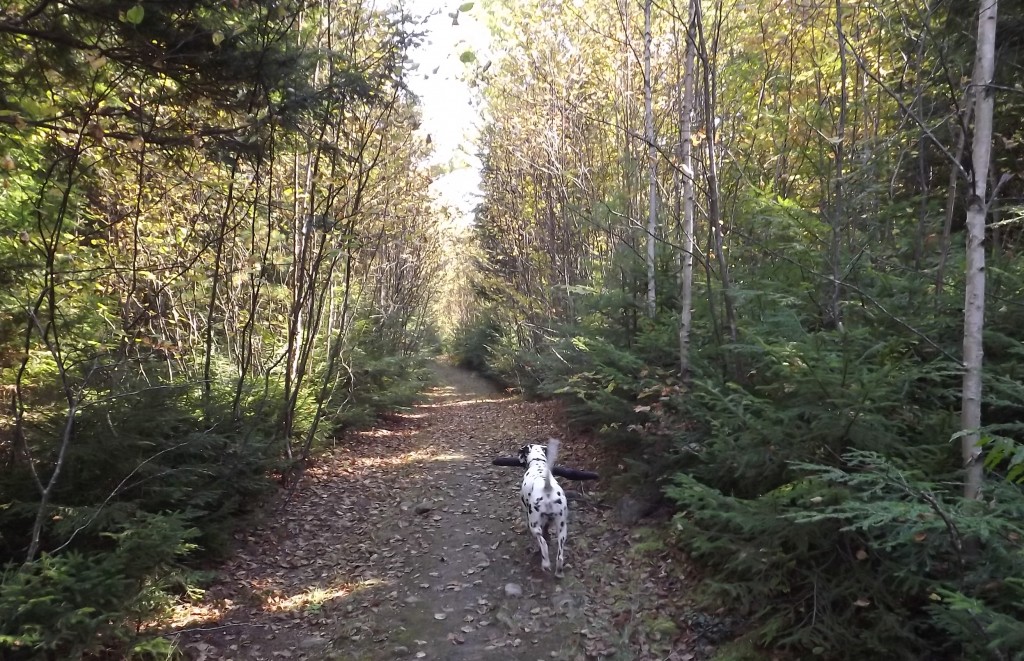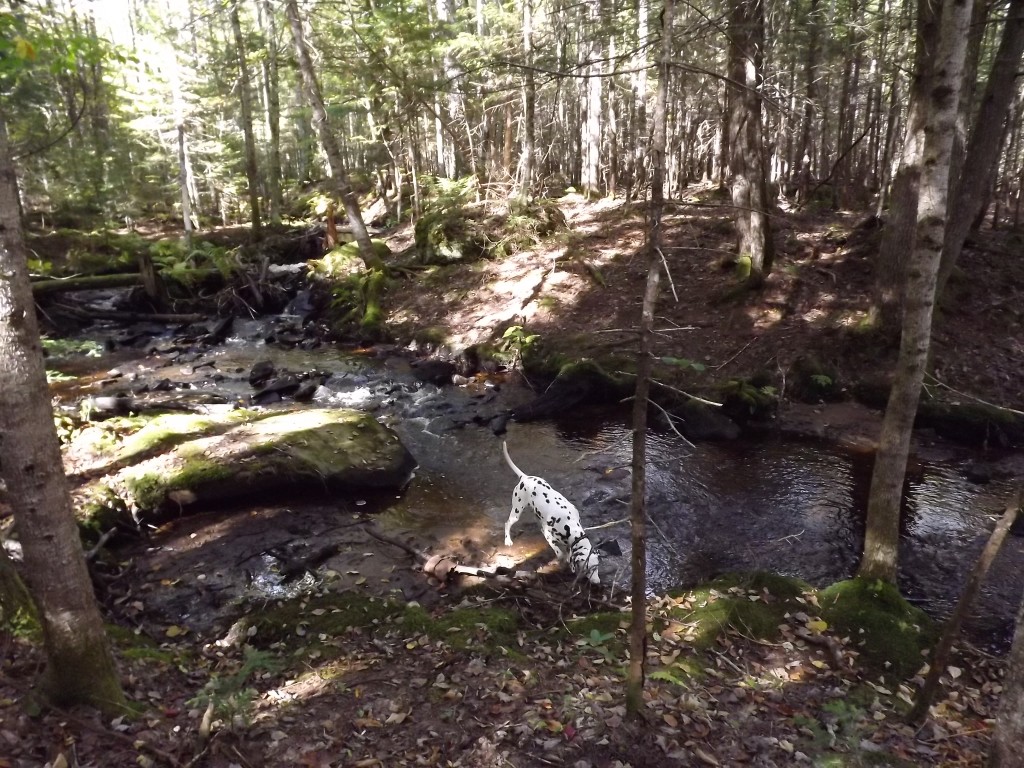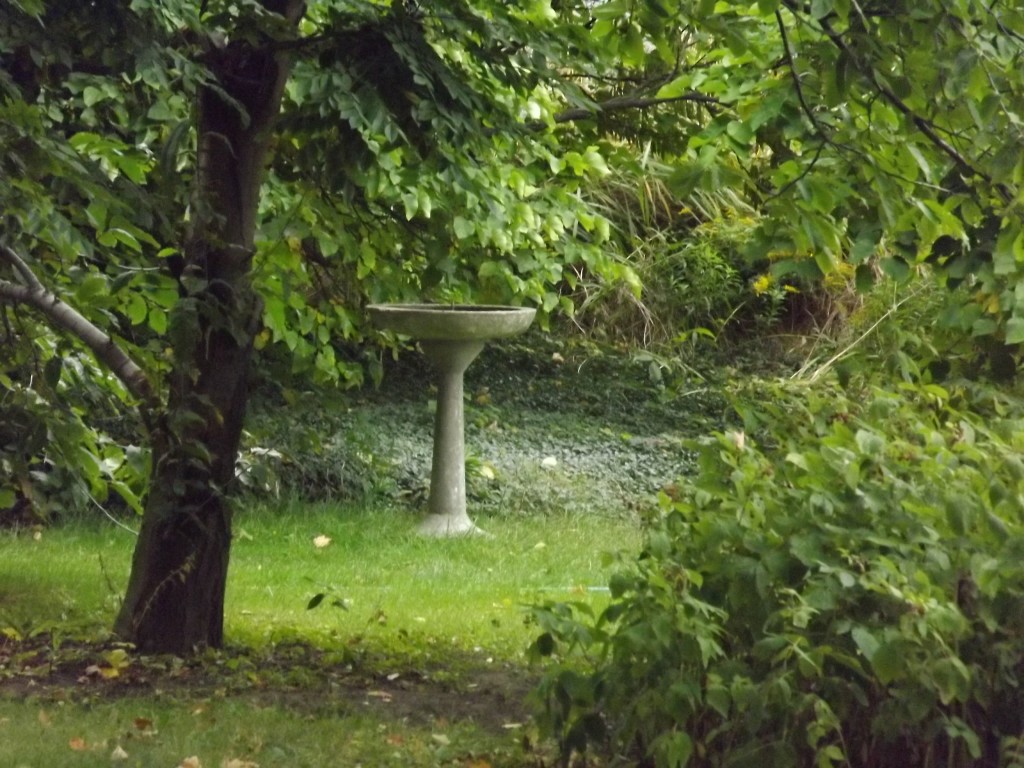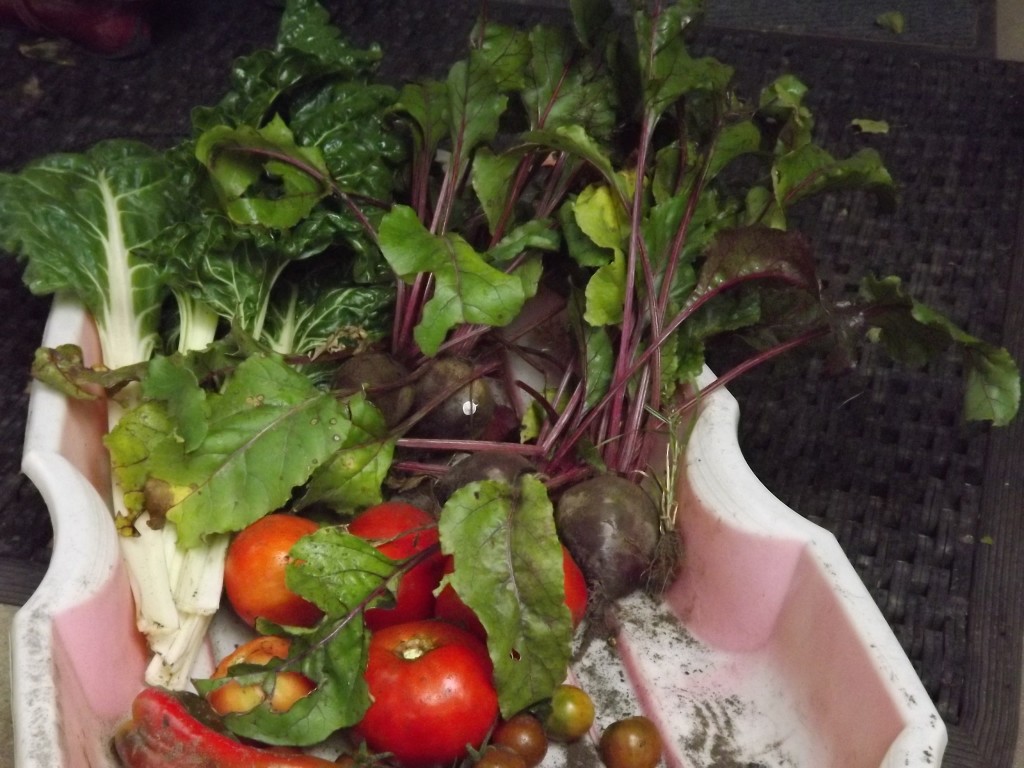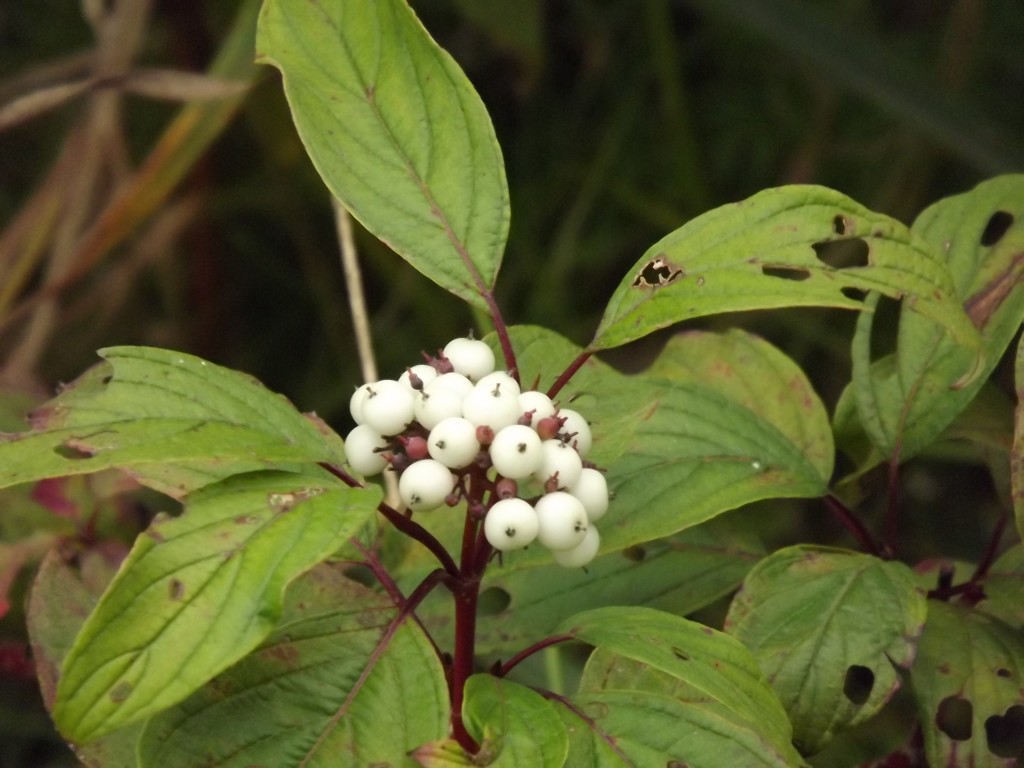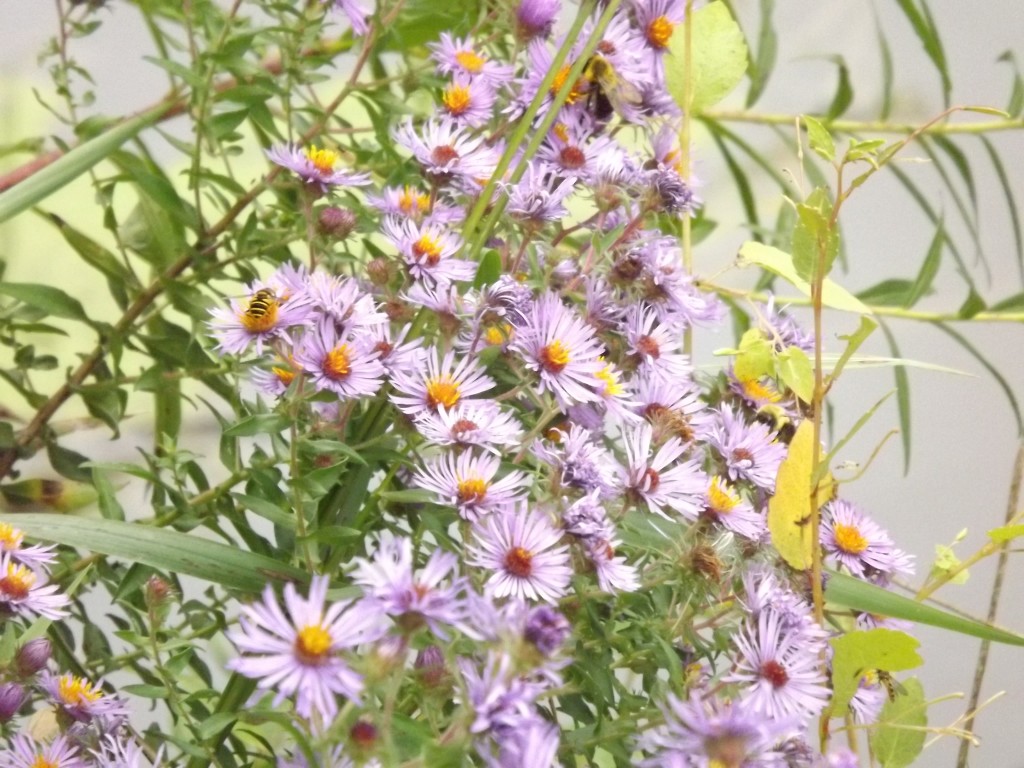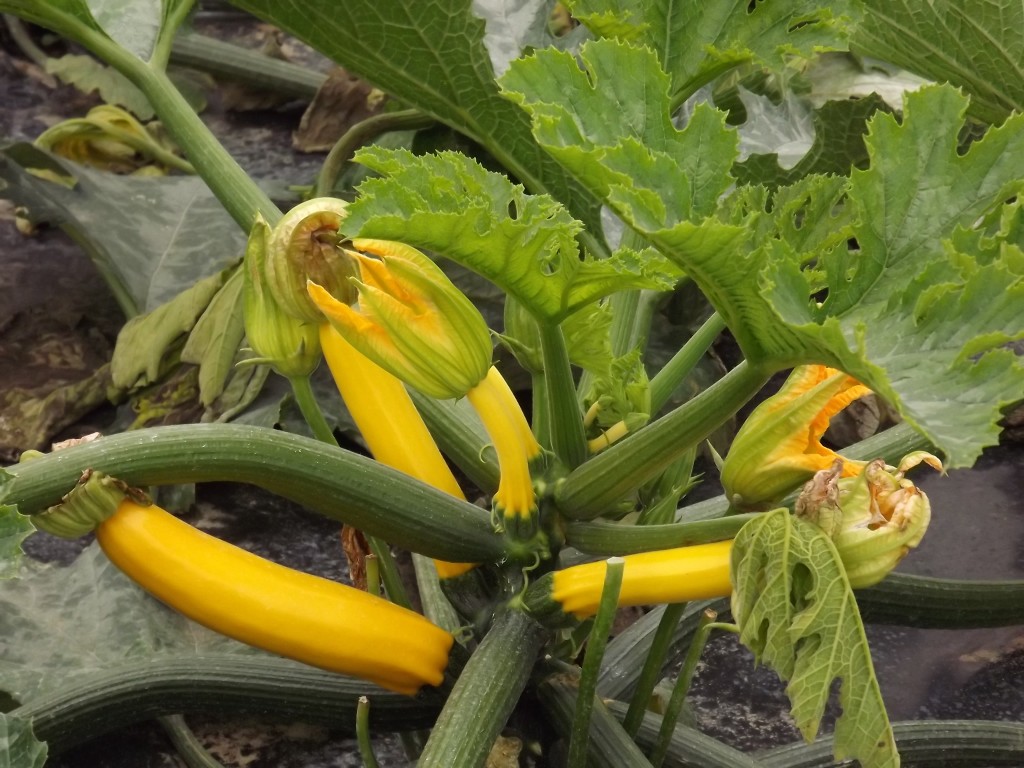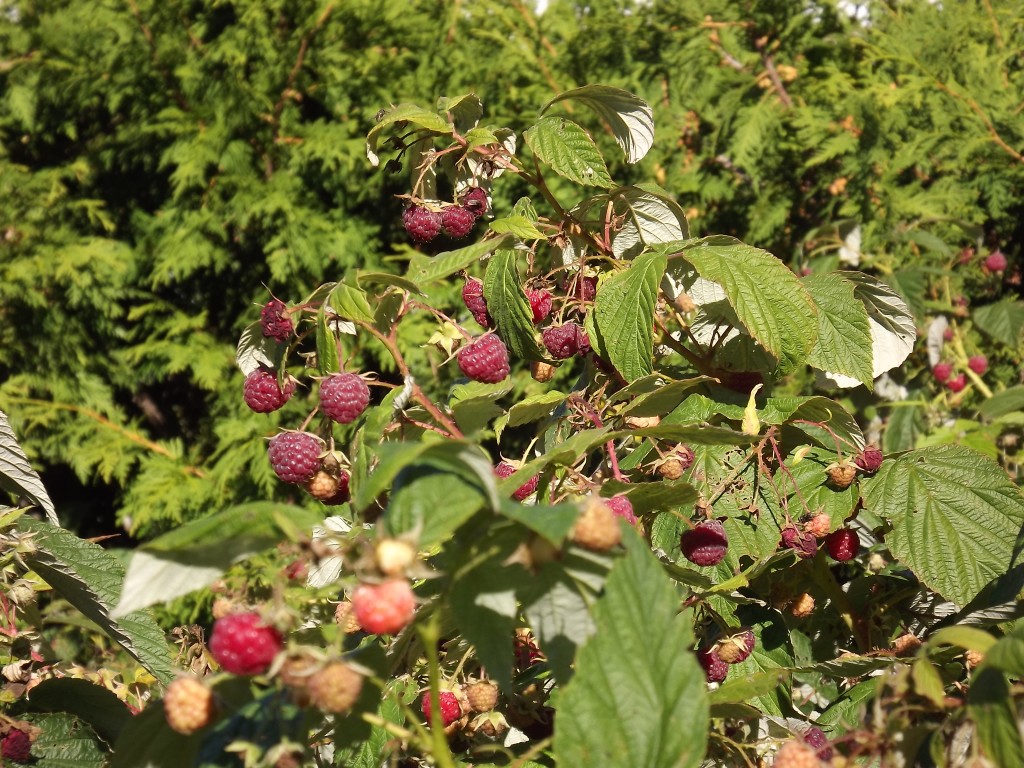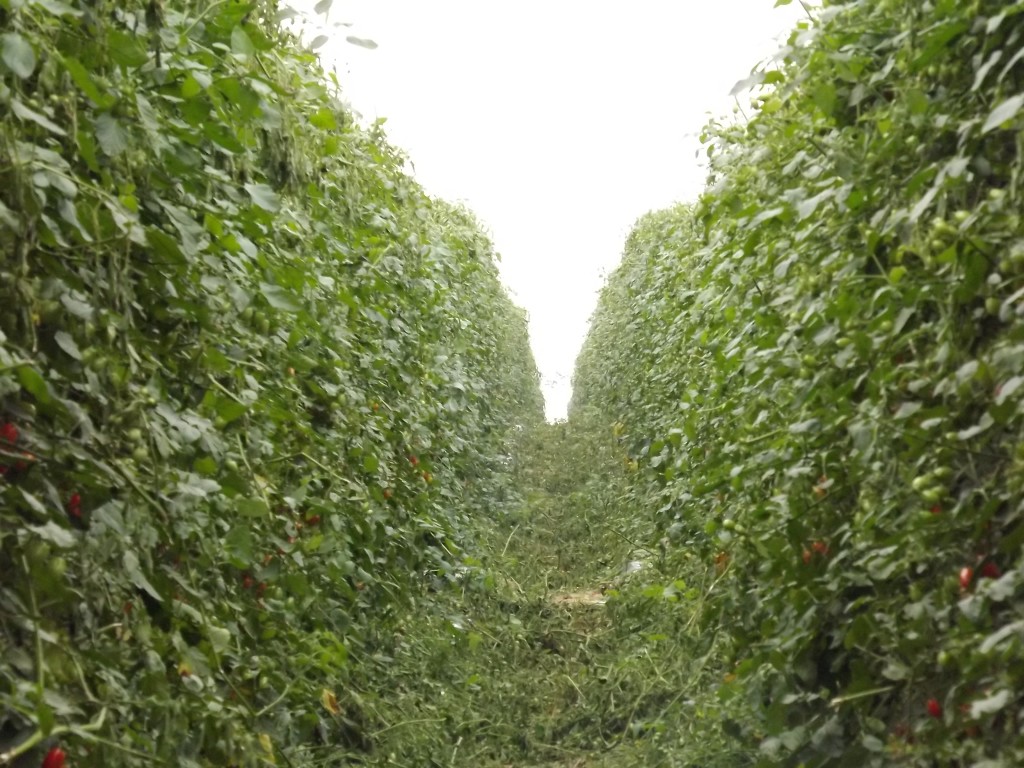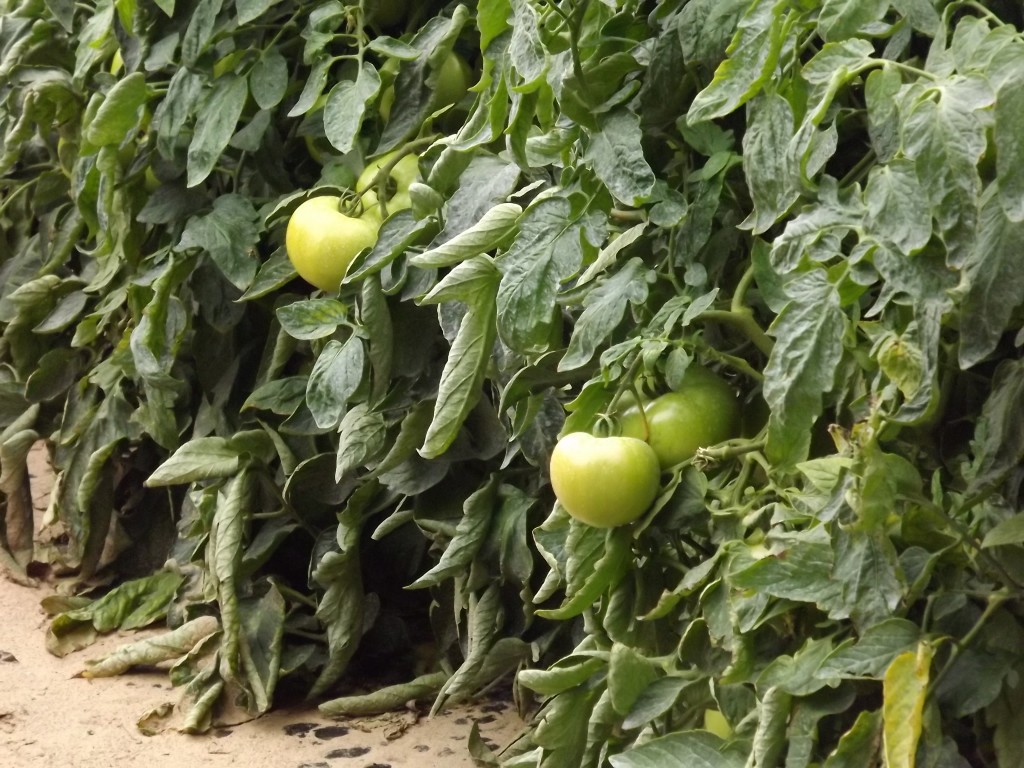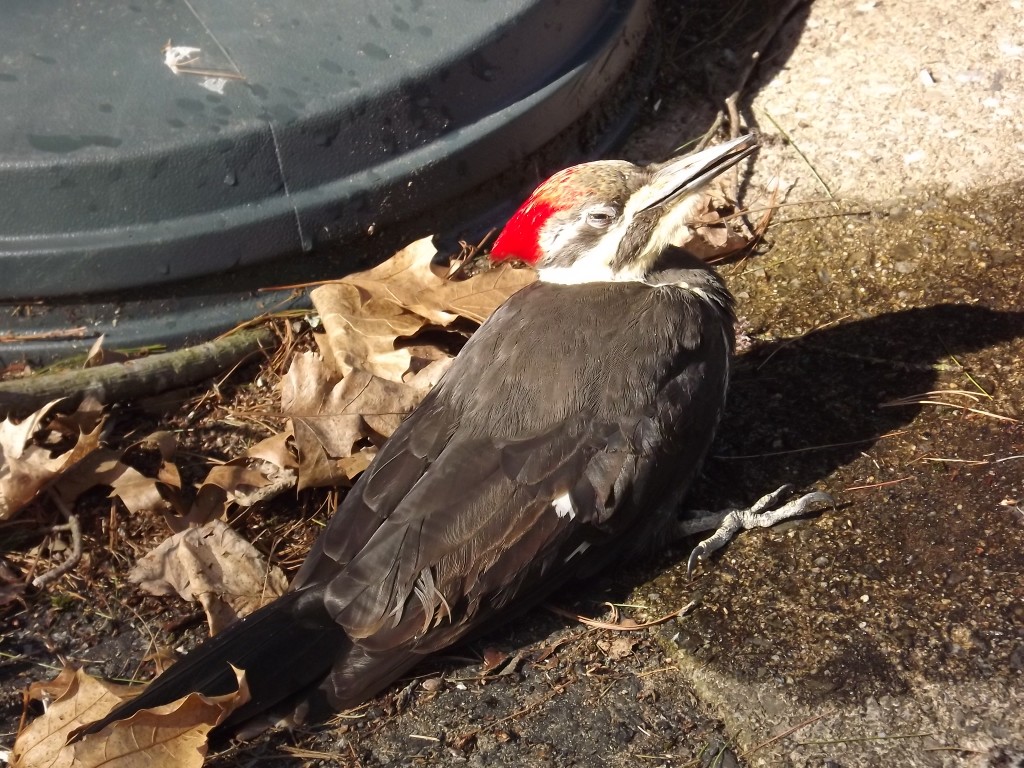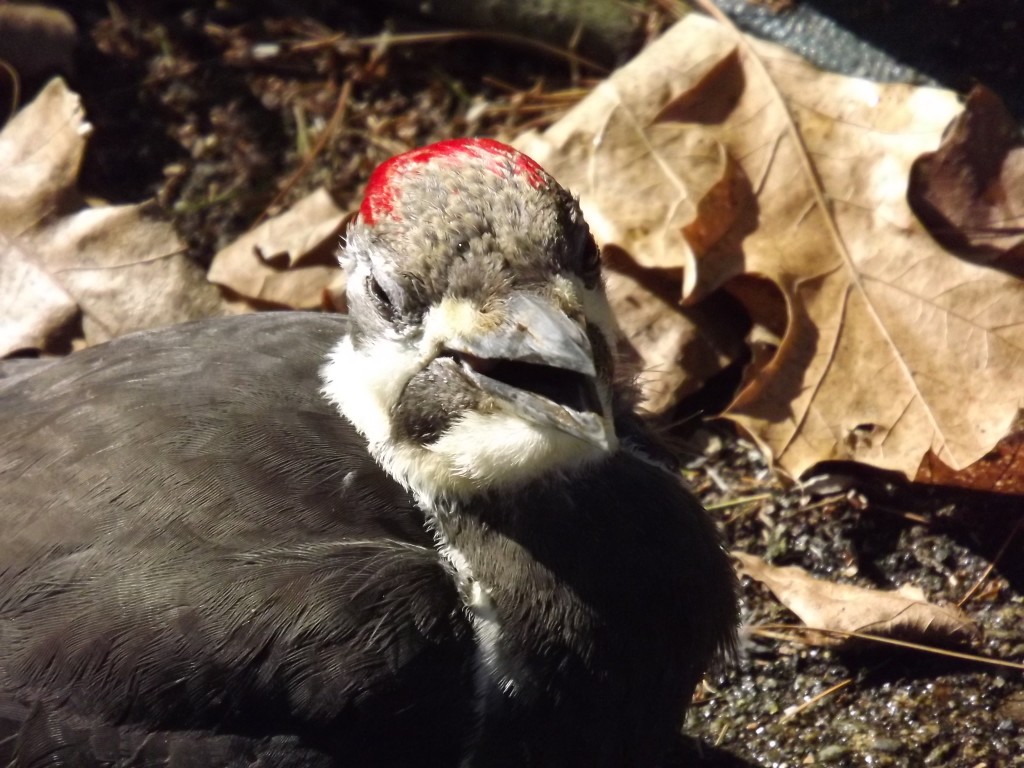I know that many of you envy the life of an internationally obscure writer, but I beg to remind you that sometimes there can be hazardous materials involved. Consequently, today I am modeling some DIY hazmat gear for the budget-minded author. Handy for wearing while reading reviews of your own work. This is not, as some of you might have waggishly opined, an erotic fetish costume, nor am I re-enacting a scene from an early Woody Allen movie. But I am on the farm in Ontario, and there is heroic work to be done. (I think I mentioned to some of you that I got the septic tank cleaned out two days ago — this has nothing to do with that!)
I also went to the grocery store, always a stirring experience, especially at sunset when the dear old Foodland parking lot is bathed in splendour.
Then I went to the woods to hunt for ramps. They are up, but we have so much ramp pesto from last year that it seems a shame to raid the beds again this year. And I forgot to take pictures of them. Anyone who wants to correct my identifications here can leave a comment.
 Daffodils Jean planted here and there in the woods
Daffodils Jean planted here and there in the woods
 Trout-lily or Dog-Toothed Violet or Adder’s Tongue
Trout-lily or Dog-Toothed Violet or Adder’s Tongue
Modern agriculture: You plant rye as a cover crop in the fall. It pops up in the spring. Then you spray a defoliant to kill the rye, disc up the land, and plant something new (the guys were out with the tractors today discing up this field). I took the picture a couple of days ago.
But then there is this.
—dg
 Severn Thompson as Elle in the original Theatre Passe Muraille production.
Severn Thompson as Elle in the original Theatre Passe Muraille production.
More exciting news about Elle, the play (based in my novel Elle). If you have been tracking this you are aware that Severn Thompson and Theatre Passe Muraille are taking the play on tour this winter (tour details here). But it’s just been announced that this tour will actually start with performances in my home town of Waterford, Ontario, at the Old Town Hall Theatre, under the aegis of the most charming artistic director ever, Claire Senko (passionate, fierce, scarily competent, friend of Fred Eaglesmith).
I went over to meet Claire Friday afternoon and wander around the place. All strangely familiar because I grew up just outside of town, and once even strummed a guitar with my brother’s band during a rehearsal on the theatre stage in the early 70s.
There will be performances on January 26, 27, 28 and 29, and on February 2, 3, and 4.
There will be an opening night champagne gala and a talkback session with the playwright and actress Severn Thompson and Theatre Passe Muraille’s artistic director Andy McKim (who fed me incredibly intelligent questions about the novel and play when we did an onstage interview together last January).
And closing night (February 5, Saturday) there will be ANOTHER! champagne gala and a talkback session with me after the show. (Amber Homeniuk will be the facilitator, as they call it.)
dg
This video slideshow was produced by an old friend, Alison Bell. (Her brother Ian Bell has appeared in the magazine.)
DG and his intrepid close relative RG, who has appeared earlier on these pages, went for their usual pre-winter canoe trip on Big Creek (see Google map above: southern Ontario where Long Point juts into Lake Erie). RG fell in first unwisely trying to clear a snag. Then they went to another put in spot and realized they’d left the paddles back at the first put in. RG made DG stay with the canoe in the mud while he drove in his warm car (with heated seats) back for the paddles. DG, the creative mind behind NC, passed the time taking selfies. Then RG rammed DG into a thorn bush and his hand was bleeding. When they got back to the landing DG’s bare feet were so cold he fell over.
Actually, it was quite stunning (aside from the nature and brother-on-brother violence). Immense labyrinthine marshlands, many threatened species holding out there. Fascinating to me because in 1670, on Easter Sunday, two Sulpician priests, François Dollier de Casson and René de Brehant de Galinée, were struggling to cross Big Creek in flood when they heard above them the shrieks of horses, the jangling of harness, war cries and the sounds of battle. According to their journal, they knew exactly what it was, King Arthur’s Hunt. King Arthur’s Hunt is one name/a version of the legend of the Wild Hunt (also Charlemagne’s Hunt), which John Irving used in the short story “The Pension Grillparzer” in the The World According to Garp. Ghostly, wraithlike warriors riding and battling endlessly in the sky. Terrific to be in exactly that spot.
I have an anthology of quotations about Long Point and Norfolk County, including that journal entry, which you can read here.
dg
 DG intrepidly negotiating hazard.
DG intrepidly negotiating hazard.
—Photos by dg, rg & google maps
The morning started like this: Views from the NC Bunker.
Then I slid my car down the back hill to Barre to get it undercoated at a place called Yipes. Went to Espresso Bueno to write then slipped down Granite Street, over the railway tracks, to visit the Socialist Labor Party Hall (aka the Old Labor Hall). Hallowed ground. Emma Goldman used to live on Granite Street.
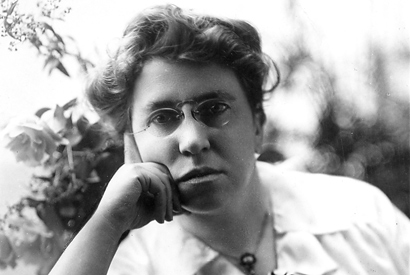
Big Bill Haywood who led the IWW spoke at the hall. He’s the big guy below, leading a strike parade in Lowell, MA, in 1912.
Also the legendary Red Flame, Annie Burlak (National Textile Workers Union).
The great Anarchist Luigi Galleani lived a block or two away on Blackwell Street and published his internationally influential newspaper Cronaca Sovversiva (The Chronicle of Subversion). How I love that name, Chronicle of Subversion.
And the young brilliant stone carver Elia Corti was famously shot to death (by another Anarchist) on the front doorstep in 1903.
It did me good walking there. I felt the hairs go up the back of my neck a bit. I was more moved than I care to talk about. I think I fell in love a little with the Red Flame. I could feel the big hall packed with voices.
And yet it’s a functioning community hall and social centre. I went back to Yipes to get my car and the woman at the counter told me how she has a small foster child who had never had a birthday party in his life. So she rented the Socialist Party Labor Hall and threw him the biggest party ever just a few weeks ago.
It did my heart good, as I say, — in the midst of this tawdry election cycle — to find myself suddenly in the presence of such kind, dedicated, hearty people (the current ones and the ghosts).
Nice day.
dg
Left the NC Bunker today to check out the Tunbridge Fair. Was persuaded against better judgement to go on rides. First took pictures of this thing, which I think of as The Claw, and then rode on it. Feel much better now. But cannot write complete sentences yet.
Then I went on another very fast whirling gyroscopic orgasmomegatron ride (which I did not photograph) and with four tickets left got onto the Zero Gravity machine with Matt Monk (dg dressed in dark clothing, Matt in white). I recall Matt saying, as we entered the big kids’ ride enclosure, “Now the shit gets real!” Needless to say someone else took these pictures.
What you see here are the faces of men who have faced Death in the Zero Gravity ride (along with 12 small children).
dg
So, okay, first night. Spectacular, magical. Standing ovation, curtain calls. A transformation of my novel for sure. But Severn Thompson was born to play Elle, the headstrong girl. Funny, passionate, poignant. A bravura performance, a woman holding us mesmerized for 90 minutes. Stunning visual effects, but theatre, cheap computer generated effects. The moment when she falls through the ice, amazing lighting effects, a column of light flickering as if water. Transforming into a bear using a lengthy sheet of gold material pulled against her body, her raised hands clawing against it (just amazing what theatre people can do with a sheet). Terribly poignant opening up of the play with the entrance of Jonathan Fisher as Itslk. Scene after scene, image after image. The scene where the baby Emmanuel dies. OMG. I don’t think many authors get a chance to see someone make another work of art of their own creation. And fewer still can be so pleased and moved and feel that such homage has been paid. I am going to bed now. Tomorrow I will resume my habitual sardonic mask. But tonight I was moved. Go see the play if you can.
d

Some more pictures from the NC bunker. The light is grand, and, of course, uncapturable. The top couple of images are looking west at sunset. I’m not trying to show you what it really looks like. The effects are meant to exaggerate the light and dark, the patterns thereof. The middle two images are attempts to get the light streaming into the woods from behind. And now that the leaves are mostly gone I can see things I couldn’t before. Camel’s Hump looms in the distance, dark and ominous. The very bottom image is a snow squall coming over the Worcester Mountains in the west, a sign of the future.
Naturally, it’s terrifying and time-consuming to live in such a dramatic environment and I get no work done. What work? Lucy asks.
dg






There is a tide and time in the lives of chickens, as there is in the lives of men and women. Many of you have watched the rise and fall of the hen population on the farm with amusement and sympathy. But things have gone south. In late spring, a Cooper’s Hawk took the third to last hen. Then the second to last fell sick and died (they were all getting old for chickens). And finally Jean broke her hip a few weeks ago (um, she’s 94), putting an end to plans for repopulation. Chickens are social animals and aren’t happy on their own. While Jean was AWOL in the hospital, I got in touch with Amber Homeniuk, poet (see her poems in the current issue) and Jean’s favourite chicken expert, who offered to rescue ours.
Here we have images and video of the last moments. Amber came prepared with a chicken carrier, also sliced grapes and chicken feed. And you can tell from the video what a gentle and reassuring animal wrangler she is.
Below the video is a collection of images Amber put together of the first moments at the other end of the exchange.
More about chickens than you ever wanted to know, right? But I’ll miss them. Surprising, sociable creatures. Nice to have around the place.
dg
Due to ongoing death threats, drive-by shootings, kidnappings, lawsuits, federal investigations, vehicle repossessions, and debt collections, the usual fare of literary magazine publication, Numéro Cinq has relocated its headquarters to a hardened bunker somewhere in Vermont. For your edification, a selection of the usual boring Vermont vistas taken from the backdoor, looking west toward Camel’s Hump, the Worcester Mountains, and Mount Mansfield. Also some woodsy shots with dogs. Neighbours report a “small” 300-lb black bear living across the road. DG needs a new camera for this.
The best part is that nobody can find him.
dg
Just back from a wild swing to the farm to oversee vast excavation and pipe-laying to repair the tenant house (twice burned down, but the original house was the first on the farm; ancient stone foundation dating to before 1850, we also found the remains of what must be the original well) plus swing to Toronto to see Jonah (hiked down the Humber River to the lake and back). Many pictures, no theme, my brain is a scattered mess.
Re. the pipe. We had a line locator come out to locate the old line, which he didn’t manage properly. So we had to follow the old pipe with the backhoe, a lovely serpentine hole with a couple of false tangents and trial digs here and there. Kind of interesting and delicate, especially at the very end when we were sure we were close to the main pipe. These digging photos are of purely documentary interest. No one made a map the last time the pipes were put in, and now I have pictures. Otherwise, I will spare you the details.
.
A
.
.
Images from the farm on Ontario, just these past few days. Lucy at the beginning, Jean at the end (93). In between, well, I got a bit obsessed with the clash of the industrial and the natural, which is modern agriculture. So I have three images of a Norway spruce windbreak, clouds spiraling up beyond them and a jet contrail. Then a series of images of tractor ruts in a rye field. I fell in love with the annual manure pile, never has a manure pile seemed so, well, epic. And finally we’re mounding the fields in preparation for planting. This is done with a machine, of course, that creates lovely symmetrical rectangular slices in the soil. The images are all variations. I like that, the repetition of the image with some slight variation.
The last time on the farm (Christmas) I had to dig out the risers to the septic tank to release the guard grid that had been improperly installed so that I could get at the plastic filter and clean it. This time a new experience: The tenant house has been without water since early March, frozen pipes we thought. I got the pipes to the garden hydrant turned on last week and then with the help and guidance of a neighbour ran a hose from the garden hydrant to the tenant house and attached it to the outside tap on the house wall, turned on the outside tap and ran water from the garden hydrant into the tenant house. I didn’t invent this, did not believe it would work, but it did. Low pressure but it works. Next we have to dig up the pipe to the house, which is clearly not frozen but blocked irretrievably.
I also spent a lot of time lying in the mud and ice on my stomach jamming a log up the irrigation pond overflow culvert, which has been partly blocked for a couple of years. This is a pilgrimage I make every trip to the farm. I have my own special log and I walk back to the pond, looking for arrowheads along a knoll where Early Woodland natives used to camp, and lie down with my face almost in the pond and run the log into the culvert. It is a zen thing to do and never works (also has a certain sub-erotic overtone, which I don’t really want to get into). Then Lucy goes for a swim, whimpering for me to throw a stick. This year there was still ice along the margins of the pond, but she still went in. We share this tendency to self-destructive obsession.
dg
.
.
.
Okay, so I got a little obsessed with the trees and shadow patterns. These were taken yesterday, again along the Hudson. Cold after two warm days, the trail chopped up and icy. When you look carefully you see the trees, the shadows and the columns of light between the shadows. The snow simplifies the scene, makes it an abstraction. The trees are more or less straight and sharp-edged, but the shadows follow the contours of the snow, which, in turn is following the contours of the rocks, gullies, stumps, and down trees underneath. And then you start to notice the angle at which the light is hitting the trees, going across the frame or coming toward you (with a focal point at the sun). So you get a very complex and layered images. Then I started looking at the birch trees!
dg (Ask him what he is supposed to be doing instead of this.)
.
.
First day it was warm enough to take the old dog on a longish hike, so we went to the Palmerston Range, Adirondack outliers cut through by the southern branch of the Hudson River. Actually, we went out a couple of days before, too, but it was positively Antarctic on the exposed shoulder near the top and the trail was drifted over, and it was not so much fun. Saw a female pileated woodpecker and a barred owl (last week I saw a snowy owl while I was snowshoeing in the ravine behind NC HQ — you can see I am working hard on something or other, right?). We also scared up a flock of turkeys, exploding out of the treetops as we came down from the ridge. This about cured my SAD for this year.
dg
 Looking down to the Hudson River where we started
Looking down to the Hudson River where we started
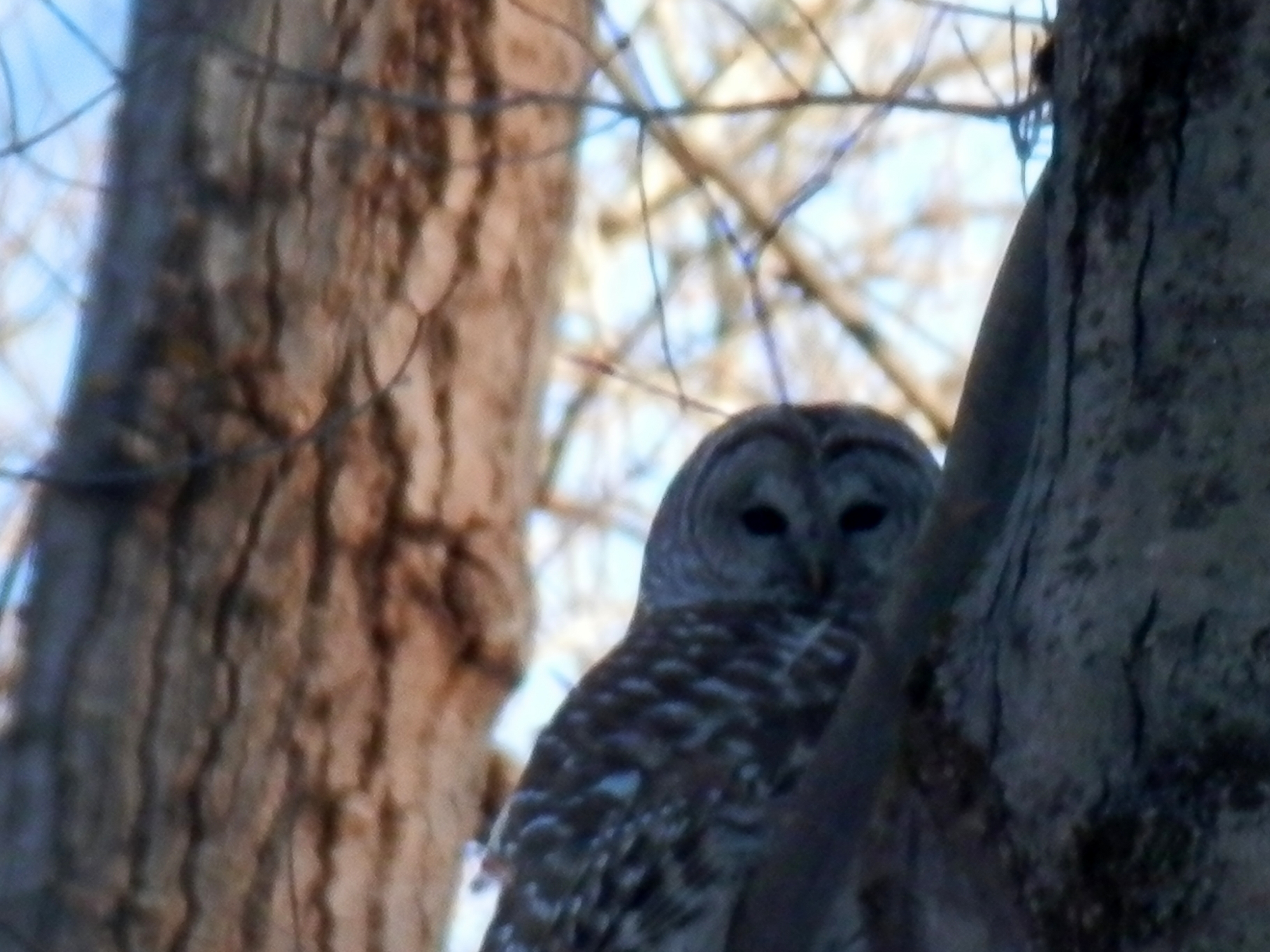 Barred owl (okay, I am not a photographer; it was far away)
Barred owl (okay, I am not a photographer; it was far away)
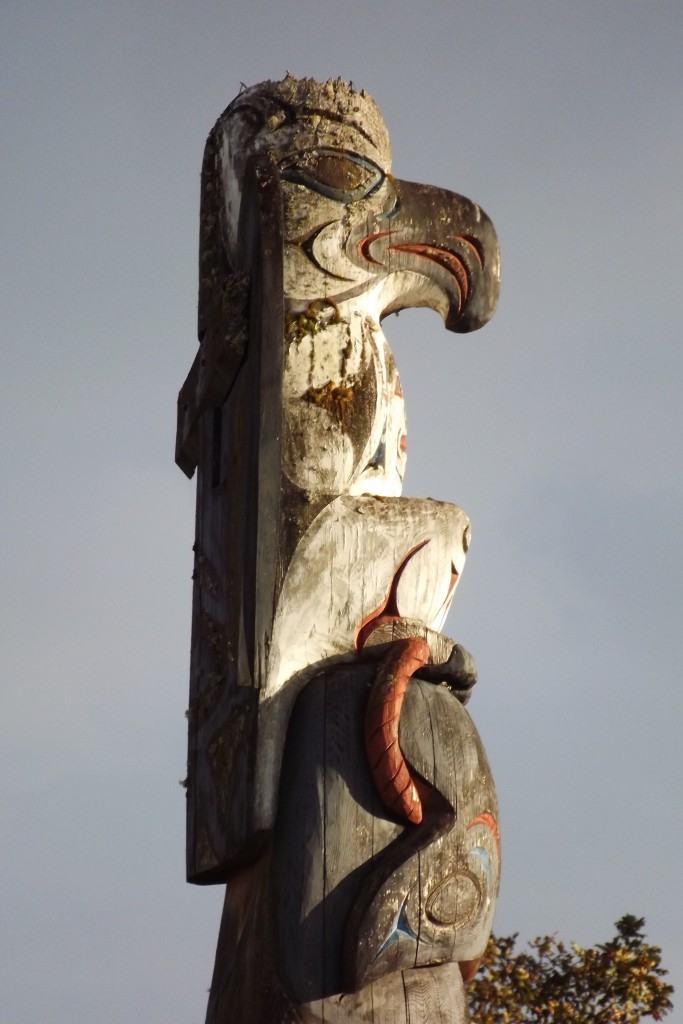 At the end of the Victoria trip, dg spent an afternoon with the Coast Salish master carver Charles W. Elliott in his studio at the Tsarlip First Nation Reserve on the Saanich Peninsula north of the city. Above is a thunderbird atop of a Charles Elliott totem pole in front of the ȽÁU, WELṈEW̱ Tribal High School just down the road from the studio.
At the end of the Victoria trip, dg spent an afternoon with the Coast Salish master carver Charles W. Elliott in his studio at the Tsarlip First Nation Reserve on the Saanich Peninsula north of the city. Above is a thunderbird atop of a Charles Elliott totem pole in front of the ȽÁU, WELṈEW̱ Tribal High School just down the road from the studio.
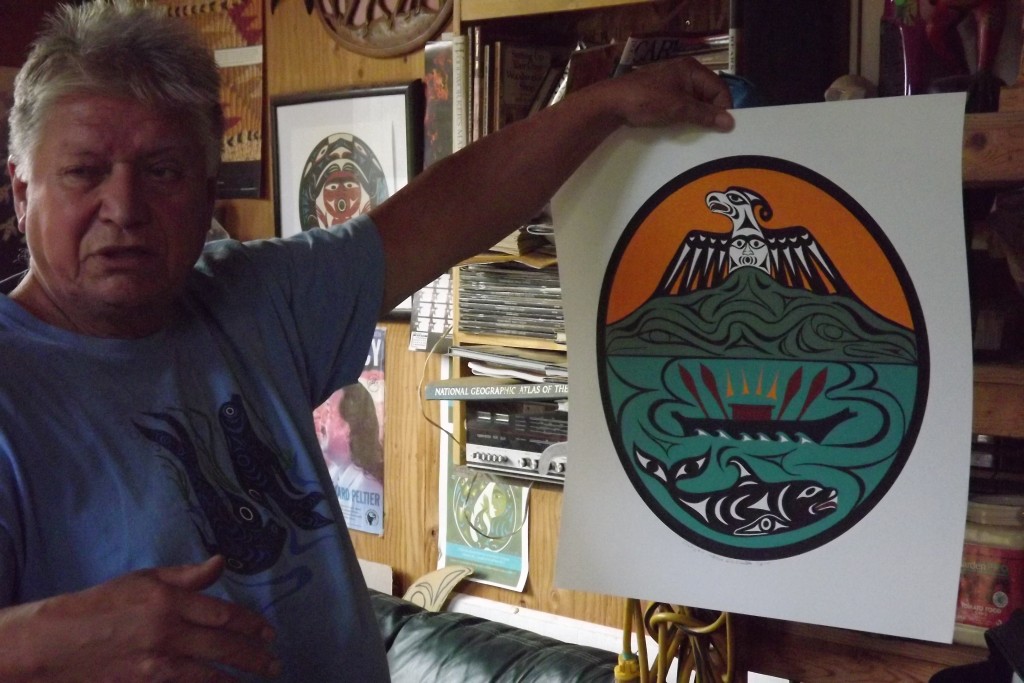 Charles W. Elliott holding a print he designed as a symbol for the University of Victoria Indigenous Governance program.
Charles W. Elliott holding a print he designed as a symbol for the University of Victoria Indigenous Governance program.
Still processing this visit. Charles Elliott is an amazingly generous and intelligent artist, very articulate and personable. He took a lot of time to describe what he does. Coast Salish art is a formalist invention (which, naturally, makes is tremendously interesting to me) — he called it the Salish “system” — that involves the use of a finite set of motifs (e.g. thunderbird, raven, orca, etc.) and design elements (eyes, bracket shapes, lanceolate shapes, etc.). Often the smaller formal elements are fitted into a larger form that derives from a utilitarian space (house fronts, paddles, spoons, bowls, etc.). The print above, for example, is circular, a shape derived from the spindle whorl used by the native women to process wool. The artist fits larger motifs into the overall form and then fills the blank spaces with either smaller versions of a motif (or in inversion) or with repetitions of the abstract design elements. For example, the thunderbird wings contain eyes, brackets and lanceolate shapes. Beneath the thunderbird is an orca, and you can see the bracket shapes used down the whale’s back. The idea, Elliott says, is to bring the spaces “to life.” The large motifs refer to legends, myths, and powers (also, in some cases, clan and social organization elements), so they carry story and meaning to the viewer. But at the same time there is a purely design aspect to the art, a pleasing abundance and vivacity of structure. What’s truly interesting is how the abstract design elements can be used to imply naturalistic details (see the shins on the thunderbird’s legs).
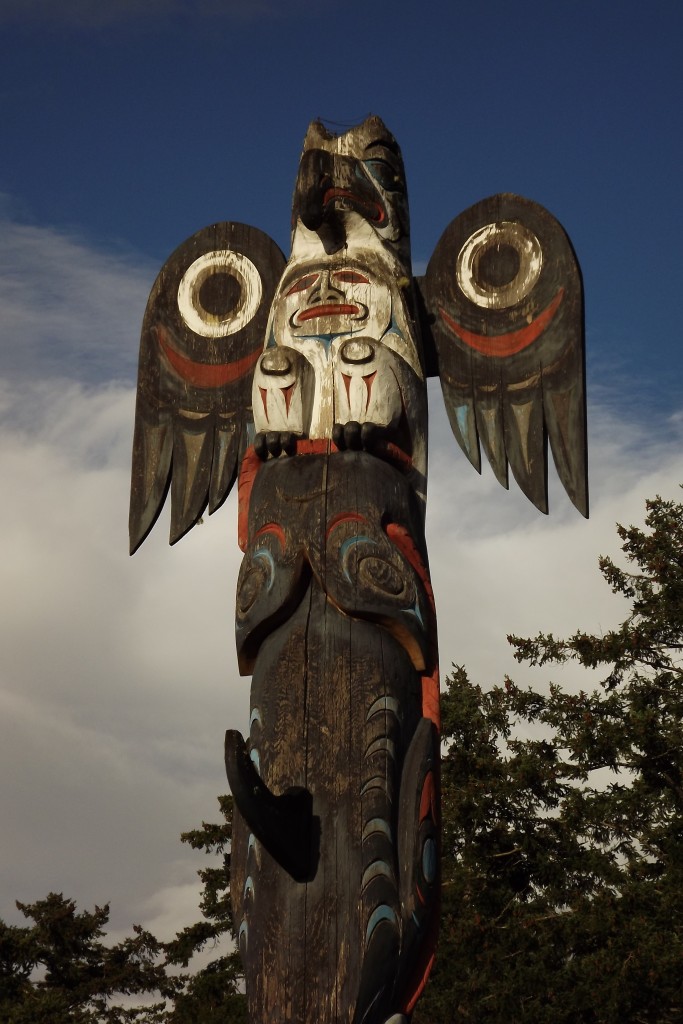
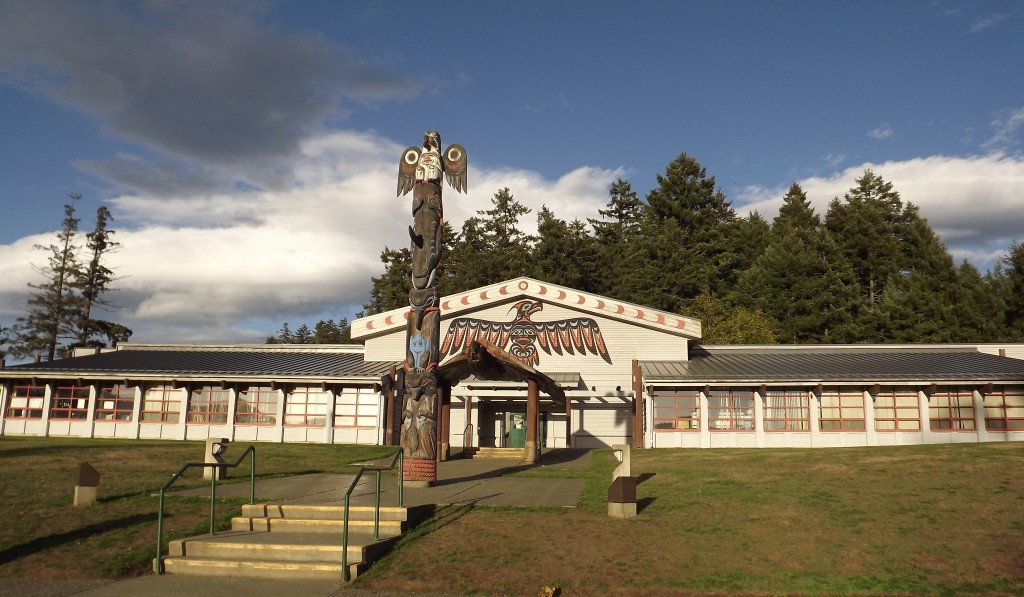 Here’s the school front. Note the repetition of the structure: thunderbird on top of the pole, thunderbird on the from wall of the building, and the structure of the building as a whole is a thunderbird with wings. What you can’t see from the angle is that before the front door is an entryway in the shape of a bird again. To get into the school, students pass beneath the thunderbird’s wings. Also not the bracket shapes along the roof line. And then think what a lively public art form this is.
Here’s the school front. Note the repetition of the structure: thunderbird on top of the pole, thunderbird on the from wall of the building, and the structure of the building as a whole is a thunderbird with wings. What you can’t see from the angle is that before the front door is an entryway in the shape of a bird again. To get into the school, students pass beneath the thunderbird’s wings. Also not the bracket shapes along the roof line. And then think what a lively public art form this is.
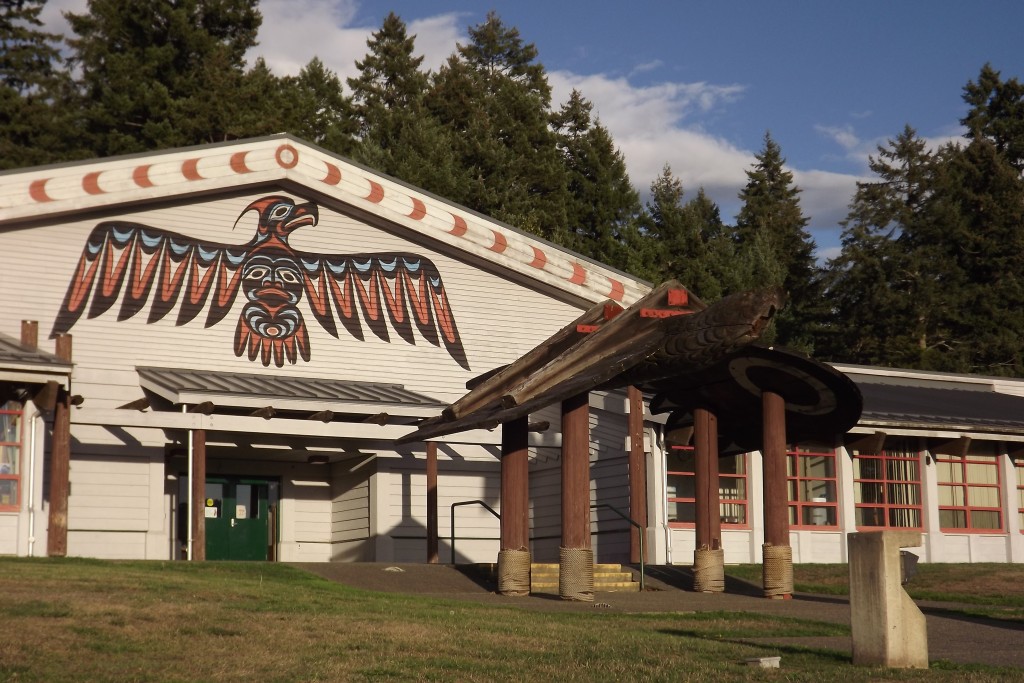
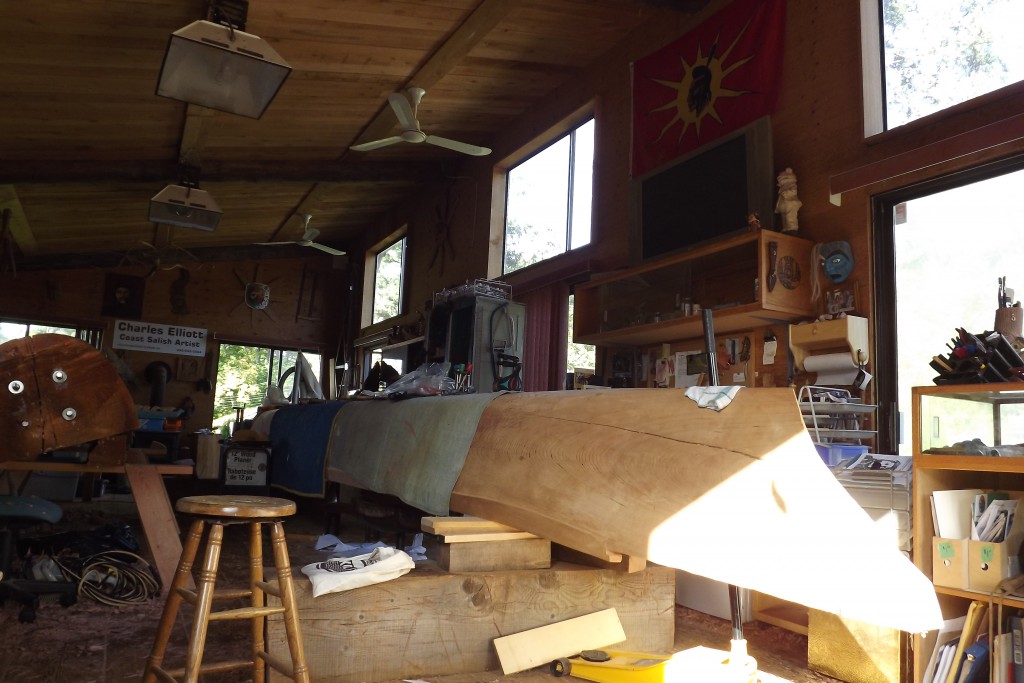 This is Elliott’s studio with a huge ocean-going dugout canoe made of old growth cedar, a work in progress. On the left is the base of a new totem pole.
This is Elliott’s studio with a huge ocean-going dugout canoe made of old growth cedar, a work in progress. On the left is the base of a new totem pole.
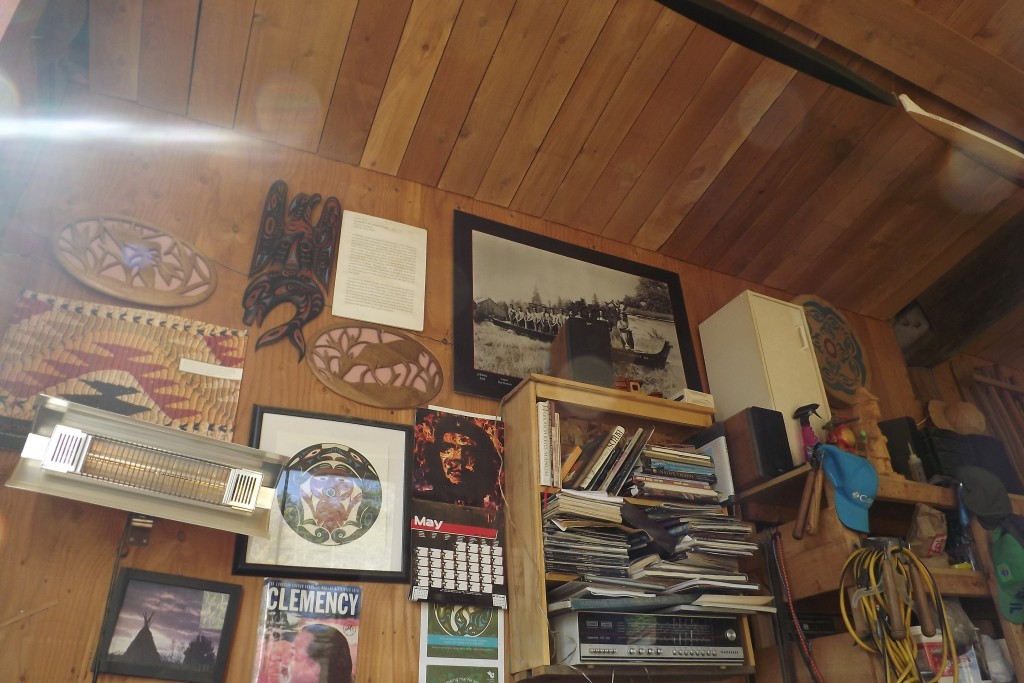 Studio again. Note the Che Guevara image, one of several, in the studio, also mentioned by Elliott. You can’t forget that the natives are a colonized and dispossessed people who wake up every morning and look around and see commuters racing up the highway to a city that covers the land that was once theirs spiritually and economically, land they never gave away in any sense proper to their own culture and way of thinking. Put yourself in their shoes. As Elliott said, it’s as if there is a constant cloud or blanket of colonization over the natives. How they could they forget and be pleased?
Studio again. Note the Che Guevara image, one of several, in the studio, also mentioned by Elliott. You can’t forget that the natives are a colonized and dispossessed people who wake up every morning and look around and see commuters racing up the highway to a city that covers the land that was once theirs spiritually and economically, land they never gave away in any sense proper to their own culture and way of thinking. Put yourself in their shoes. As Elliott said, it’s as if there is a constant cloud or blanket of colonization over the natives. How they could they forget and be pleased?
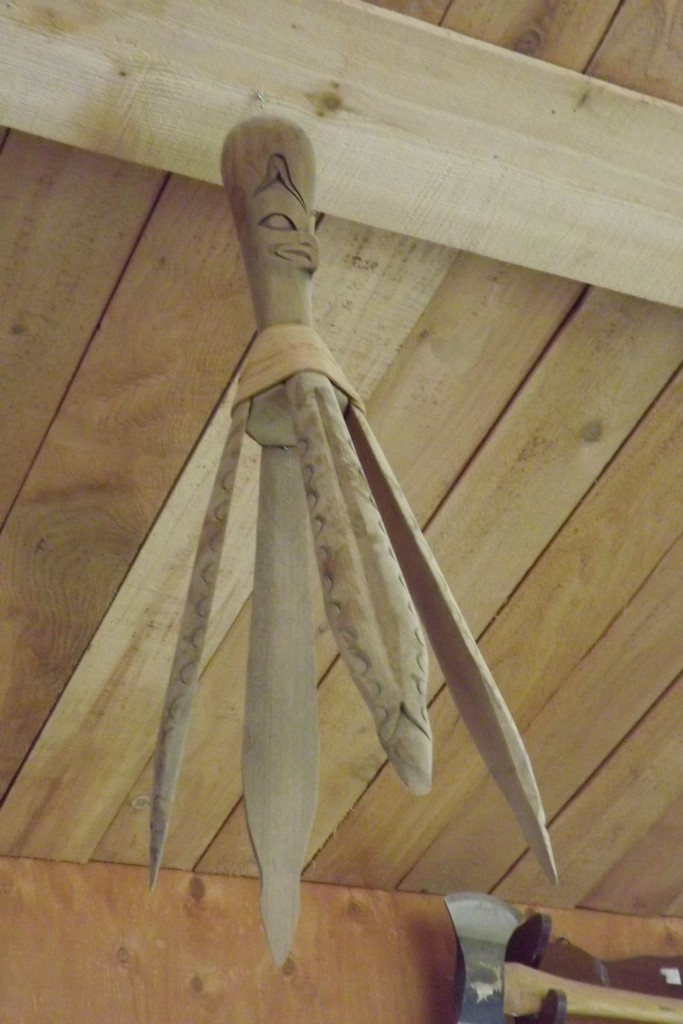 Little things all over the studio. Here’s a spinning fish lure in the shape of an octopus, the legs scalloped with those bracket patterns. Everything comes to life in this art world, inanimate objects, utilitarian objects.
Little things all over the studio. Here’s a spinning fish lure in the shape of an octopus, the legs scalloped with those bracket patterns. Everything comes to life in this art world, inanimate objects, utilitarian objects.
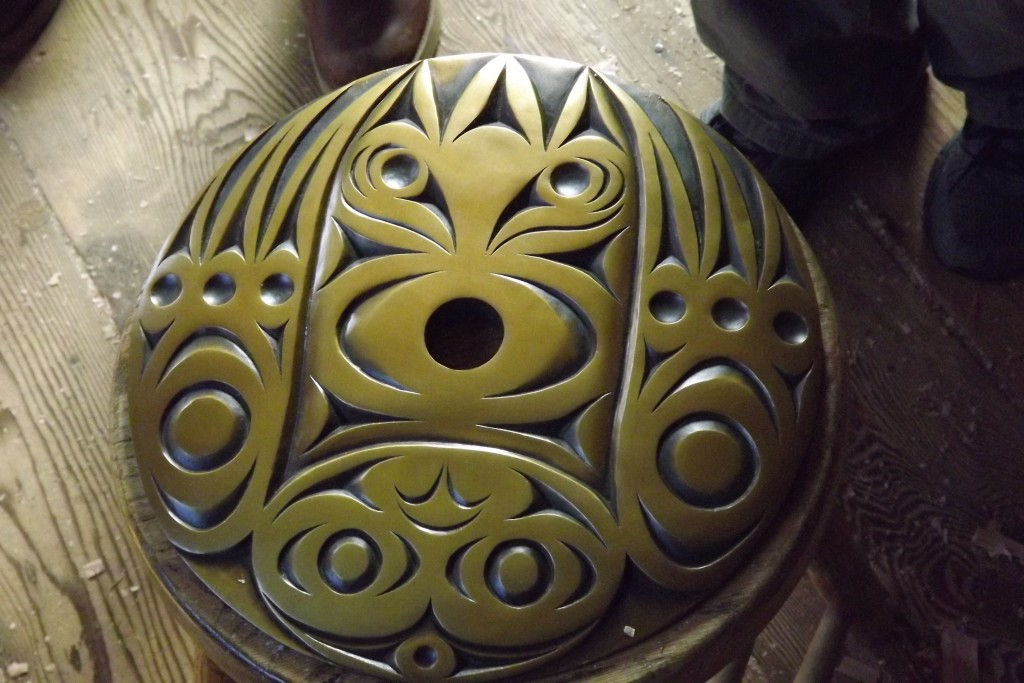 So here’s a bronze spindle whorl (traditionally they were made of wood) made by Elliott’s 19-year-old son, Chas Elliott, who is learning the art from his father and brought this over to show us. If I remember correctly this is a seal (but I heard so much I might be misremembering). Mouth in the spindle opening. Flippers or paws to the side. Flippers accented with eye and bracket and lanceolate shapes. Here’s a link to show where both father and son appeared a couple of years ago.
So here’s a bronze spindle whorl (traditionally they were made of wood) made by Elliott’s 19-year-old son, Chas Elliott, who is learning the art from his father and brought this over to show us. If I remember correctly this is a seal (but I heard so much I might be misremembering). Mouth in the spindle opening. Flippers or paws to the side. Flippers accented with eye and bracket and lanceolate shapes. Here’s a link to show where both father and son appeared a couple of years ago.
 DG with a “talking stick” (you would hand this to someone who would then hold the floor whole others listened). By now you should be able to distinguish some of the motifs and design elements.
DG with a “talking stick” (you would hand this to someone who would then hold the floor whole others listened). By now you should be able to distinguish some of the motifs and design elements.
 Outside the studio looking at a totem pole in for repair after about 20 years in the field. Totem poles don’t last forever, obviously. This one needs to be shaved down to fresh wood and repainted. And there is some rot at the top that needs digging out and a plug put in. A sad thing is that native carvers like Elliott can only work with old growth timber. For some reason, the old growth trees grew slower, their tree rings are much closer together, and the wood is harder and more durable. Newer trees seem to grow faster (perhaps because they get more light), the rings are farther apart and the wood between is “punky.” There is hardly any old growth timber left. I won’t go on. This is just a taste of the visit with Elliott, an immense privilege, not to mention fascinating; I could go on and on.
Outside the studio looking at a totem pole in for repair after about 20 years in the field. Totem poles don’t last forever, obviously. This one needs to be shaved down to fresh wood and repainted. And there is some rot at the top that needs digging out and a plug put in. A sad thing is that native carvers like Elliott can only work with old growth timber. For some reason, the old growth trees grew slower, their tree rings are much closer together, and the wood is harder and more durable. Newer trees seem to grow faster (perhaps because they get more light), the rings are farther apart and the wood between is “punky.” There is hardly any old growth timber left. I won’t go on. This is just a taste of the visit with Elliott, an immense privilege, not to mention fascinating; I could go on and on.
—DG, photos mostly by MF
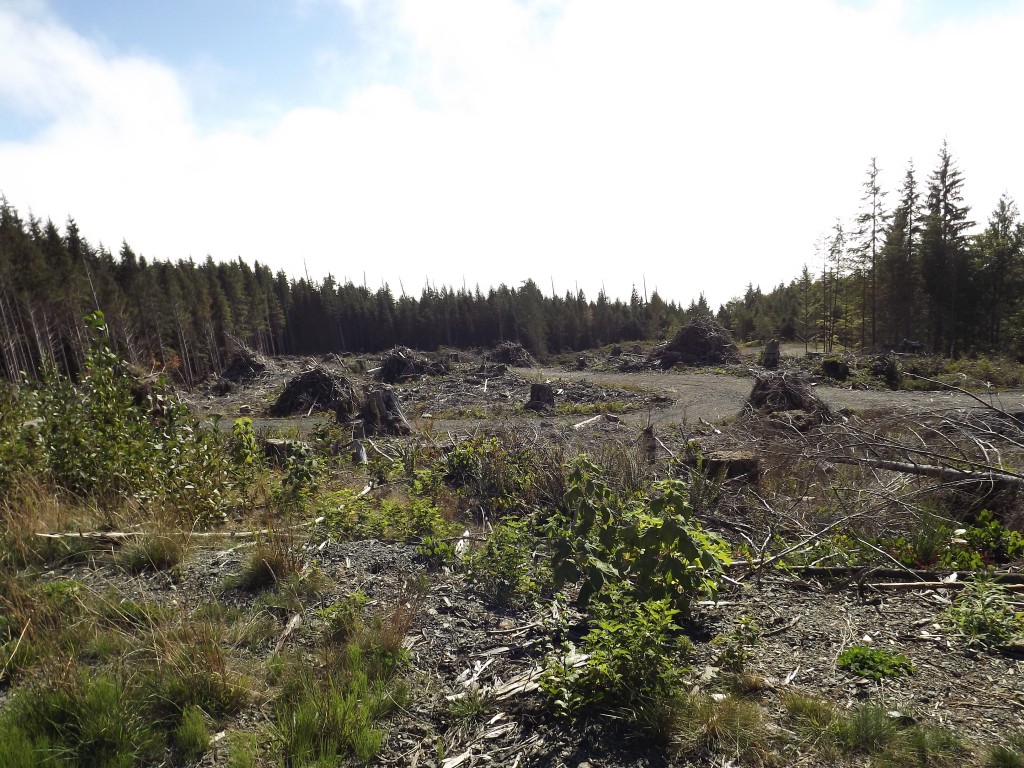 Surprisingly, there are great swathes of clear cut forest all along the coastal road in the west. Sometimes the lumber companies leave a thin screen of trees along the road and sometimes not. Depressing to see. Most of the logs go straight to China these days.
Surprisingly, there are great swathes of clear cut forest all along the coastal road in the west. Sometimes the lumber companies leave a thin screen of trees along the road and sometimes not. Depressing to see. Most of the logs go straight to China these days.
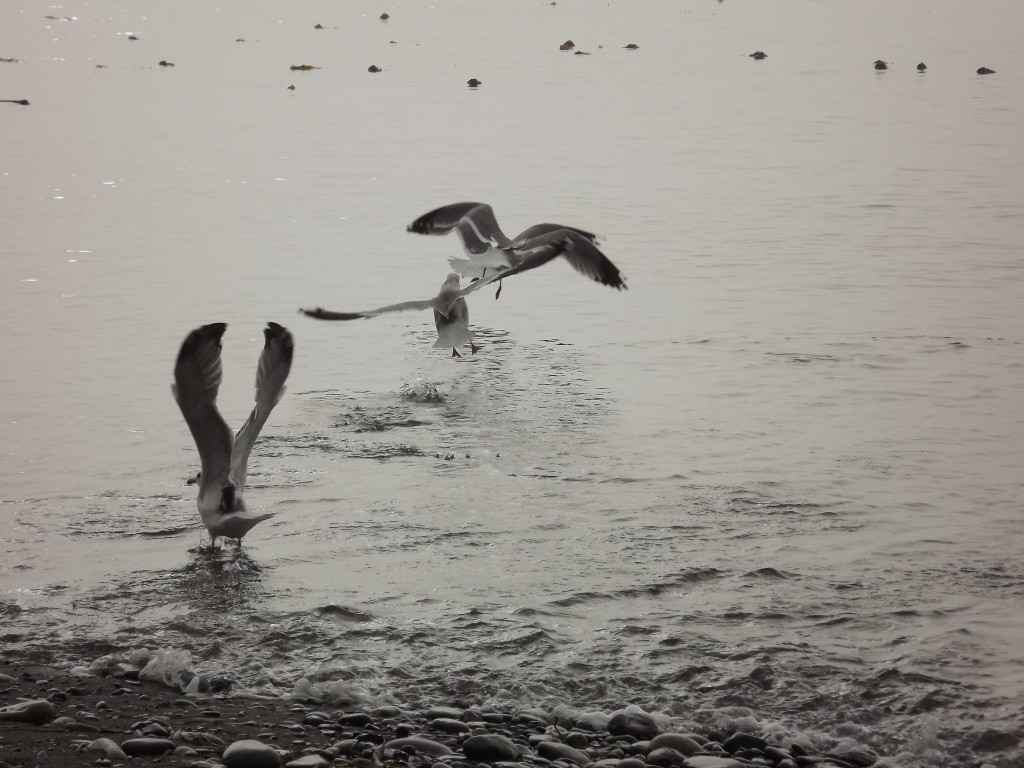 Sombrio Beach (photo by MF). Behind us, makeshift tents and campsites occupied by surfers trying to dry out in the dense mist.
Sombrio Beach (photo by MF). Behind us, makeshift tents and campsites occupied by surfers trying to dry out in the dense mist.
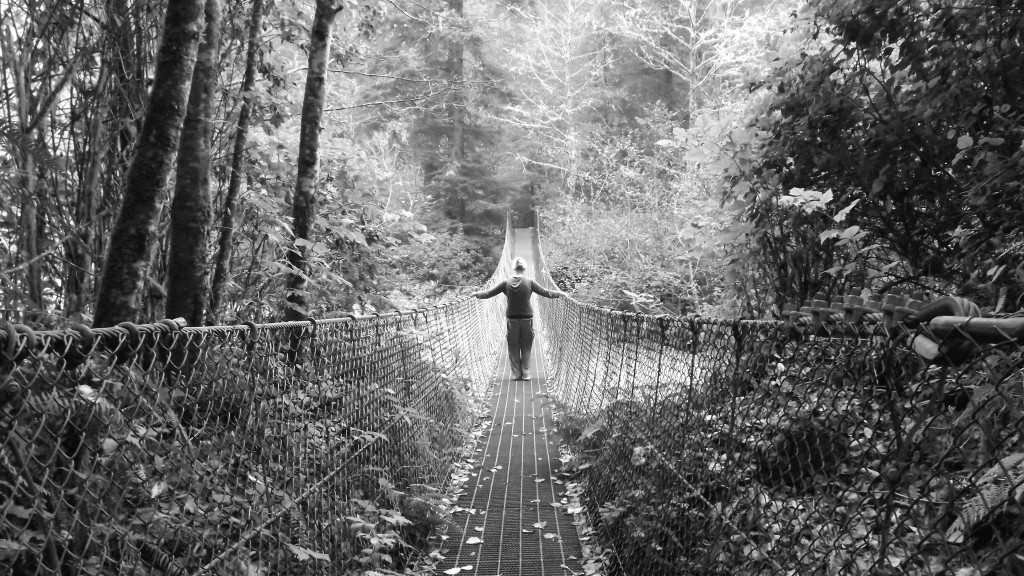 The Juan de Fuca Trail near Sombrio Beach.
The Juan de Fuca Trail near Sombrio Beach.
 DG at the University of Victoria First Peoples House as a guest of Taiaiake Alfred and the Indigenous Governance department, talking to grad students and faculty in the program. Not a great photo and dg looks particularly self-important, perhaps conducting a symphony, but it’s the only one and it preserves the moment.
DG at the University of Victoria First Peoples House as a guest of Taiaiake Alfred and the Indigenous Governance department, talking to grad students and faculty in the program. Not a great photo and dg looks particularly self-important, perhaps conducting a symphony, but it’s the only one and it preserves the moment.
 Here’s the hall (without people). Amazing place modeled on the traditional Coast Salish long house.
Here’s the hall (without people). Amazing place modeled on the traditional Coast Salish long house.
 Taiaiake Alfred presented dg with a coveted Indigenous Nationhood Movement tshirt, which meant a lot.
Taiaiake Alfred presented dg with a coveted Indigenous Nationhood Movement tshirt, which meant a lot.
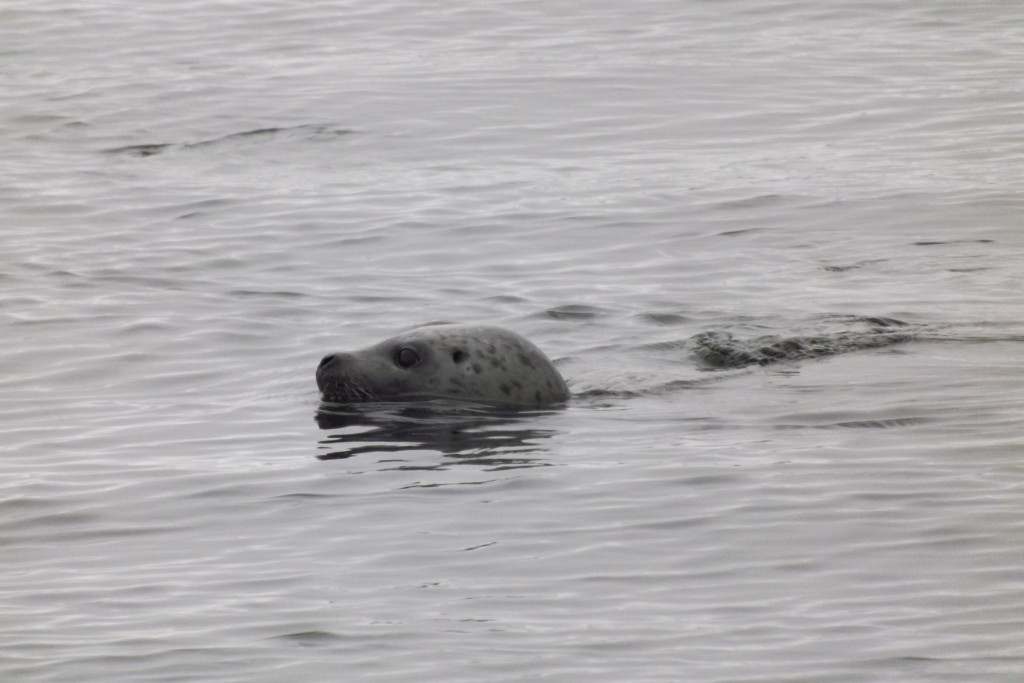 Harbor seal off the marina wharf in Mill Bay. They were playing all along the coast, some far out and diving with dramatic tail slaps. At Mill Bay we heard the tail slaps, saw loons and a kingfisher and then a bald eagle zoomed close overhead, all in about five minutes. DG stopped mentioning the seals to the locals because it marked him as a greenhorn.
Harbor seal off the marina wharf in Mill Bay. They were playing all along the coast, some far out and diving with dramatic tail slaps. At Mill Bay we heard the tail slaps, saw loons and a kingfisher and then a bald eagle zoomed close overhead, all in about five minutes. DG stopped mentioning the seals to the locals because it marked him as a greenhorn.
 Cow Bay, a touristified, single-street, old village on the coast, organic foods, organic baked goods, and one store that sold liquor and tools.
Cow Bay, a touristified, single-street, old village on the coast, organic foods, organic baked goods, and one store that sold liquor and tools.
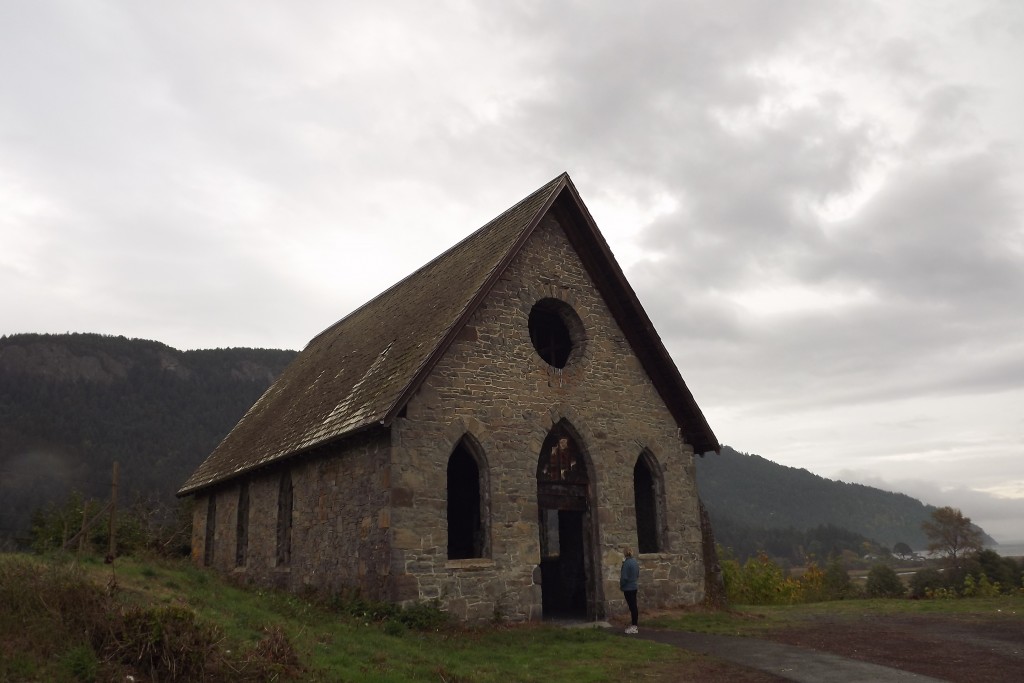 This is the so-called butter church on Comiaken Hill in the Cowichan Reserve, Cowichan Bay in the background to the right. Abandoned, it was the first church in the area, an ancient-looking chapel, on a hill that feels lonely, mysterious and sacred, empty grass field to the left where people were once buried, though most of the markers are down, one lone oak tree, low mountains all around except in the direction of the bay. Also a place of ill-memory because of treaties signed nearby in the 1850s. The church was built in 1870 with the help of natives who were paid with money earned from the sale of butter. Apparently.
This is the so-called butter church on Comiaken Hill in the Cowichan Reserve, Cowichan Bay in the background to the right. Abandoned, it was the first church in the area, an ancient-looking chapel, on a hill that feels lonely, mysterious and sacred, empty grass field to the left where people were once buried, though most of the markers are down, one lone oak tree, low mountains all around except in the direction of the bay. Also a place of ill-memory because of treaties signed nearby in the 1850s. The church was built in 1870 with the help of natives who were paid with money earned from the sale of butter. Apparently.

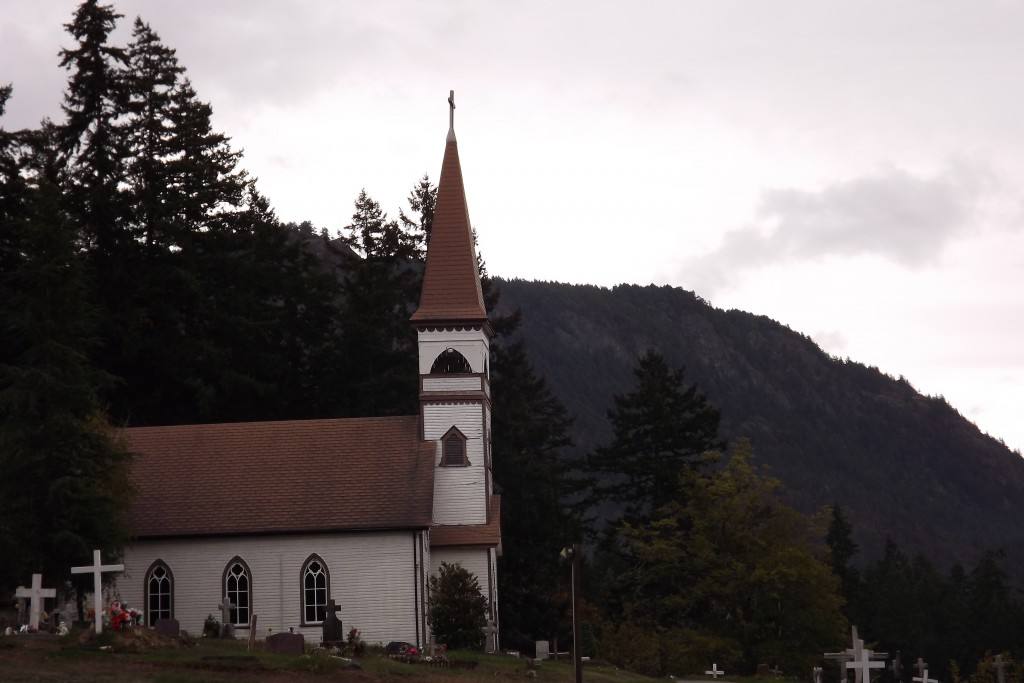 St. Anne’s Church, just down the road from the butter church. Back in Victoria we had run into an ancient beekeeper who said his great- or great-great-grandfather was Chief George Tzouhalem of the Cowichan band. An Irishman who fought with Pickett at Gettysburg apparently came up the coast and married the chief’s 15-year-old daughter — this was the beekeeper’s line. He said to drive up to this place because old chief Tzouhalem is buried here and his grand-daughter bought a pink granite plinth and had it raised over the grave. We walked all through this sombre place and finally, yes, did discover the plinth, raised by the grand-daughter Ettie George, just as the beekeeper had said. He had known Ettie and had stories.
St. Anne’s Church, just down the road from the butter church. Back in Victoria we had run into an ancient beekeeper who said his great- or great-great-grandfather was Chief George Tzouhalem of the Cowichan band. An Irishman who fought with Pickett at Gettysburg apparently came up the coast and married the chief’s 15-year-old daughter — this was the beekeeper’s line. He said to drive up to this place because old chief Tzouhalem is buried here and his grand-daughter bought a pink granite plinth and had it raised over the grave. We walked all through this sombre place and finally, yes, did discover the plinth, raised by the grand-daughter Ettie George, just as the beekeeper had said. He had known Ettie and had stories.
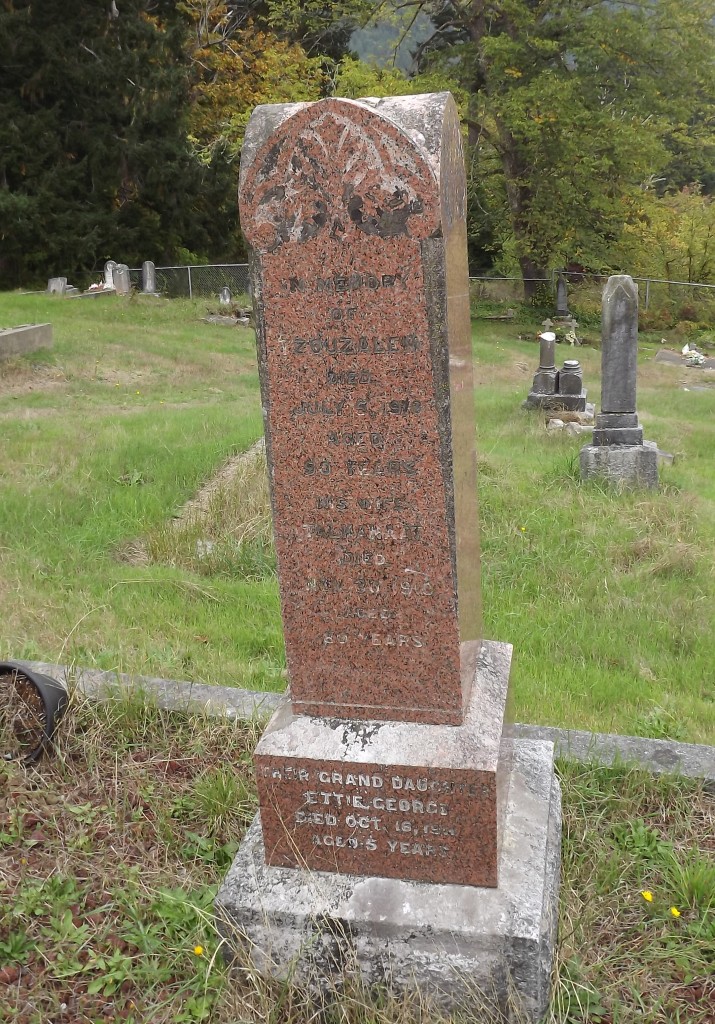
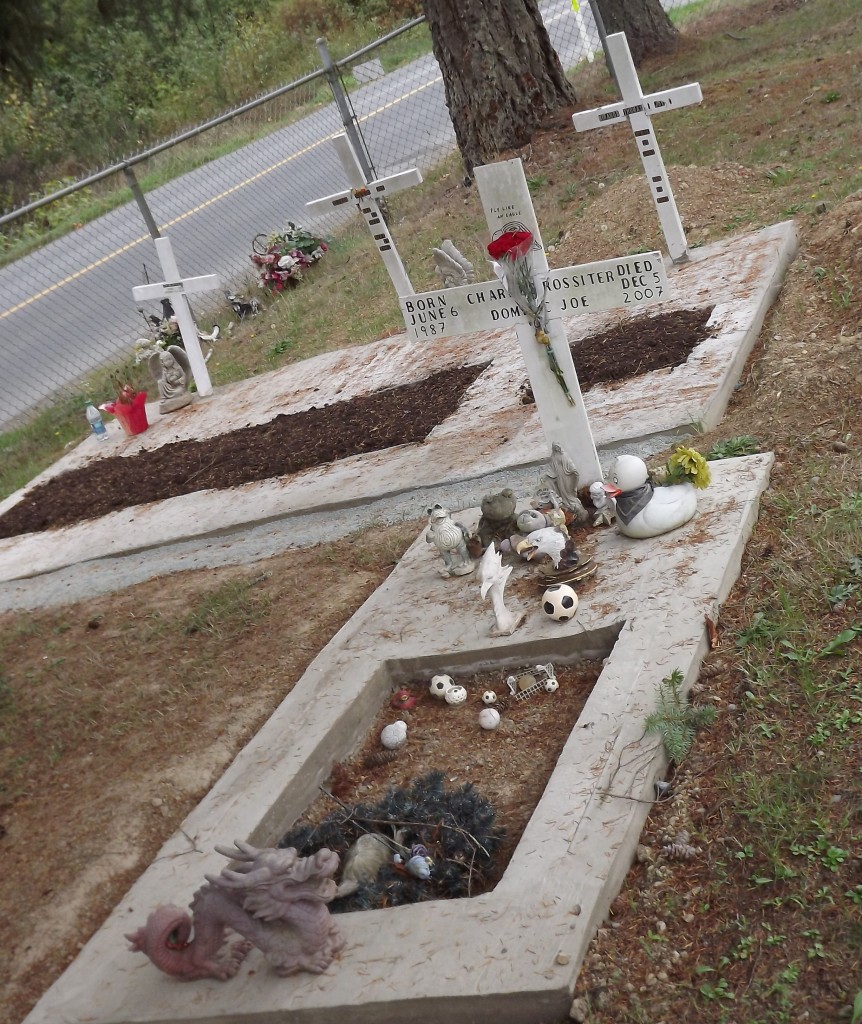
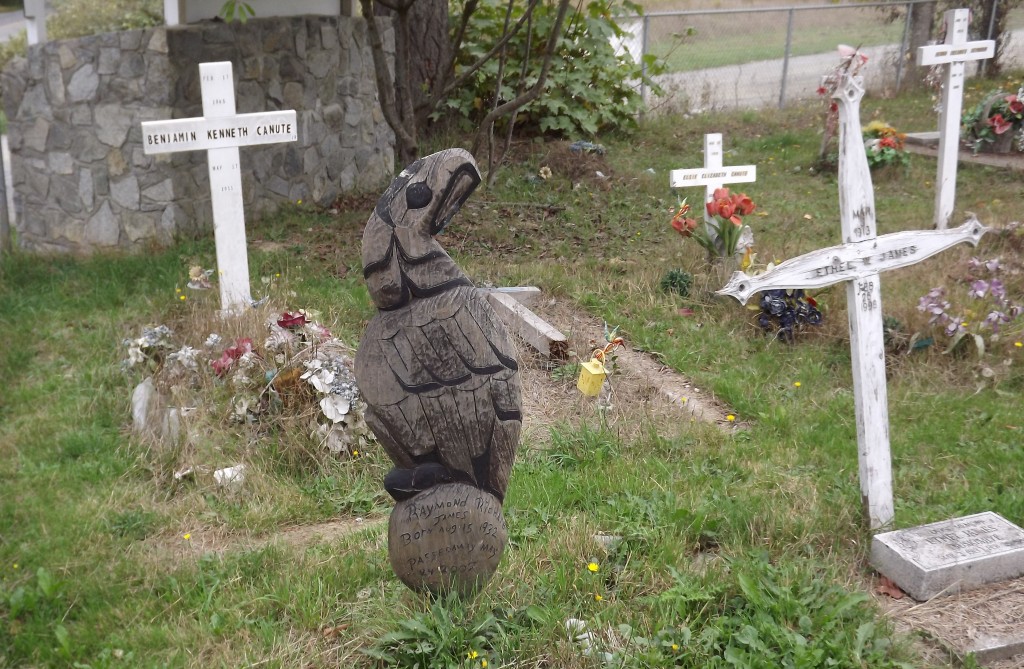 Christianity is dissipating perhaps. The crosses all over the graveyard were mostly temporary markers. Occasionally, there was something more indicative of a different way of being. Later, I got to talk to a man who makes the grave markers, a social role passed down through his family, and he said the crosses are just places to put names now, not signs of belief. Alarming number of fresh graves in every native graveyard, signs of hard lives, poverty and the depression that goes with being a dispossessed and colonized people.
Christianity is dissipating perhaps. The crosses all over the graveyard were mostly temporary markers. Occasionally, there was something more indicative of a different way of being. Later, I got to talk to a man who makes the grave markers, a social role passed down through his family, and he said the crosses are just places to put names now, not signs of belief. Alarming number of fresh graves in every native graveyard, signs of hard lives, poverty and the depression that goes with being a dispossessed and colonized people.
 Reading at Open Space Gallery, Victoria.
Reading at Open Space Gallery, Victoria.
 Photo credit: Miles Giesbrecht. Artists’ works: Tommy Ting (London), Dong-Kyoon Nam (Winnipeg).
Photo credit: Miles Giesbrecht. Artists’ works: Tommy Ting (London), Dong-Kyoon Nam (Winnipeg).
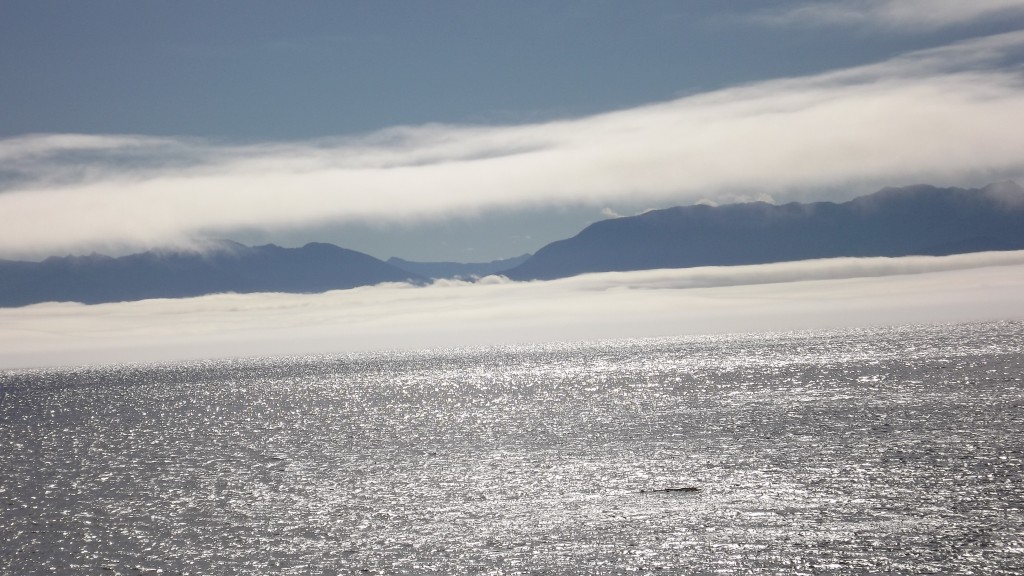 Mist on the water. Strait of Juan de Fuca near Sooke.
Mist on the water. Strait of Juan de Fuca near Sooke.
 Port Renfrew otters (just before we saw the bear).
Port Renfrew otters (just before we saw the bear).
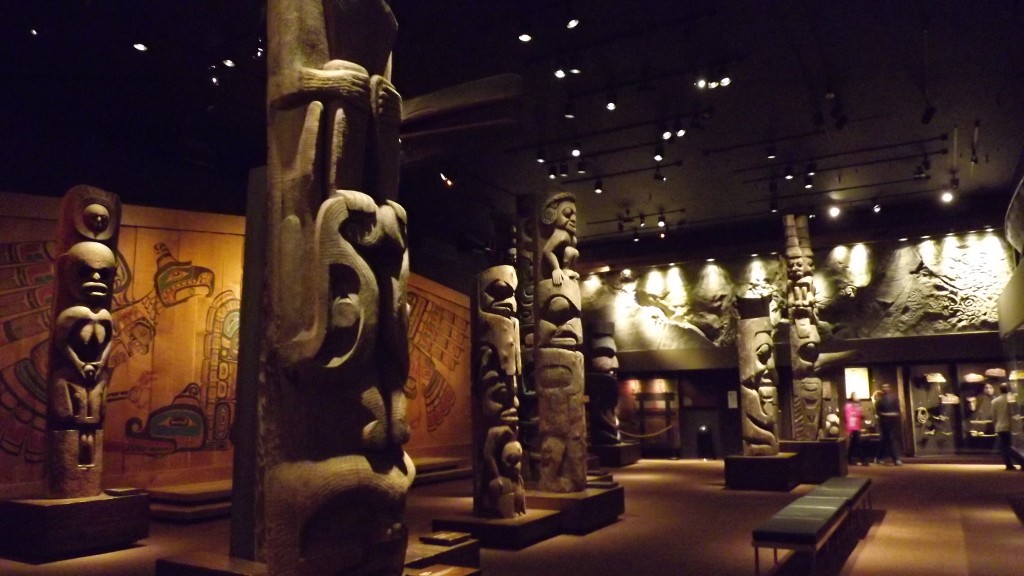 First Nations exhibit, Royal BC Museum.
First Nations exhibit, Royal BC Museum.
 Bonnie Prince Charlie bidding farewell to Flora MacDonald on the Isle of Skye after the Battler of Culloden, from the London Illustrated News.
Bonnie Prince Charlie bidding farewell to Flora MacDonald on the Isle of Skye after the Battler of Culloden, from the London Illustrated News.
Okay, the referendum is today. A brief memoir: I have Scottish blood, McCall and McInnes. On the McCall side, there was a Scottish soldier who fought with Wolfe at Quebec and then came west along the Lake Erie shore during Pontiac’s Rebellion. He was demobilized in New Jersey, but left the United States after the Revolution and ended up in what became known as the Long Point Settlement in what is now southwestern Ontario. On the McInnes side, there was a fatherless boy, taken up by Sir Walter Scott, educated and sent on the Grand Tour, who then inherited slaves and a tapioca plantation in Curaçao. Later he became the youngest slave owner indemnified by the British government for giving up his slaves. He took the money, moved also to southwestern Ontario, and never worked again. The two families eventually intermarried and my great-great-grandfather Daniel McCall ran a store in St Williams, Ontario, on the Erie shore. At some point, someone in the family cut this illustration from the London Illustrated News, framed it, and hung it in the outhouse (posh outhouse). Later, my grandmother, who grew up with it, took the illustration to live with her. Now it lives with me, hangs above my desk. So now you know which way I’d vote. On the other hand, these things always have a way of disappointing romantics, so I can’t bear to watch the news today.
dg
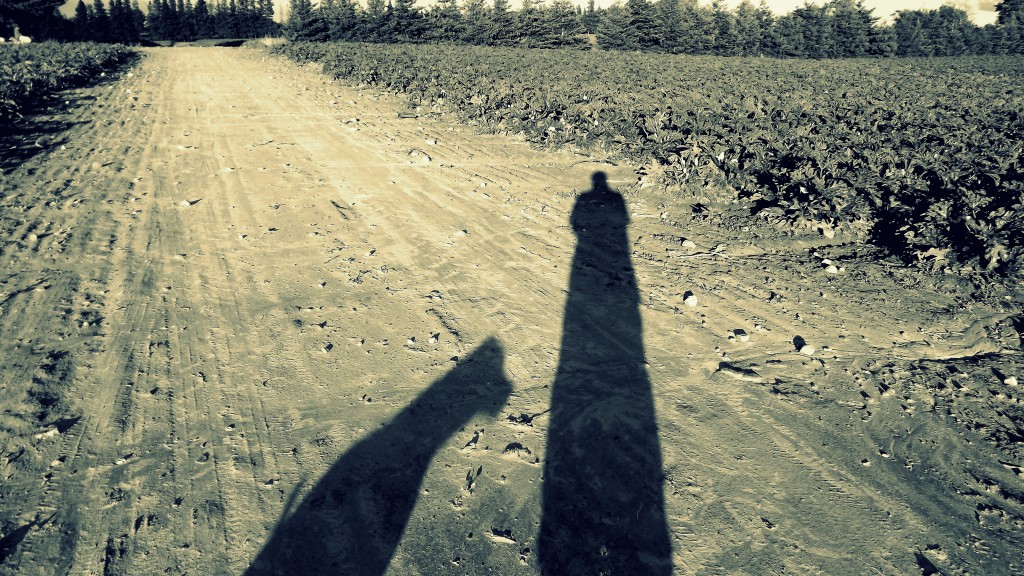 DG (right) and Lucy (left) on the farm (art shot — yes, I know it’s annoying).
DG (right) and Lucy (left) on the farm (art shot — yes, I know it’s annoying).
DG and Lucy were just on the farm in Ontario, you know, for a brief visit, a drug intervention with his mother, a fight with a young gun investment advisor trying to get his hands on his mother’s cash, a movie with Jonah (we went to see the latest Planet of the Apes extravaganza; very funny since he is moving to San Francisco in the fall and dg would keep saying, See, there’s your BART station and there’s your apartment without a roof), flea bombing the tenant house, and dinner with a dear old friend who had a heart attack a month ago and was put in an induced coma and quick frozen, apparently, with no ill effects. (The part about the drug intervention is a joke. Do I have to tell you everything?)
He found a treasure trove of old negatives and discovered that you can make pictures from old out-size negatives by using a laptop screen as a light box and taking a picture of the negative. Then he used photo software to invert the negative to a black and white photo. You should be impressed with his ingenuity.
So….
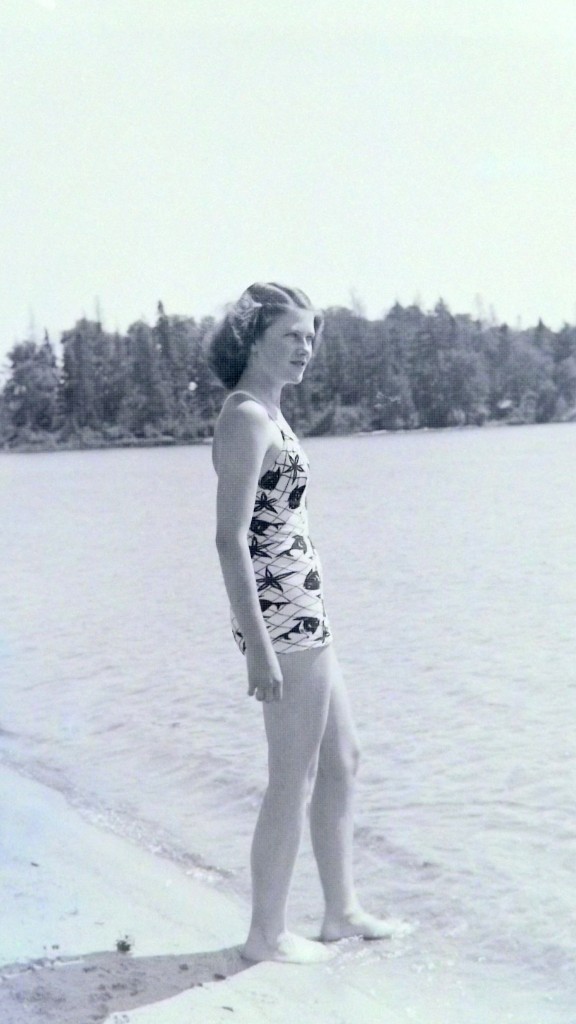 Jean somewhat earlier in life.
Jean somewhat earlier in life.
The nearest town is Waterford, where dg went to high school, about two miles from the farm.
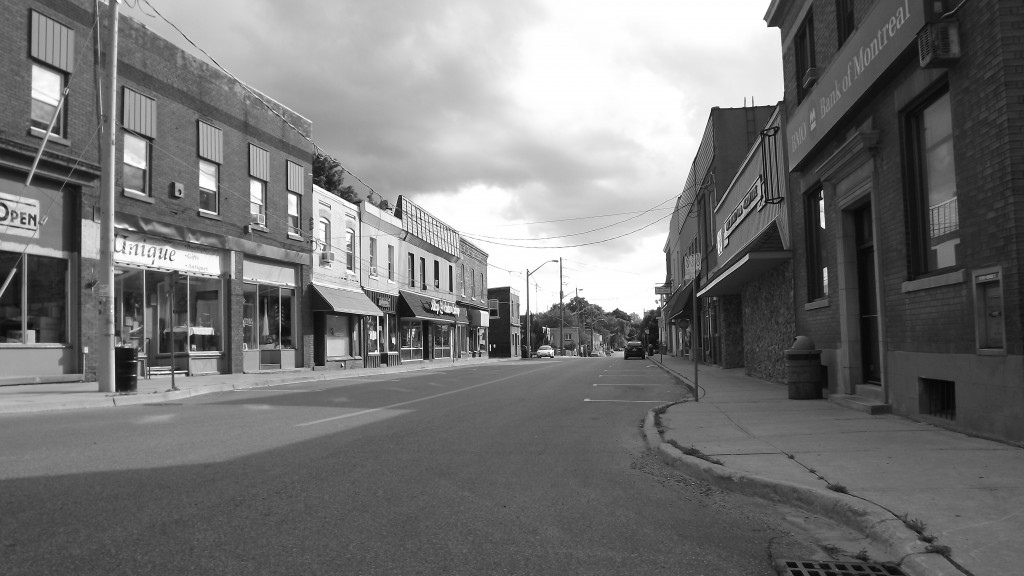 Alice Street, Waterford, rush hour. DG’s bank since childhood on your immediate right.
Alice Street, Waterford, rush hour. DG’s bank since childhood on your immediate right.
Here’s one of the town appliance stores. What’s interesting is that this used to be a movie theater. You can tell by the shape of the building. DG saw his first ever movie here, a documentary about Queen Elizabeth’s coronation. The fact that this was the first movie he ever saw and that it is burned into his memory tells you a lot about what is wrong with him.
After it was a movie theater, it was a pool hall, den of sin (according to Jean). Nothing but failed individuals and juvenile delinquents frequented pool halls. Then it was a lunch restaurant where farmers used to convene to drink coffee and talk about bad weather. DG can remember going there with his father and having hot turkey sandwiches with french fries and chocolate milkshakes. No better food has been invented since (he avers, nostalgically).
Another major landmark, sign of long gone industrial prosperity, is the old knitting mill (underwear factory), now given over to antiques.
Alice Street runs east-west. The movie theater was at the east end and the knitting mill was at the west end hard by the train station. The train from New York to Detroit used to run through Waterford parallel to Alice Street behind the bank and the theater. Now the former rail line is a hiking trail, and next to it is a rather peaceful series of ponds and lakes.
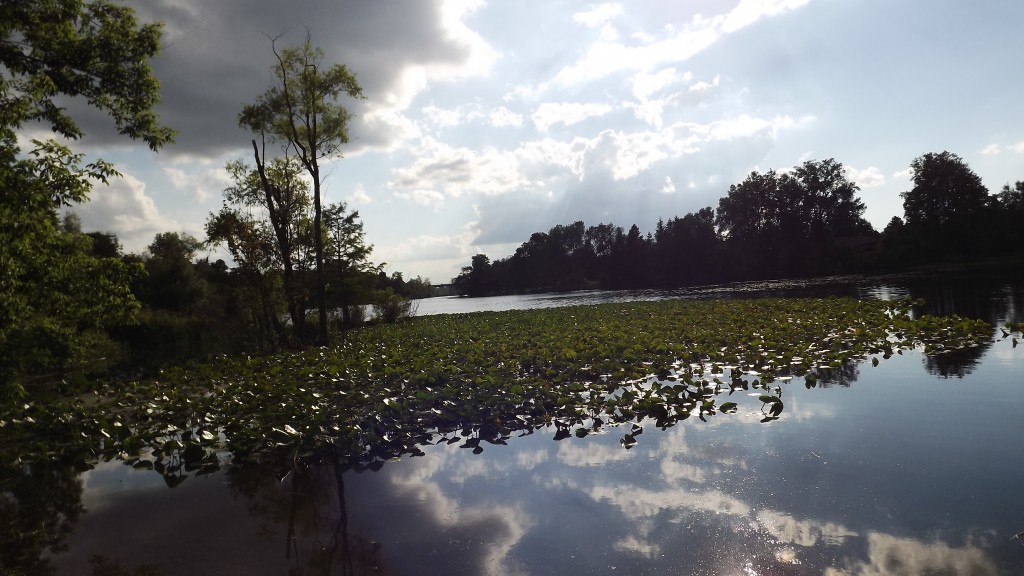 About 100 yards from the knitting mill.
About 100 yards from the knitting mill.
While dg was taking pictures he ran into a nice, depleted young man in a black leather pants, a Harley t-shirt and a black leather vest who opened up the conversation by saying he had a brain tumor but that his life had turned around recently when he began seeing UFOs. Apparently, crowds have gathered to watch the fiery lights go up and down the Grand River in Paris, Ontario, a nearby town. But even Waterford has had its visitations. (DG has always had a suspicion that he is not of this world. They are sending ships back for him.)
New word learned on this trip: earthing. It means to walk barefoot.
 Field of tomatoes on the farm.
Field of tomatoes on the farm.
 One of the chickens, looking a bit like an alien.
One of the chickens, looking a bit like an alien.
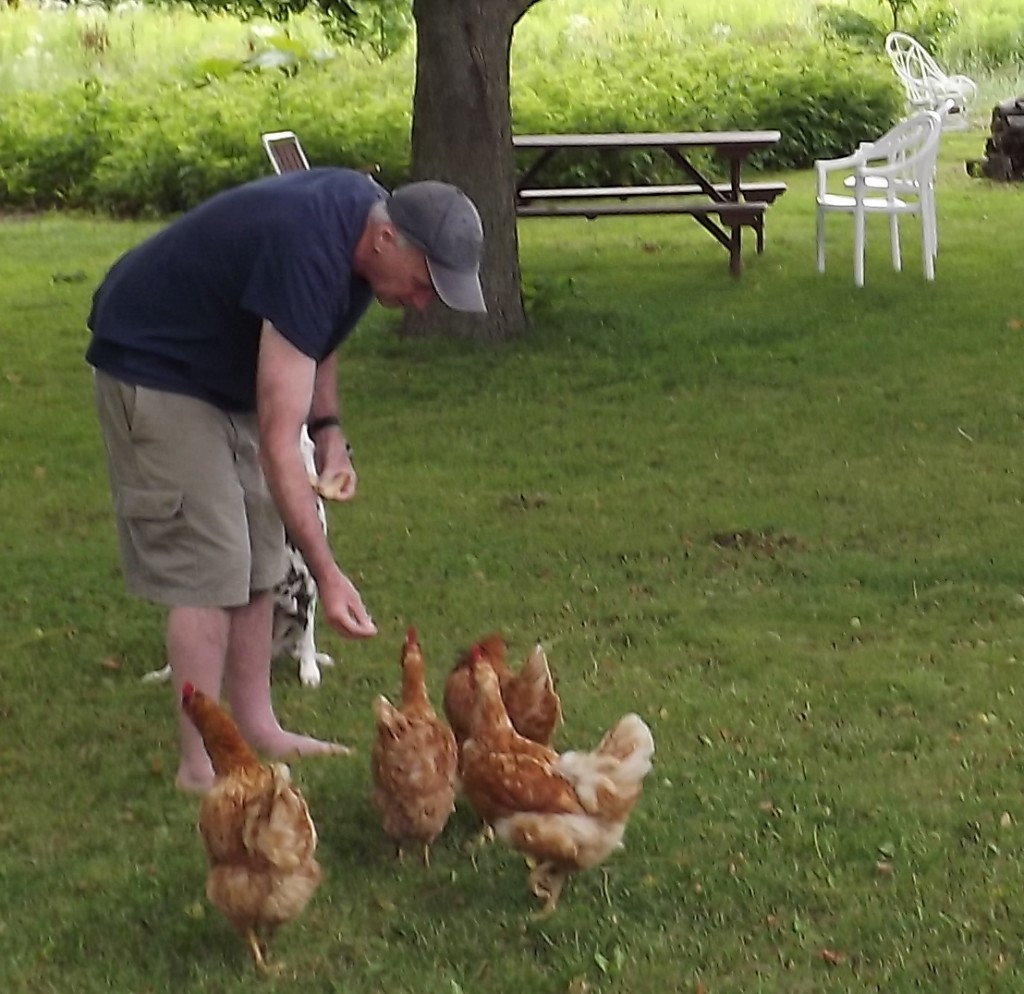 DG with the chickens (photo by Jean; this is her first photo credit, a milestone at 93).
DG with the chickens (photo by Jean; this is her first photo credit, a milestone at 93).
—dg
DG is on his way home, though at this stage of life home is a moving target, indeterminate and scattered, more like a field of destinations than a particular place. Let’s just say he gets mail at a lot of different addresses.
But his sojourn as Writer-in-Residence at the University of New Brunswick is over and on April 16, as new snow blanketed Fredericton and the St. John River continued to rise across the street from Mark Jarman’s house, he left town (and was subsequently nearly swept away outside of Lancaster, NH, where the Connecticut River had flooded over Bridge Street in two places).
Last events included a reading at Odd Odd Sunday’s on Friday at Molly’s (postponed from the week before due to a blizzard) on April 11 and another reading at the Qwerty Reading Series at the Grad House Pub (which used to be Alden Nowlan’s house where dg, in a different incarnation, went for dinner a couple of times in the early 1970s) on April 14.
Most fun in the last weeks? Shoveling water with Mark in the flooded backyard where the cars were parked. Yes, shoveling water. Don’t ask. Just think: a couple of guys, estimable writers, trying to avoid work, shoveling water and drinking beer in the sun. Clarissa’s response? Irrepressible disbelief and glee at the strangeness of men. Rob’s response? This will go away if I ignore it.
What does dg feel like leaving? Time to move on but lots of regrets. What does Lucy feel? No, I don’t want to go. This is the best place ever. I have friends. I have put down roots. You can’t make me leave.
For anyone wishing to review the whole unseemly chronicle of events since last September, you can click through the Writer-in-Residence Blog.
dg
 Mark on top of the snow mountain in the backyard, April 3
Mark on top of the snow mountain in the backyard, April 3
 DG’s last reading as Writer-in-Residence at the Grad House (formerly Alden Nowlan’s house), April 14 (Photo by Stephanie Doucette)
DG’s last reading as Writer-in-Residence at the Grad House (formerly Alden Nowlan’s house), April 14 (Photo by Stephanie Doucette)
 Lucy and Clarissa go for a last run together
Lucy and Clarissa go for a last run together
 Backyard from second floor window, April 16
Backyard from second floor window, April 16
 Lucy refusing to get in the car, tucked in her favourite spot on the loveseat, where she spent many happy hours watching television, reading and offering editorial advice to Mark and Clarissa
Lucy refusing to get in the car, tucked in her favourite spot on the loveseat, where she spent many happy hours watching television, reading and offering editorial advice to Mark and Clarissa
About midnight, I went to let Lucy out and realized that in the past couple of hours we’d had nearly a foot of new snow. This after two days of steady sleet and snow mixed. The plow guy came twice over the weekend. He’ll have to come again in the morning. In the kitchen just now, Mark looked at me and said, “This never happened before you came to live here.”
The light is terrible and I can’t take pictures, but I wanted you to get a sense of what being a Writer-in-Residence is like, the stark grandeur of the elements, the threat of imminent death by exposure and starvation. I ate my last can of Irish stew tonight. There is nothing left to eat but banana bread Clarissa brought home from a wake Saturday. Rob has a half-eaten carton of Gelato. We’ll be fighting each other for that soon enough.
It’s now officially April 1.
dg
—
Waterloo Row from the front second floor window.
Out the back door.
Walking out toward the street.
The front of the house.
Lucy waiting by the backdoor.
Mark finishing his book. This is the literary part of the post.
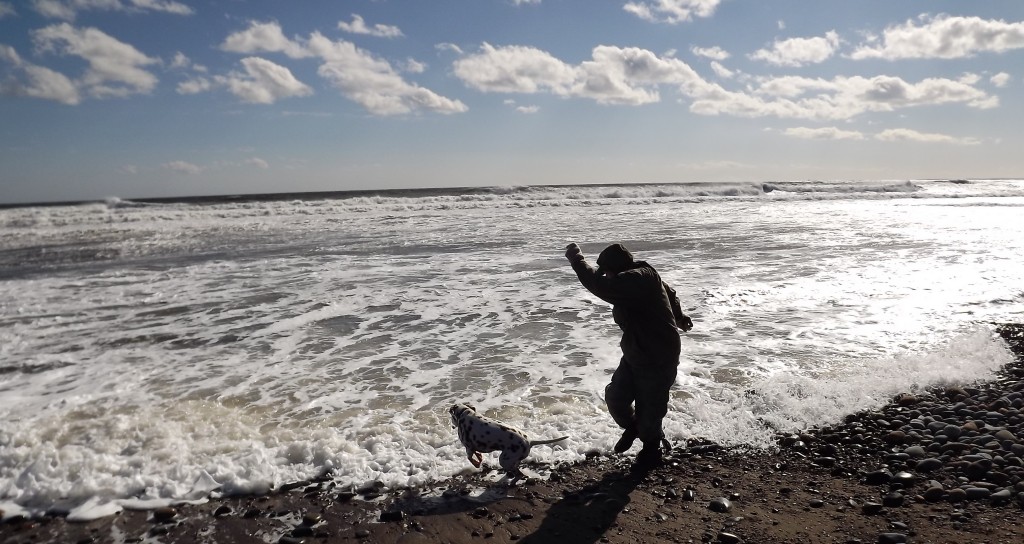 DG & Lucy at Lawrencetown Beach outside Halifax. Photo by Jacob Glover.
DG & Lucy at Lawrencetown Beach outside Halifax. Photo by Jacob Glover.
DG has been on the road for eons, it seems, reading from Savage Love, being a Writer-in-Residence. He has finished many books along the way including Trollope’s The Way We Live Now (very long) and three Evelyn Waugh novels, hitherto kept on hand for emergencies. A new essay is forming: “Novel Structure Lite” (more on this another time). We were in Halifax for the March 13 reading at the University of King’s College, which I’ve already written about). But then we stayed on and went to the beach (yes, Halifax, compared to Fredericton, is positively sub-tropical).
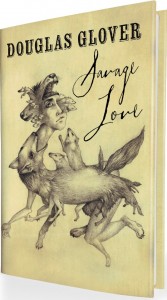
Here’s another picture (bad lighting, I know) from King’s, Jacob introducing dg.
Then dg and Lucy at Lawrencetown Beach again. She gets very excited about surf. Note dg’s trademark camo cargo pants and baseball cap purchased at a high-end art boutique in Venice.
Then home to Fredericton briefly and on to Saint John. My hotel room gave onto the harbour (when I was extremely young, I covered the port for the local daily newspaper — I was there when the first container cranes started working).
And here is the Martello Tower in West Saint John (behind the container terminal), which figures prominently in dg’s short story “The Obituary Writer” from which the name Numéro Cinq is taken. It was cloudy, rainy, windy — everything looked a bit, well. forsaken.
The port in Saint John is at the mouth of the Saint John River (which goes by Mark Jarman’s house where I live in Fredericton). In Saint John, the river flows one way part of the time and then it flows the other way (hence the famous Reversing Falls just upstream from the port). Just above the Reversing Falls is the giant Irving paper mill.
As a cub reporter, dg once helped police snag a drowned man out of the river on the rocks just across from the mill. The man had been in the water for a very long time, and parts of him were falling off as he came to shore. This, too, became a short story with the gruesome title “Floater,” one of those stories that got published in a magazine and then never reprinted (for really good reasons not to be dwelt upon).
And here’s the newspaper building where dg worked. It was then called The Evening-Times Globe (I took this picture through the car window at a stop light — a noble genre).
DG worked here for a year. There was a printing press on the lower floor, a lovely old thing with bells and the smell of lead and oil. Now it’s no longer there. The newspaper is printed in Moncton. The building backs onto Courtney Bay with the huge Irving Oil refinery and docks and transshipment terminal.
All this is kind of dull as imagery, but somehow it wreaked of old excitement and familiarity to dg (despite the wind, rain, sleet, etc.) who was something like 23 at the time (and, yes, dreamed of sailing away on a steamer).
Friday (March 21) was the Moncton reading, at the Aberdeen Cafe, hosted by Lee Thompson who took pictures. (Note dg’s beer strategically placed on a spare baby’s highchair within reach of the microphone.)
For the Saint John-Moncton epic, Lucy stayed home.
Last stop, a reading at Odd Sundays at Molly’s in Fredericton this coming Sunday.
dg
Lucy and dg are still in residence at the University of New Brunswick, though it’s become increasingly difficult to, you know, actually find the university. So far there have been no reports of looting or shooting at the grocery stores. And now that the strike is over a few humans have returned to campus.
We persevere.
dg
 Out the front window at midnight
Out the front window at midnight
 Bald eagle in front of the house overlooking the river
Bald eagle in front of the house overlooking the river
 What the eagles are looking at (usually they would be fishing in the river)
What the eagles are looking at (usually they would be fishing in the river)
 Lucy, Dog of the North (we’re working on her colour coordination; I told her she couldn’t wear the plaid with the blue boots, but would she listen?)
Lucy, Dog of the North (we’re working on her colour coordination; I told her she couldn’t wear the plaid with the blue boots, but would she listen?)
Video produced when the weather was still warm and one could be optimistic.
At this time, one did not realize that most of the Writer-in-Residence job
would involve shoveling Mark Jarman’s car out.
Heading home after the first semester as Writer-in-Residence at the University of New Brunswick. I’ve been living at Mark Anthony Jarman‘s house just across the street from the Saint John River in Fredericton, about a 10-minute walk from the campus, also a 10-minute drive from the university’s research woodlot where I walk the dog often. R. W. Gray lives just down the third-floor hall from me. Both Mark and Rob have new books of stories coming out. According to legend, the house is built on property once owned by Benedict Arnold. Photos by dg, maj & ch.
dg
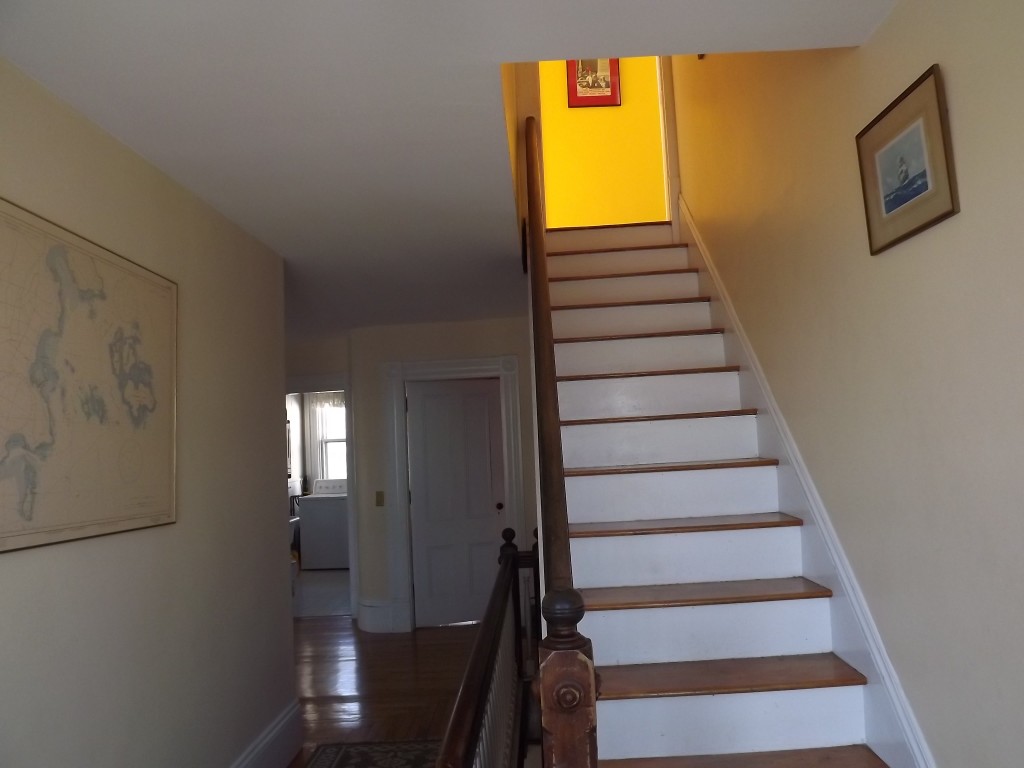 Up to the third floor where dg lives
Up to the third floor where dg lives
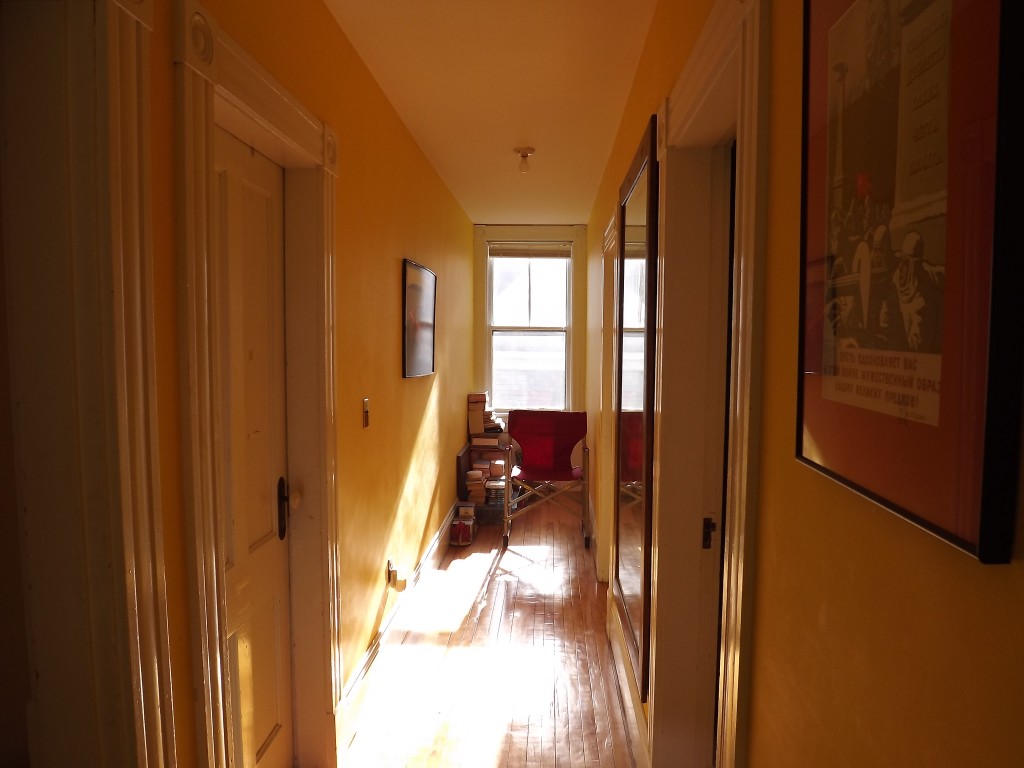 Third floor sunlight, R. W. Gray’s door on left
Third floor sunlight, R. W. Gray’s door on left
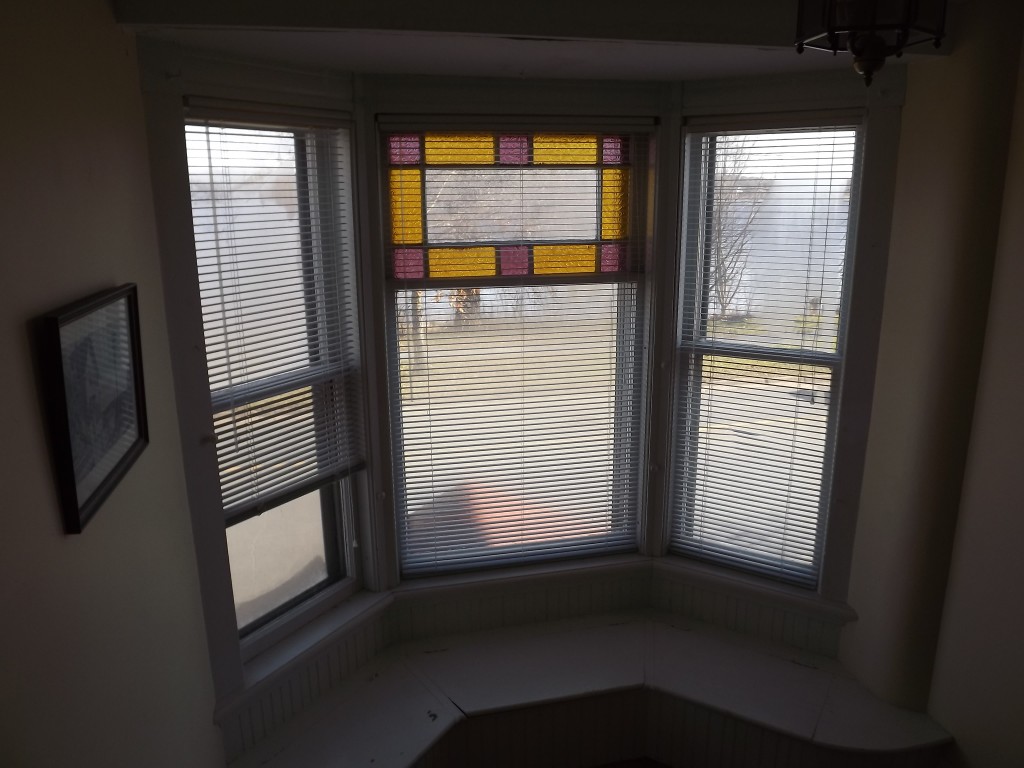 Second floor landing looking out on Waterloo Row and the river
Second floor landing looking out on Waterloo Row and the river
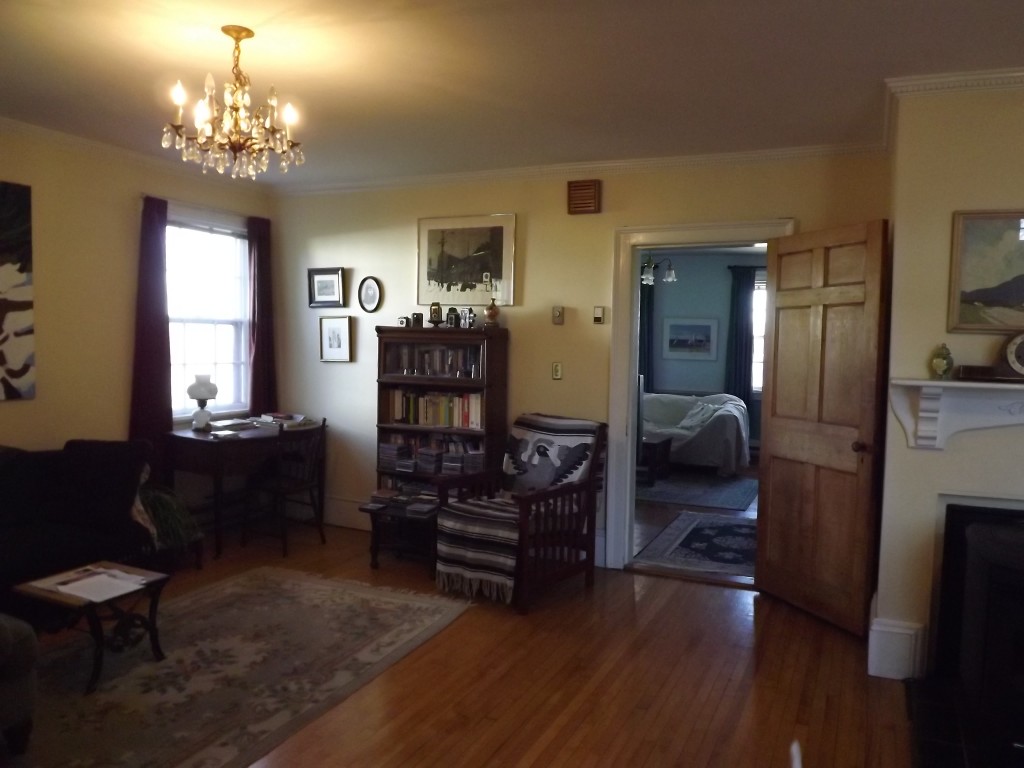 Living room and TV room beyond, new pellet stove at far right
Living room and TV room beyond, new pellet stove at far right
Moonlight illuminates the dancers
and the whitewashed concrete birdbath by the standpipe
and coiled green garden hose and the liquid amber gum tree
and the tree nursery under the chicken-wire frame
that keeps out rabbits and deer.
— from “Dancers at the Dawn” in Savage Love
Here is a picture of the birdbath that appears in Savage Love. You can’t see the standpipe, and the tree nursery is gone, but the liquid amber gum is behind the birdbath. I’ve probably said this before: the farm is in southern Ontario, about 20 miles north of Lake Erie just outside a little town called Waterford.
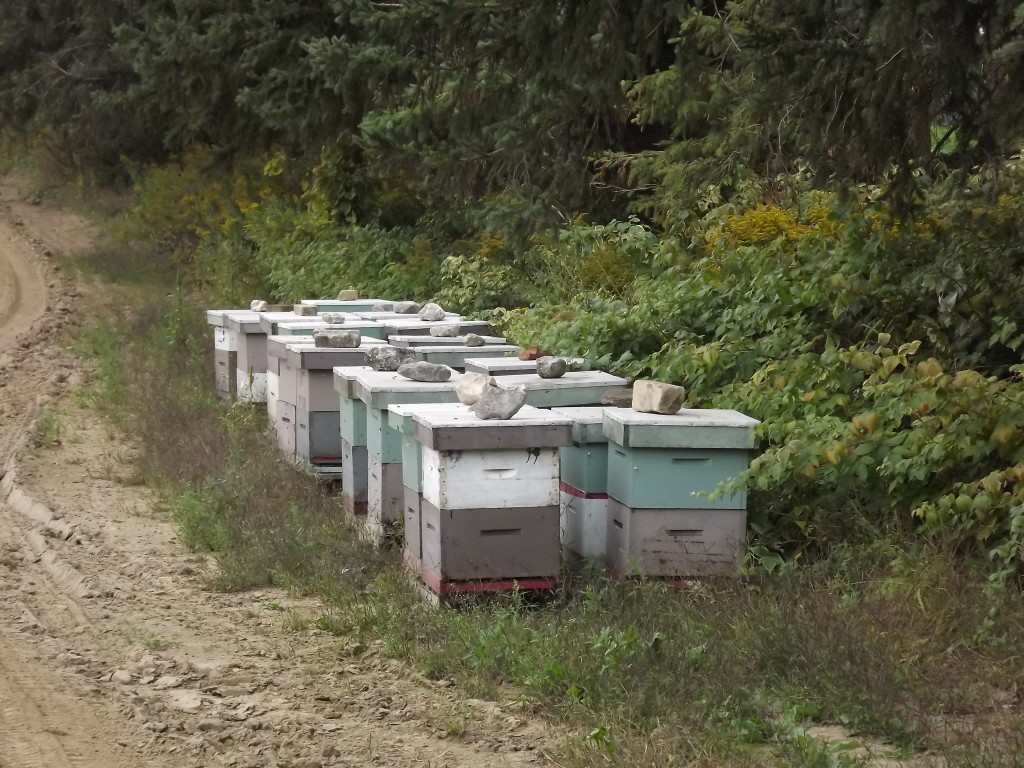 Hives are brought onto the farm during the growing season.
Hives are brought onto the farm during the growing season.
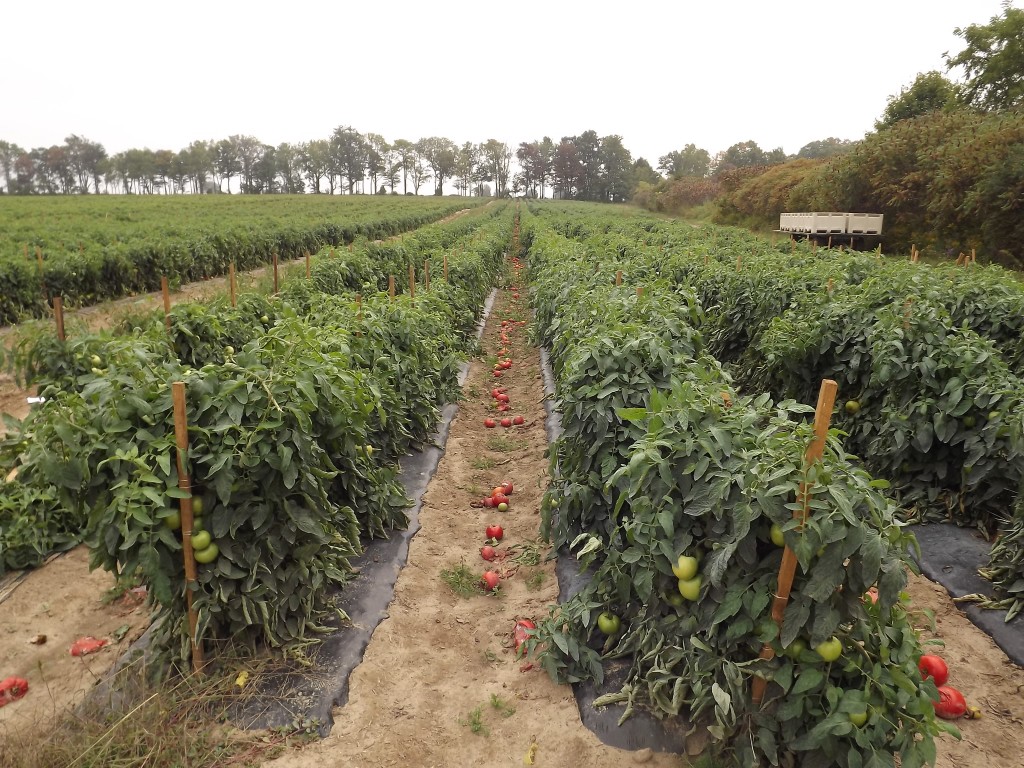 Field tomatoes, note the wastage, a fact of modern agriculture — many of these are perfectly good tomatoes that can’t be sold in the current market.
Field tomatoes, note the wastage, a fact of modern agriculture — many of these are perfectly good tomatoes that can’t be sold in the current market.
—dg
One of those recent trips took me to Canada, where I was one of six artists participating in a couple of mixed-genre events. These were arranged by the wonderful Ontario poet and essayist John B. Lee, whose works are so copious, accomplished and varied that I can’t single out any one, two or three books by his hand to recommend. Google this terrific author and you won’t be disappointed, whichever book may catch your fancy.
Besides John, I sat in with Marty Gervais, another more than noteworthy Canadian poet (and journalist), one whose modesty, both personal and literary, belies a huge soul and deep insight; and with longtime friend Douglas Glover, whose readings of some of his short-shorts (though he practices a number of other fictional and essayistic modes) roused the packed houses, first, in Port Dover, a wonderful and funky Lake Erie fishing town, and then, two hours to the west, in Highgate, where we performed in a beautiful old Methodist church, reclaimed as an arts center.
I must likewise mention the two musician-songwriters who rounded out the bill. Young Michael Schotte is, simply, a guitar virtuoso; check him out too. And our master of ceremonies, Ian Bell, curator of the excellent Port Dover Maritime Museum, is also a fine instrumentalist. Ian is also author of song lyrics that are every bit as “poetic” as anything else I heard on those stages. Look him up– and prepare to be mightily impressed.
via Sydney Lea’s Blog: Don McKay and Canada’s cultural riches.
A female Pileated Woodpecker flew into my front window this afternoon. She was down on the concrete path when I found her, one wing splayed out, one foot curled under at an ugly angle. But she was moving her head. I retrieved my handy turkey baster and got her to drink some water, and then some more. She seemed to get the idea of the baster. Then I folded her wing back straight. And waited. She lurched finally and got her foot underneath correctly, had some more water, and then started to vocalize. Wonderful to hear. You never get close to birds like this. Very satisfying to see her back in the trees. You can see that in the first photographs she looks pretty stunned, eyes half-closed, beak open. Someone should write up the medical use of turkey basters.
dg









